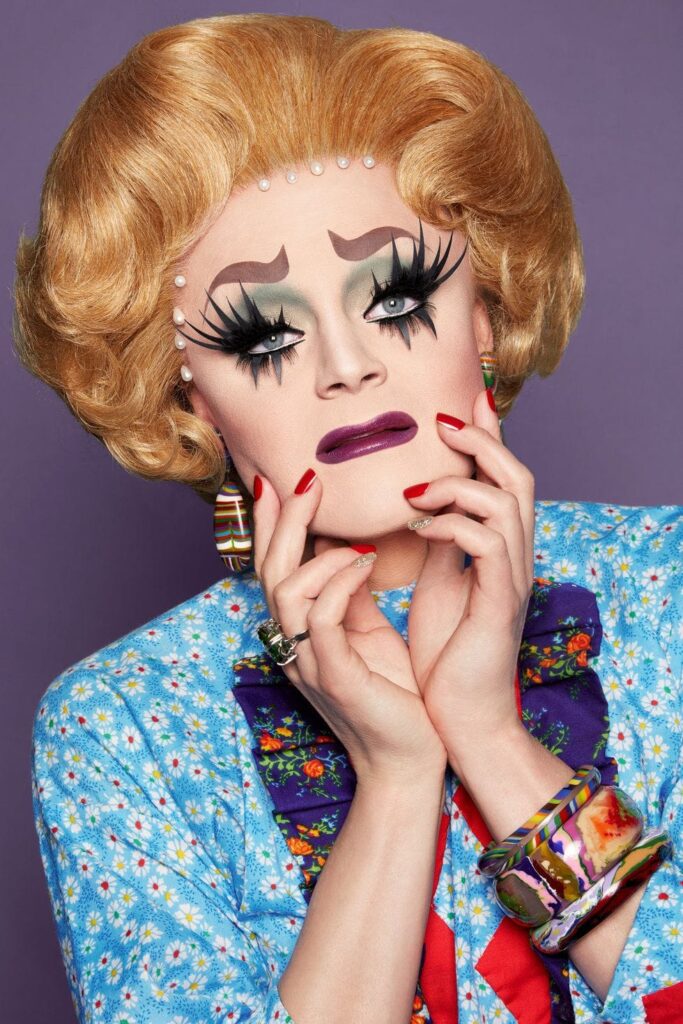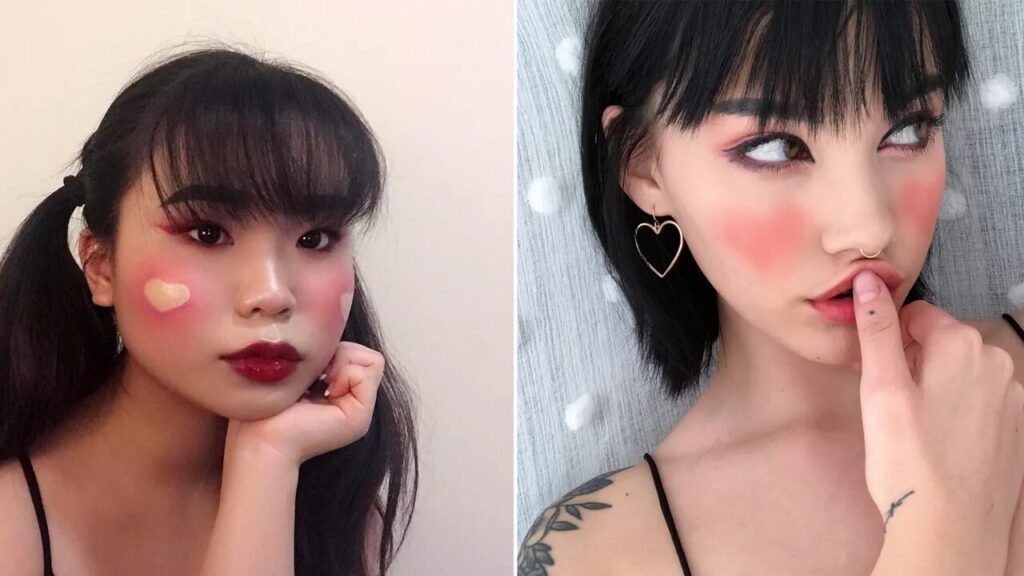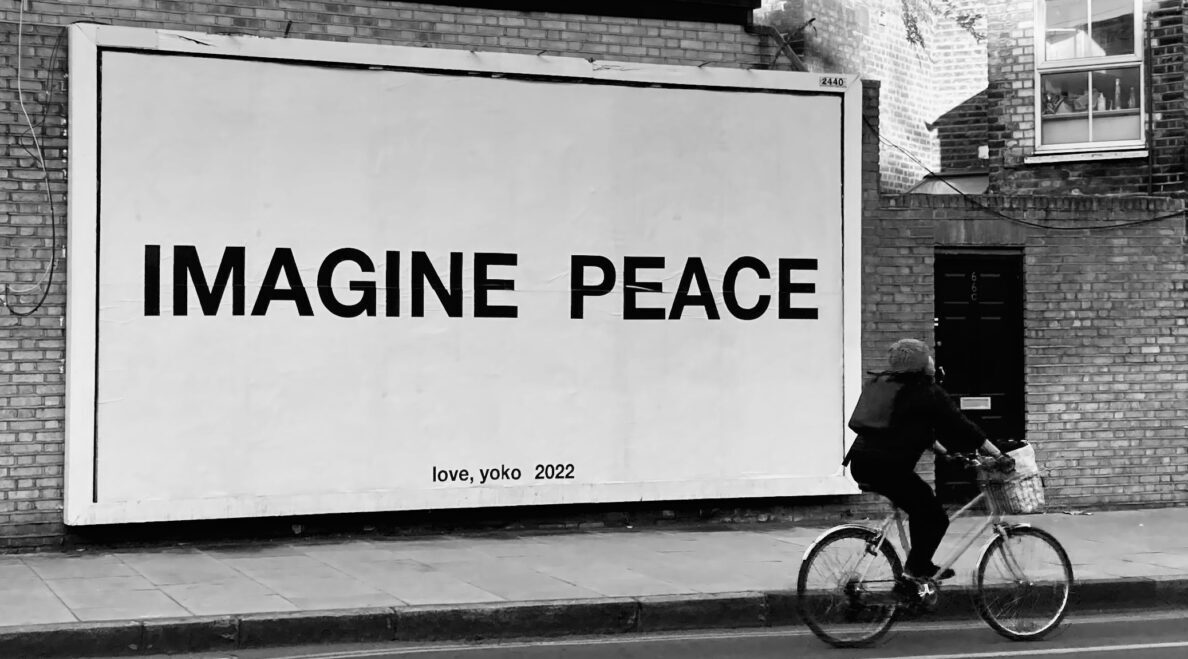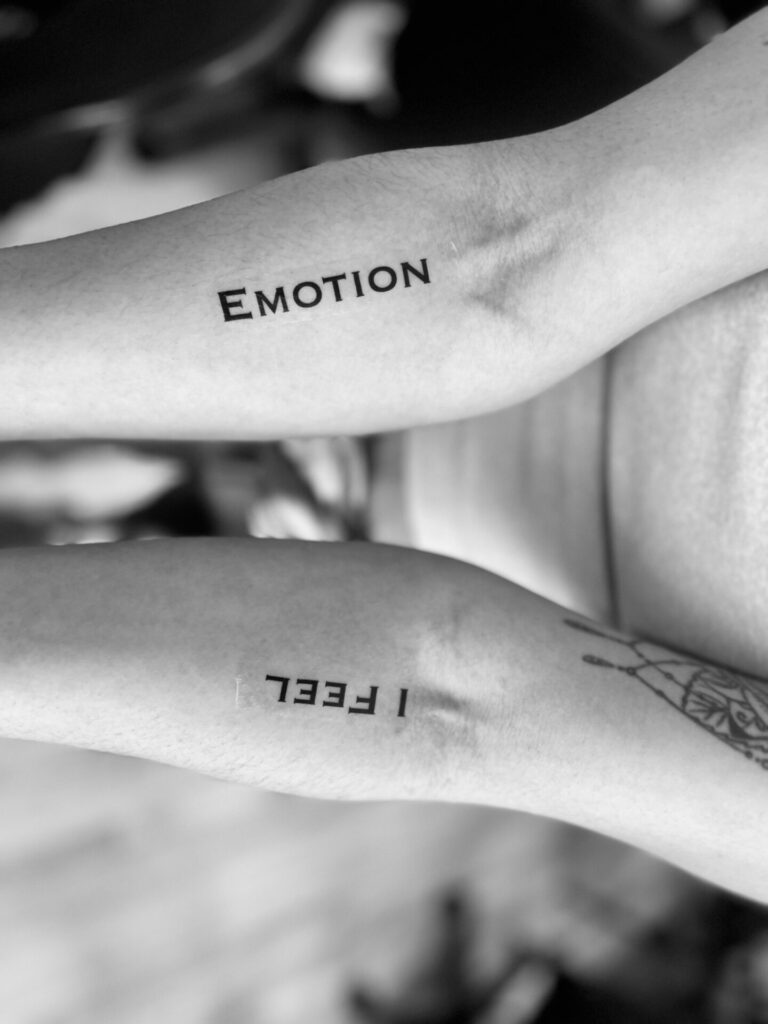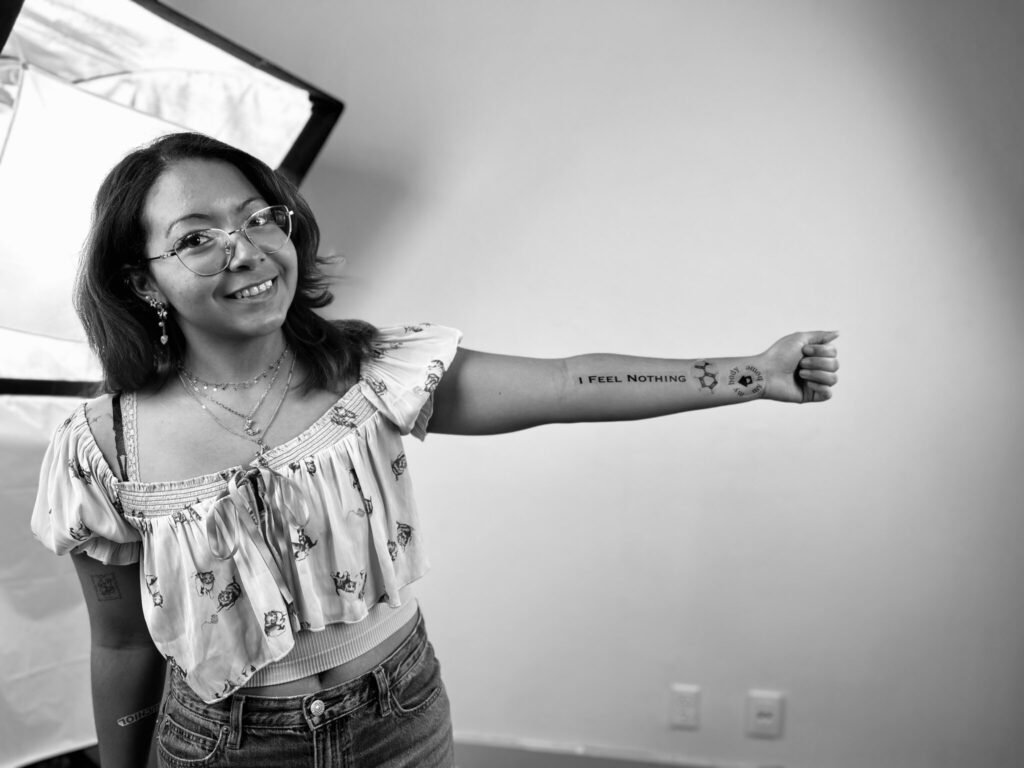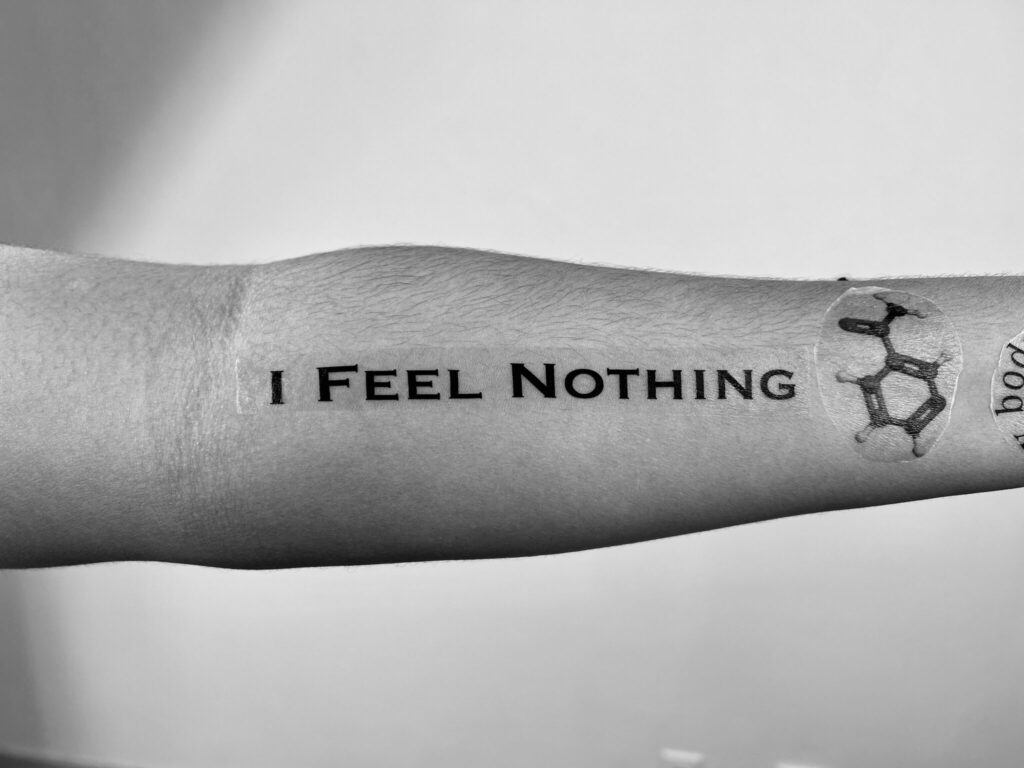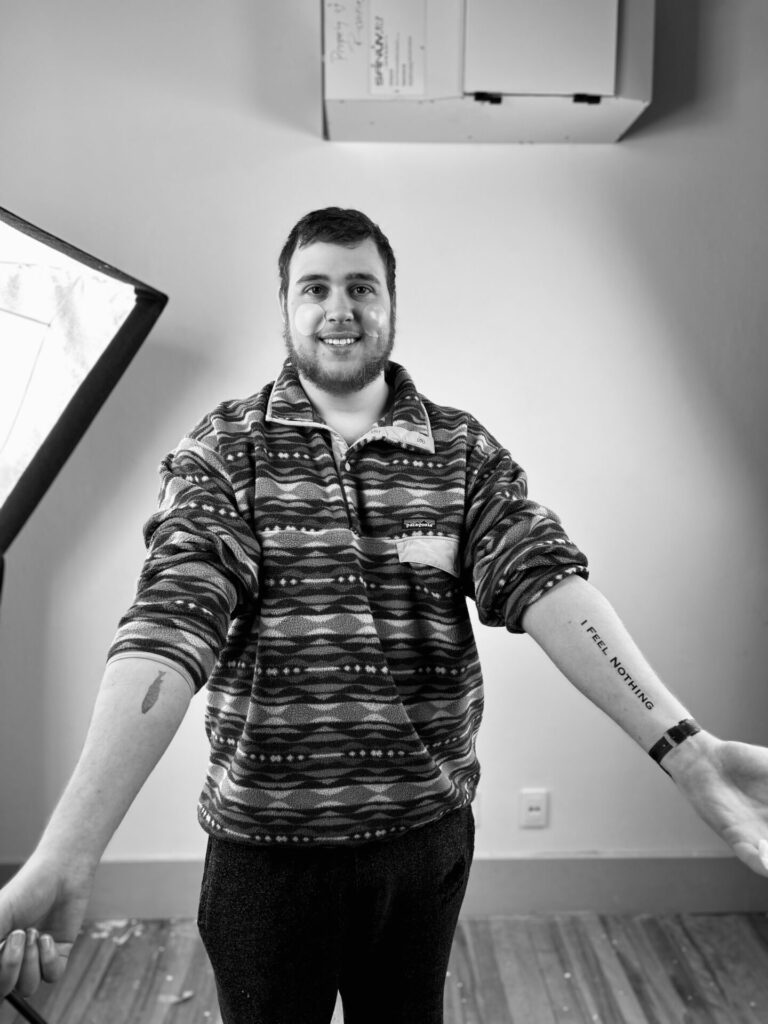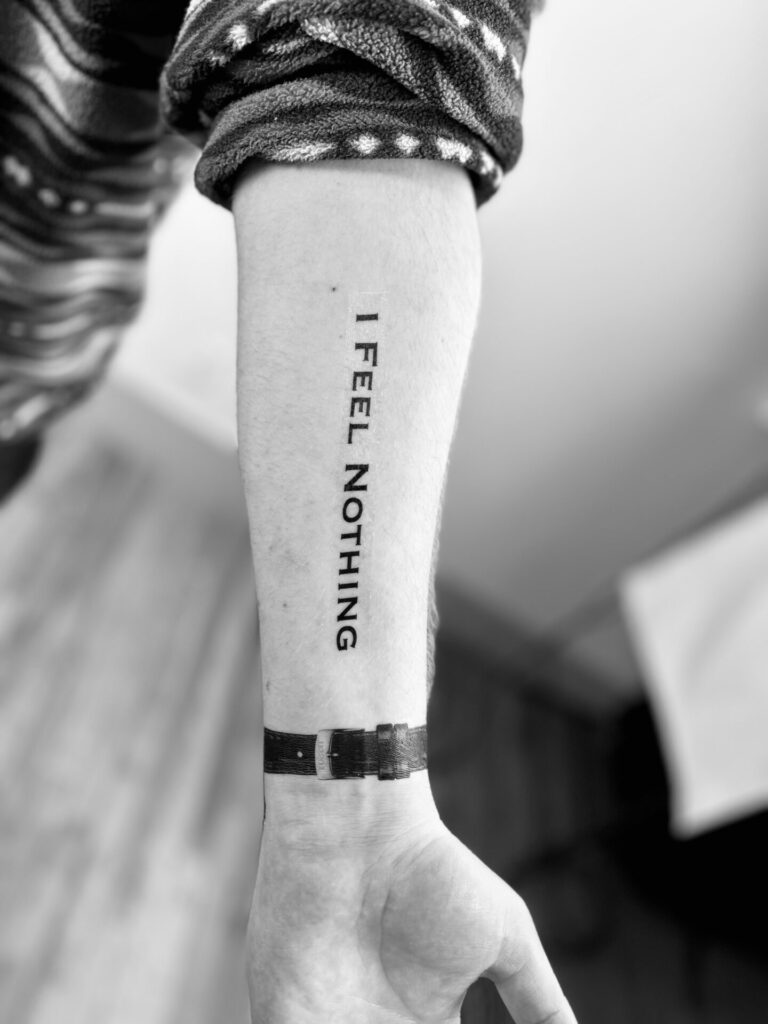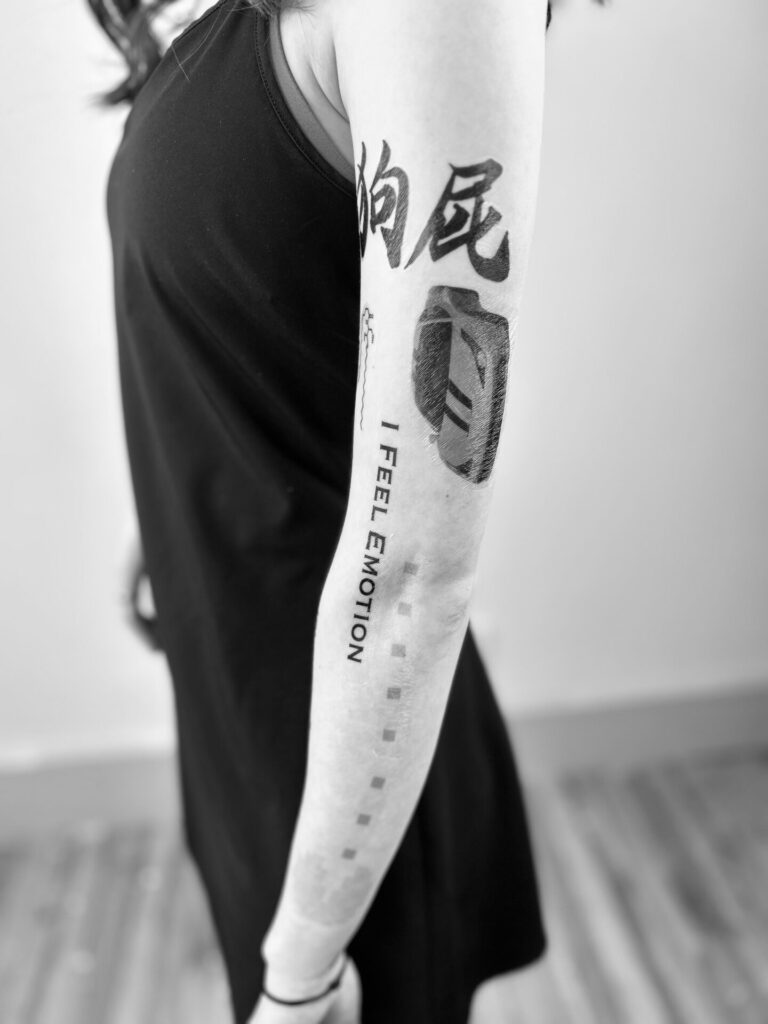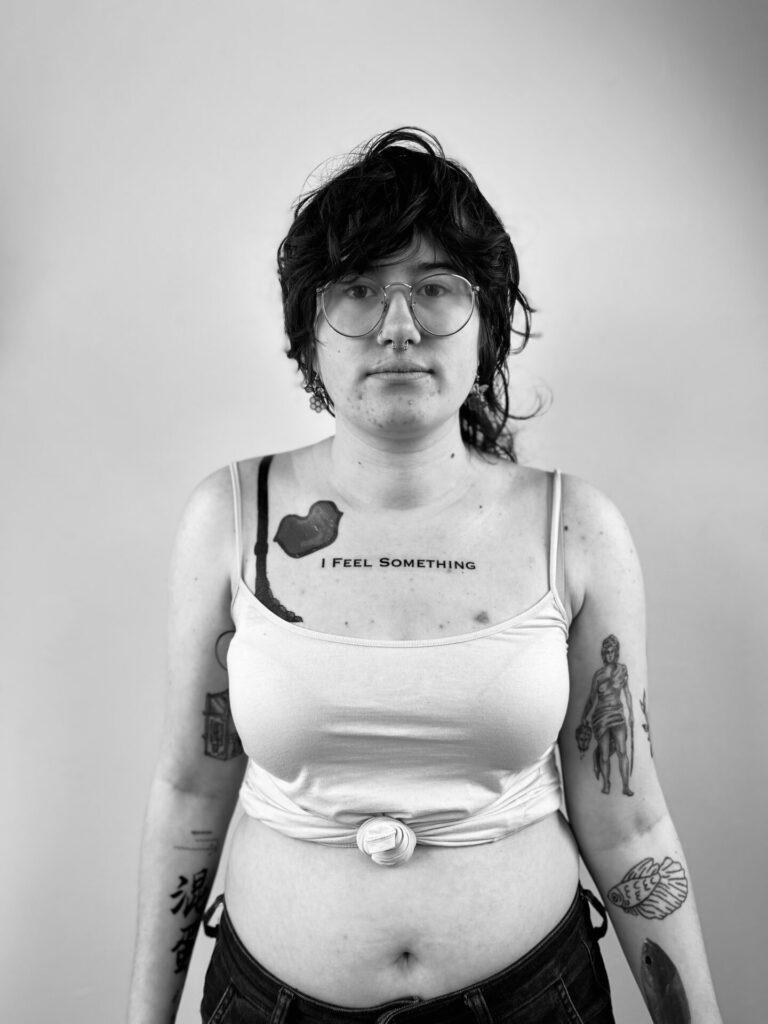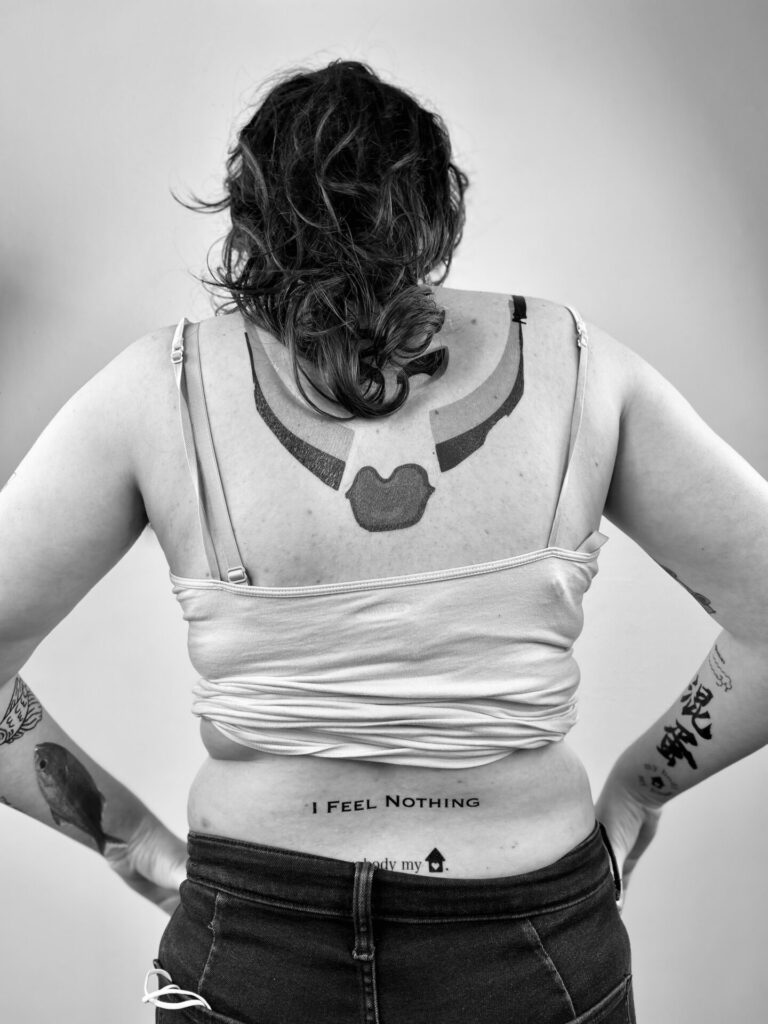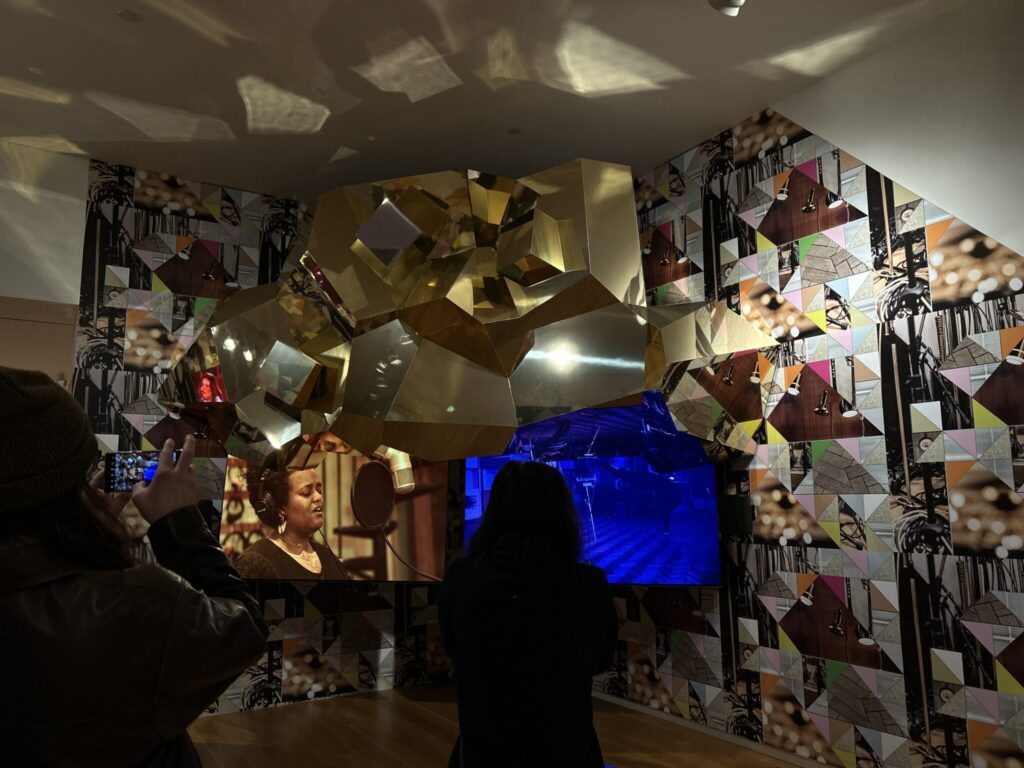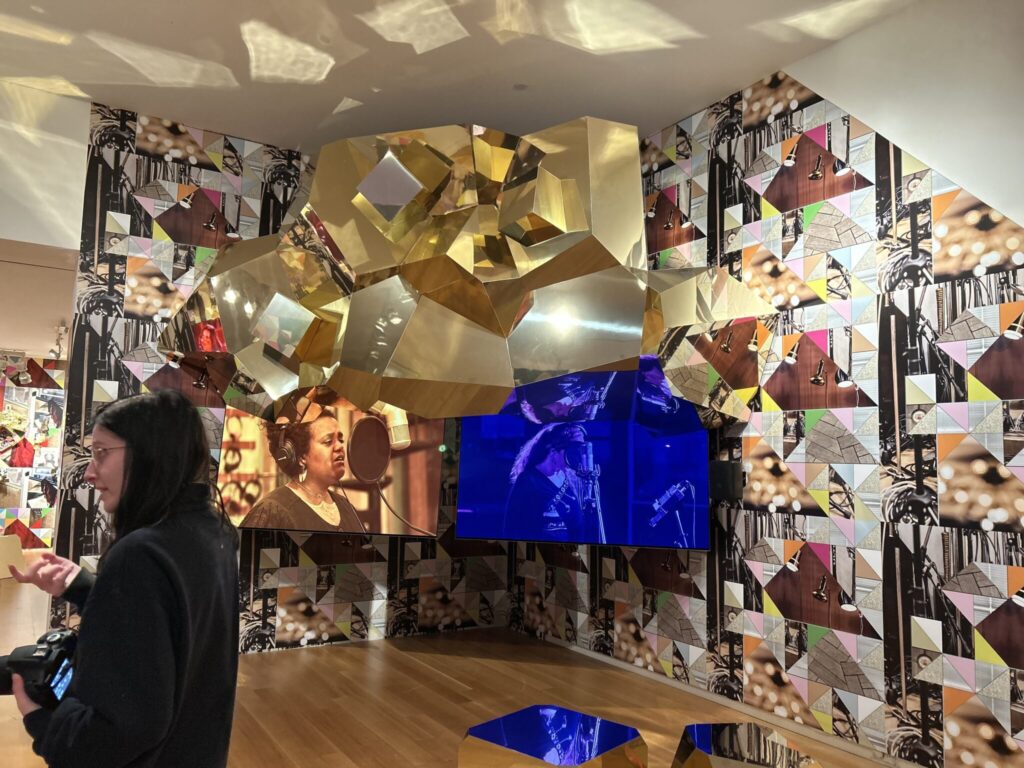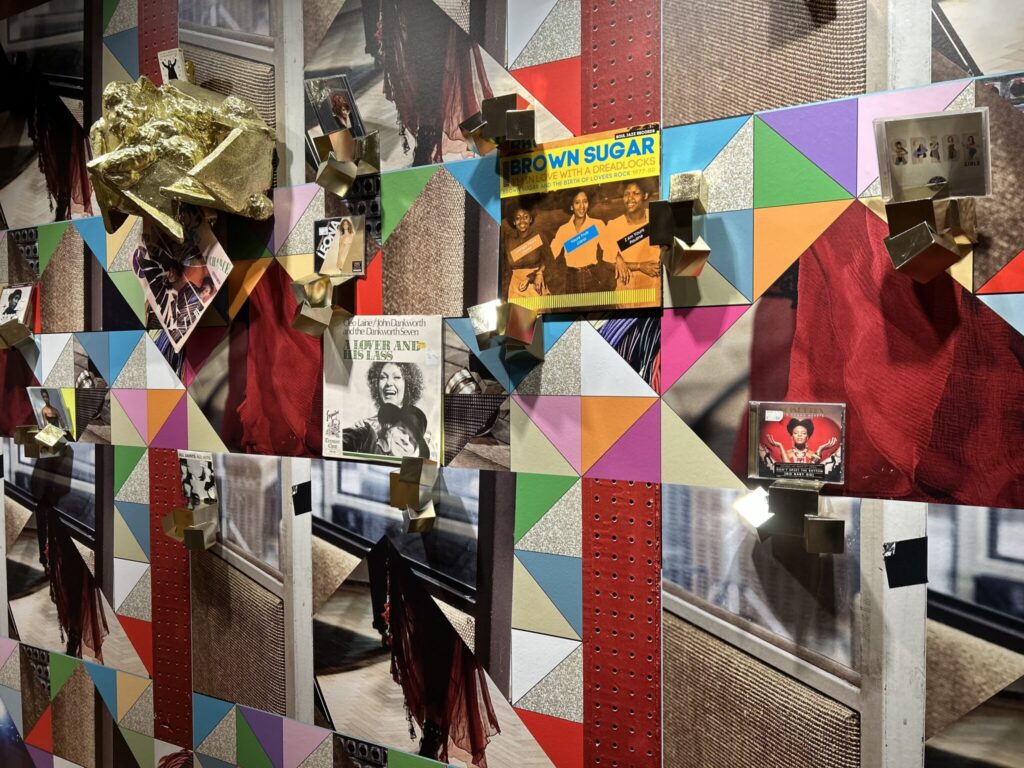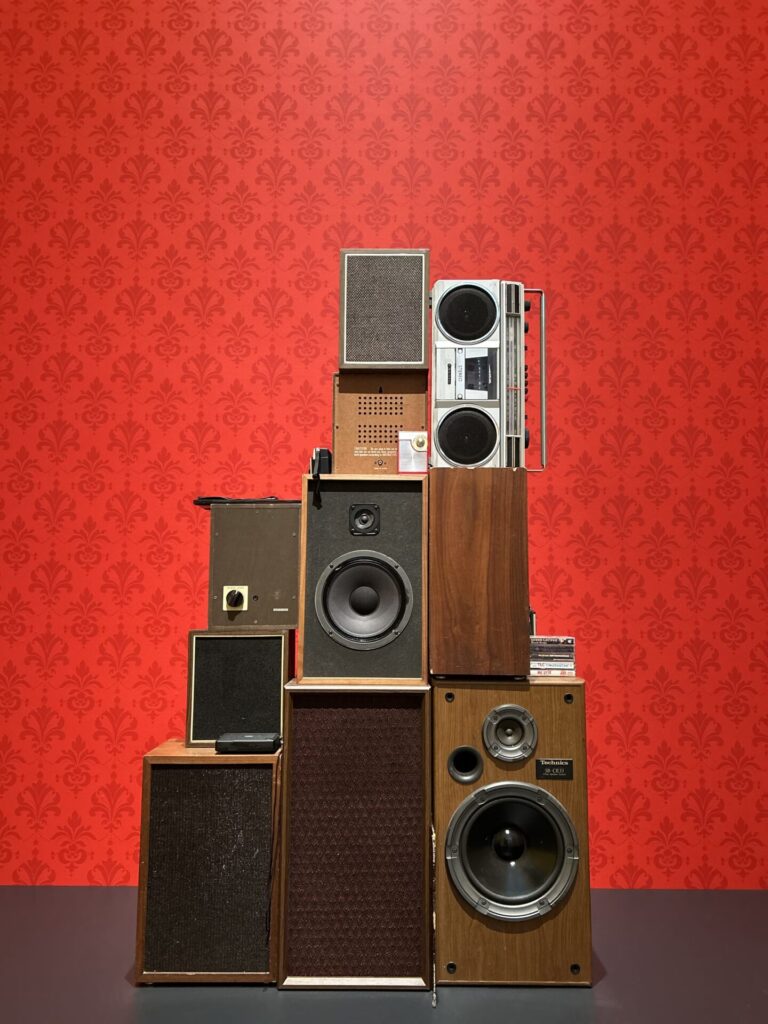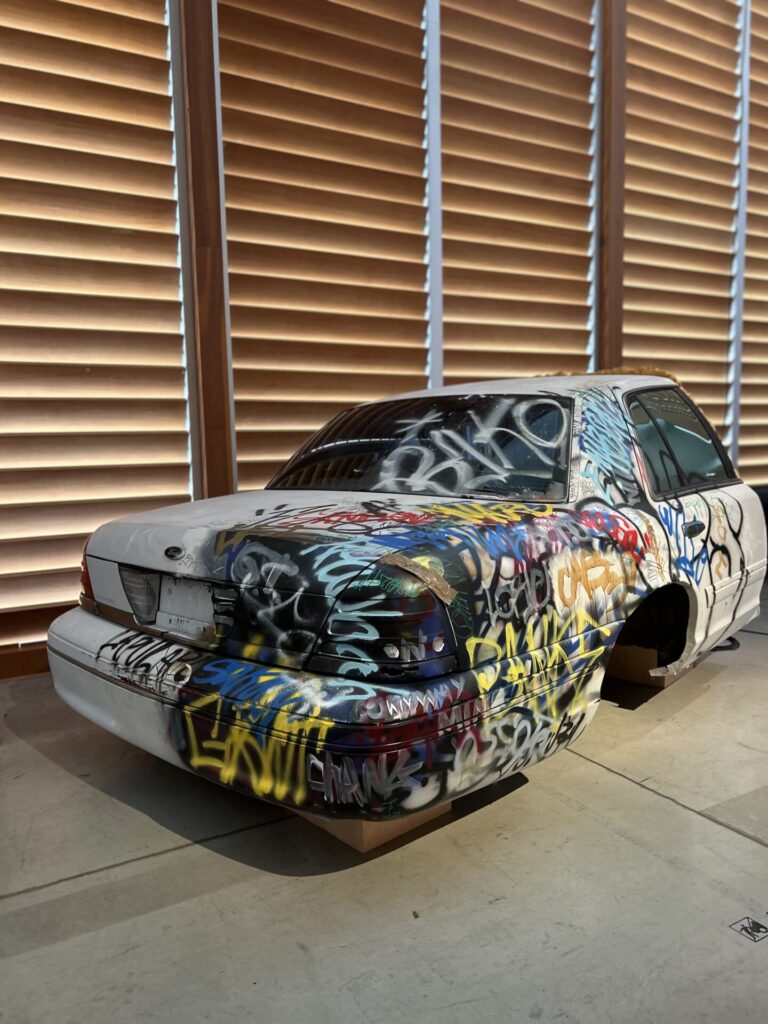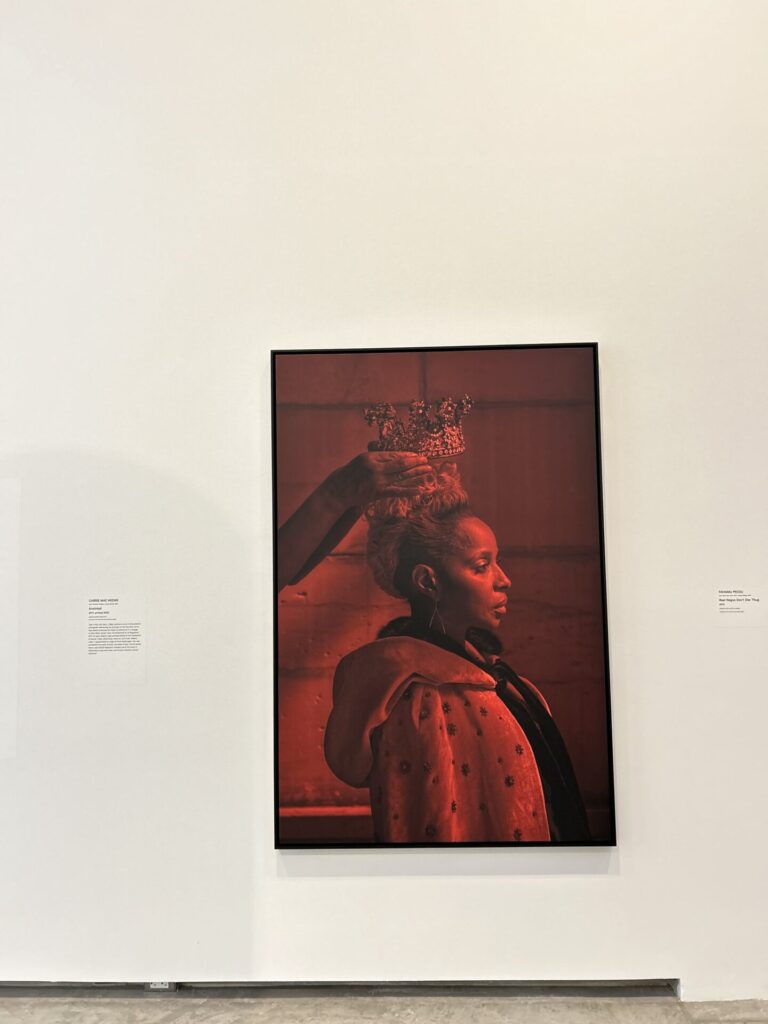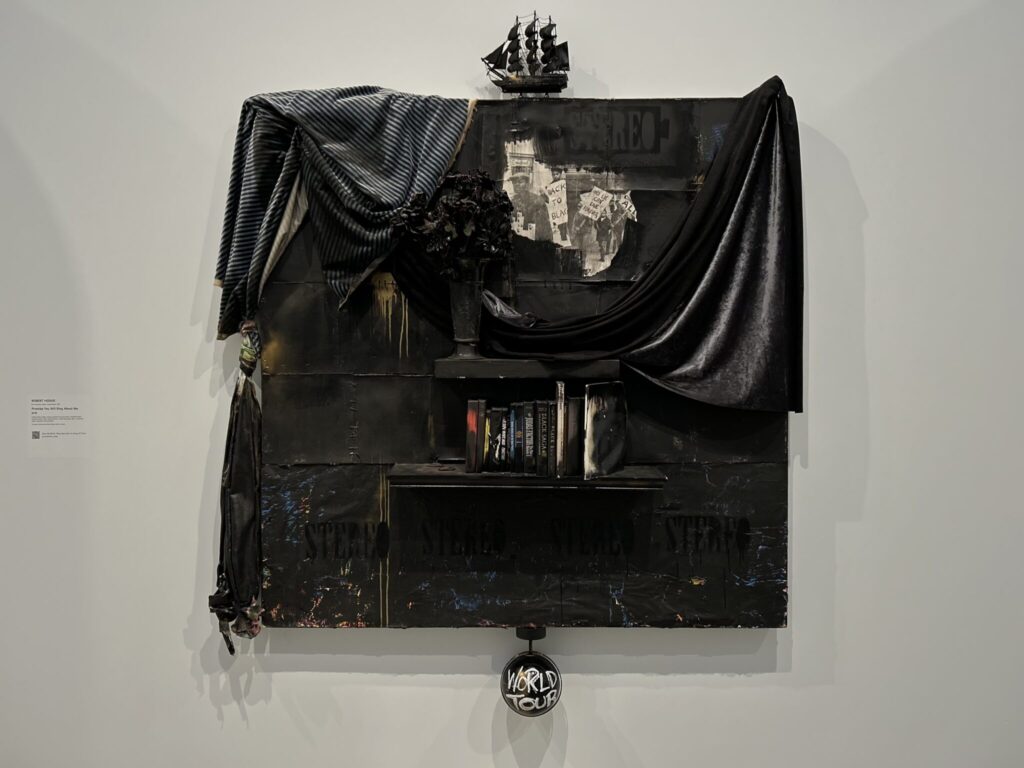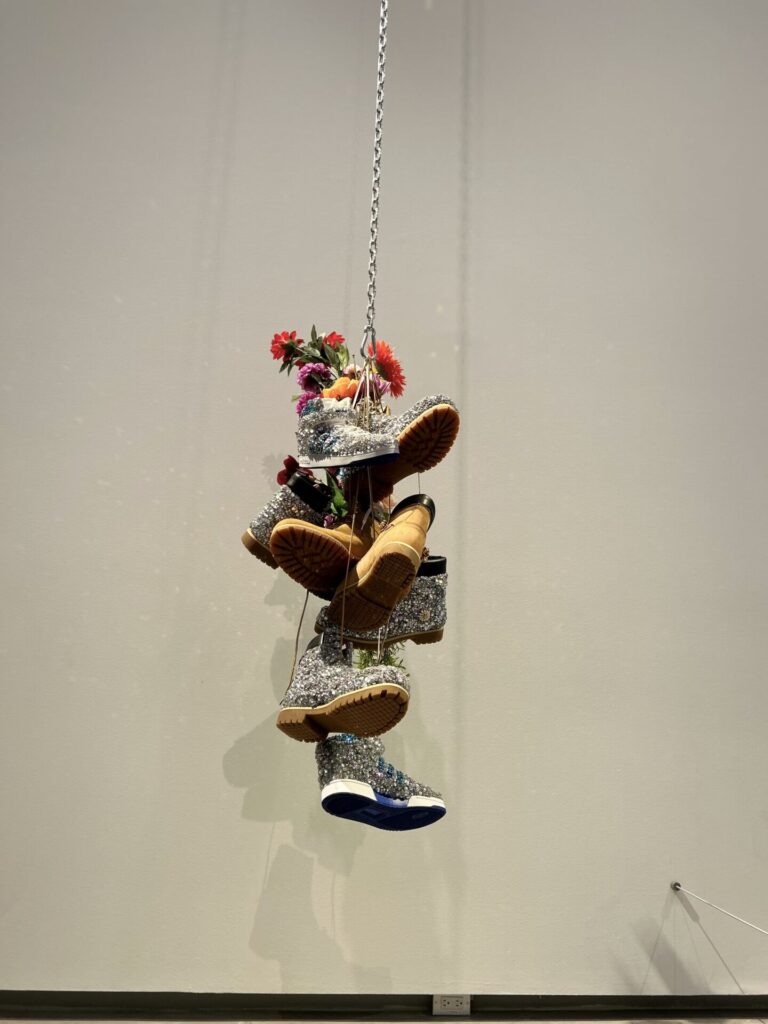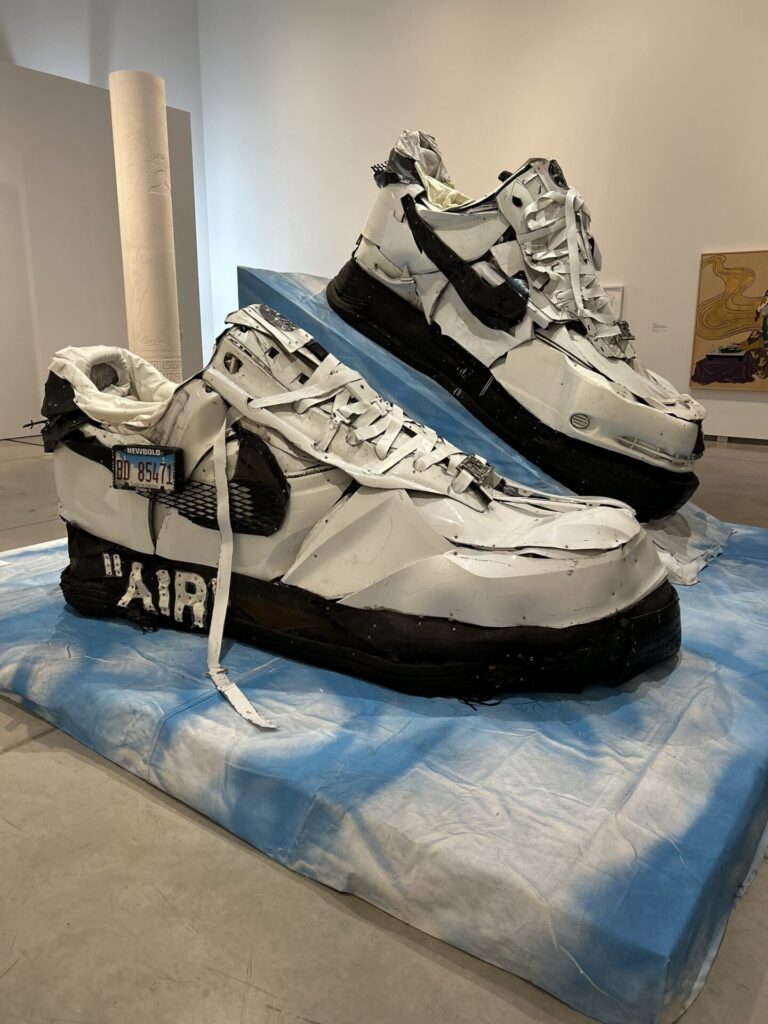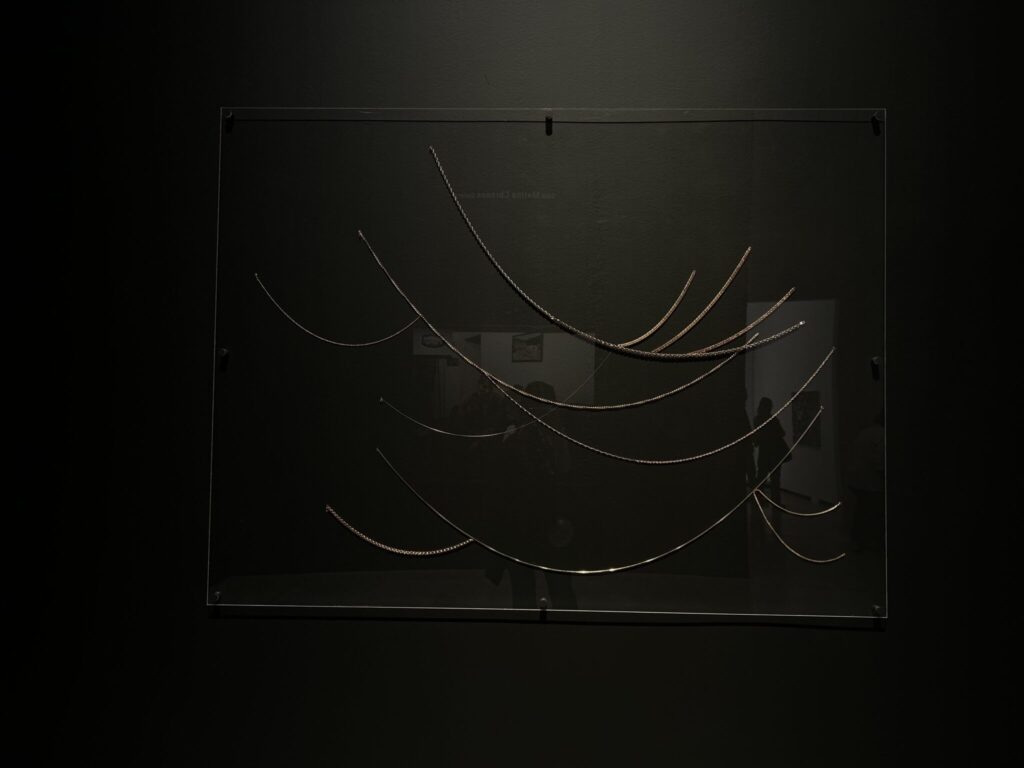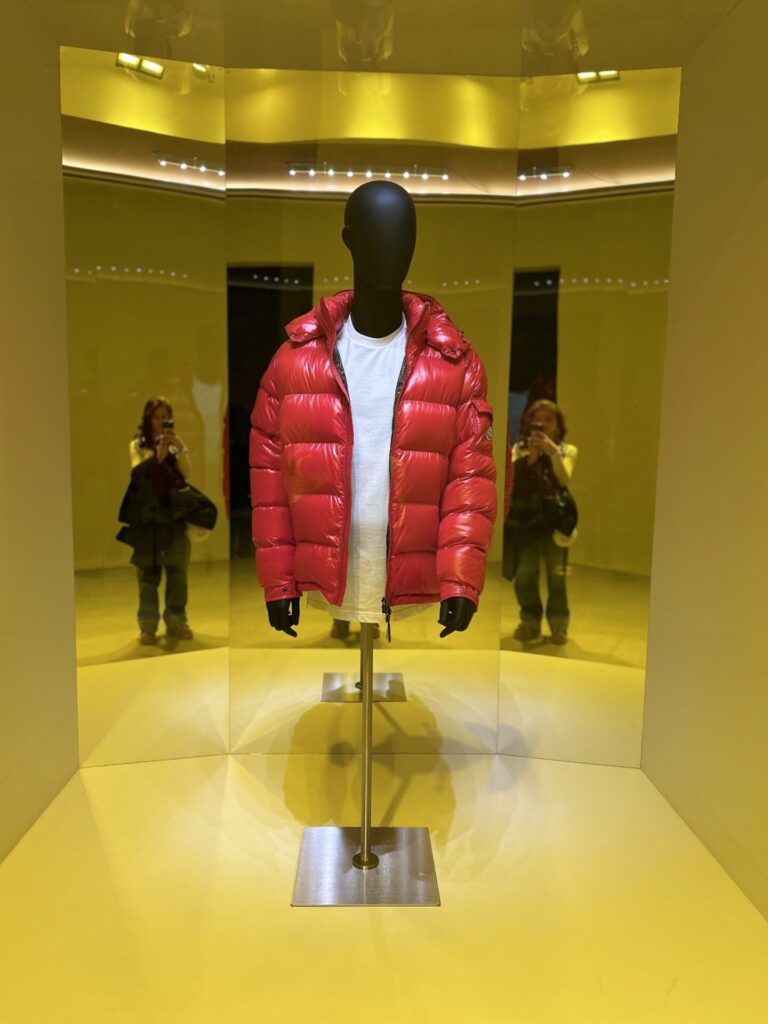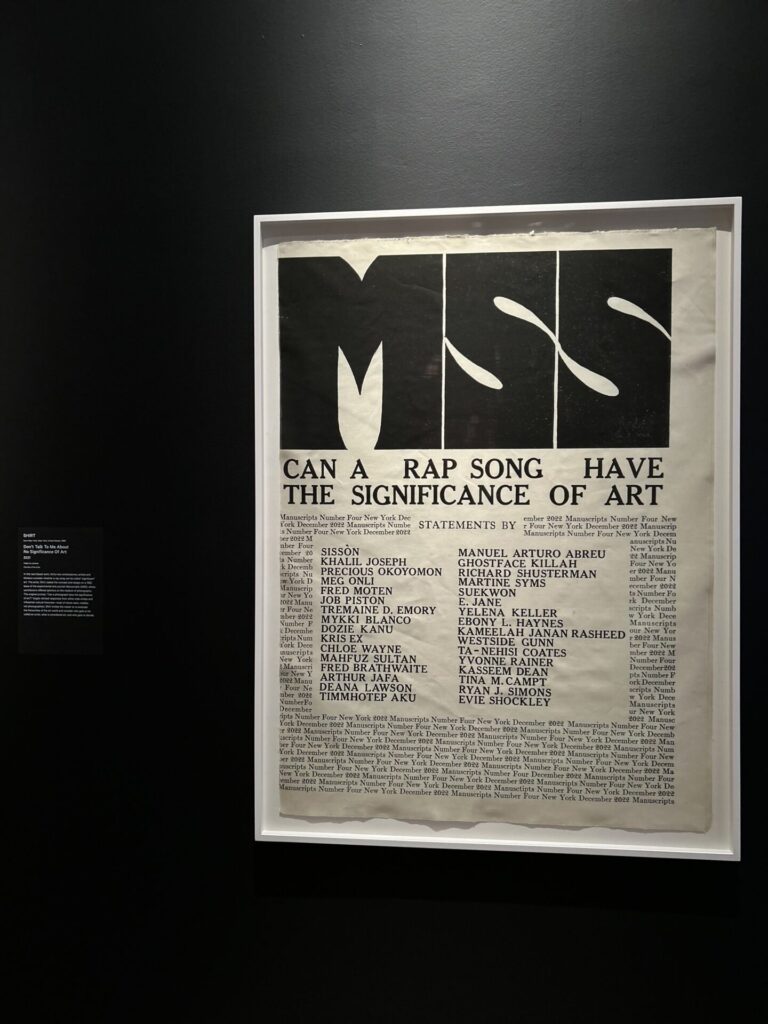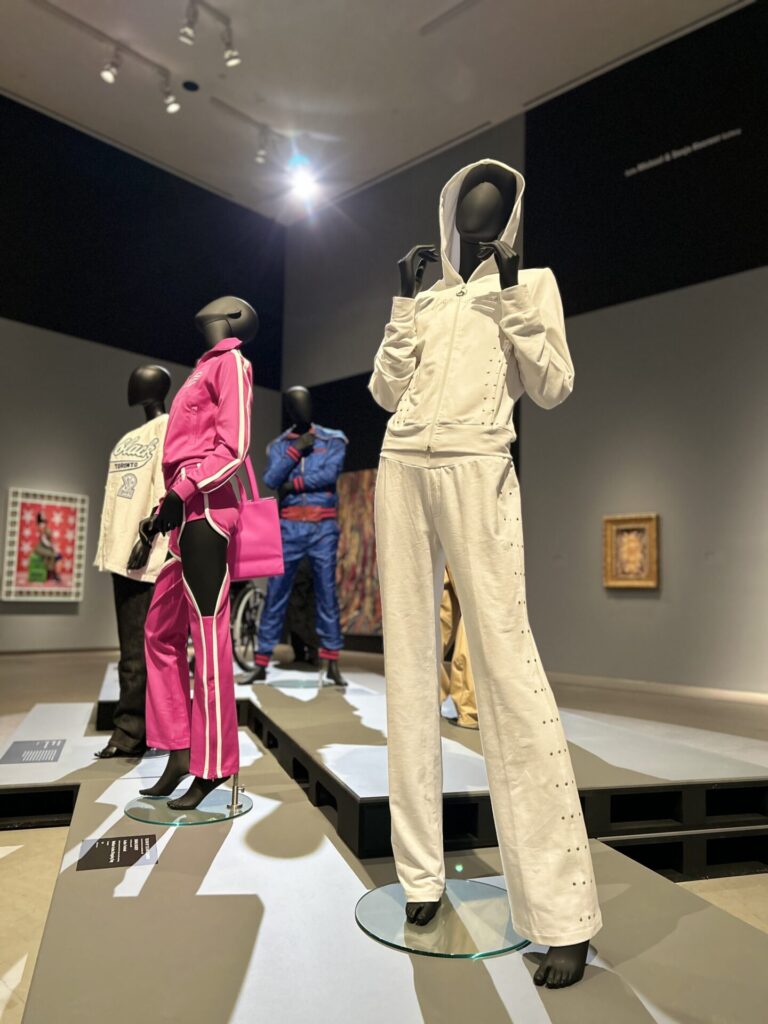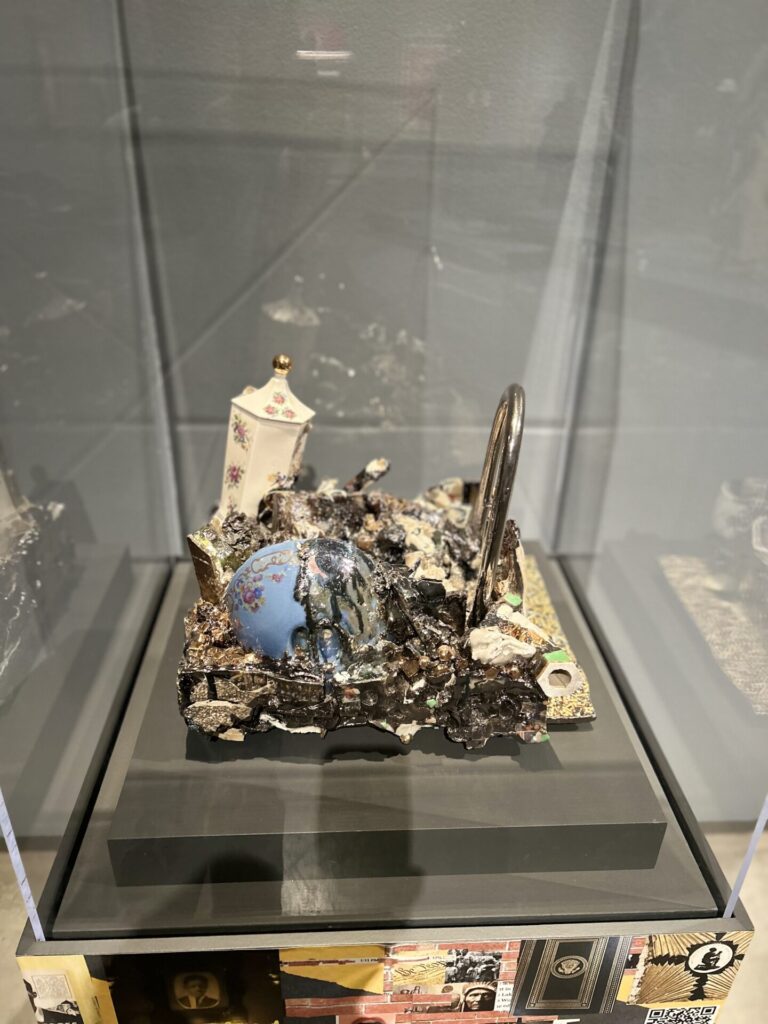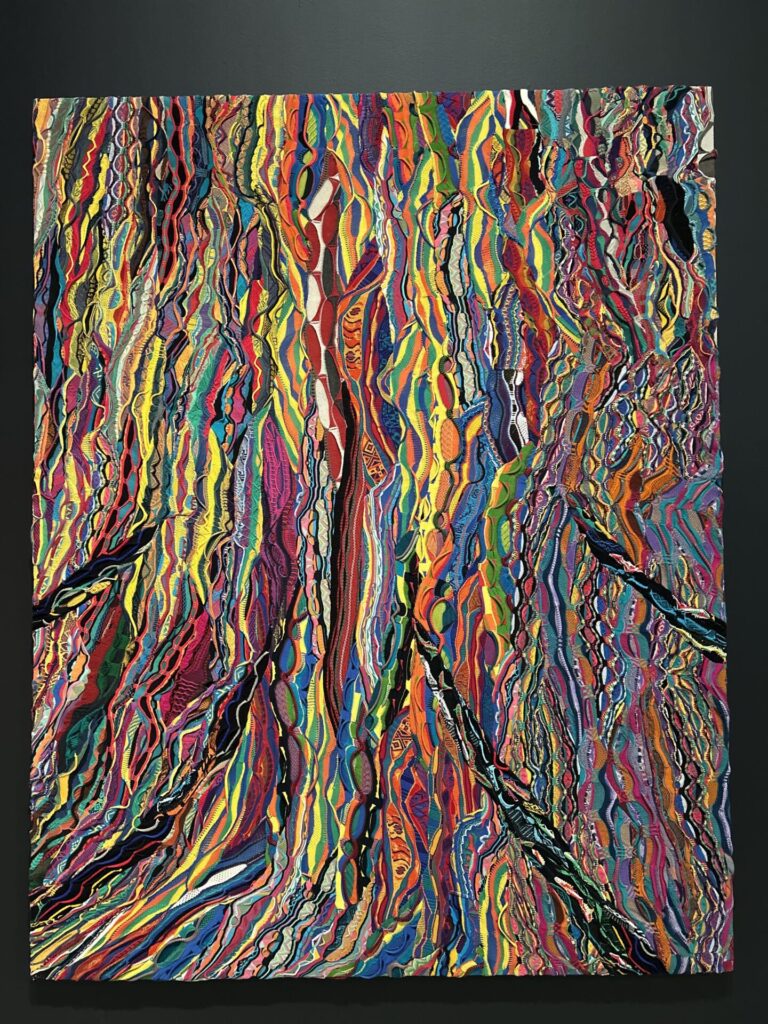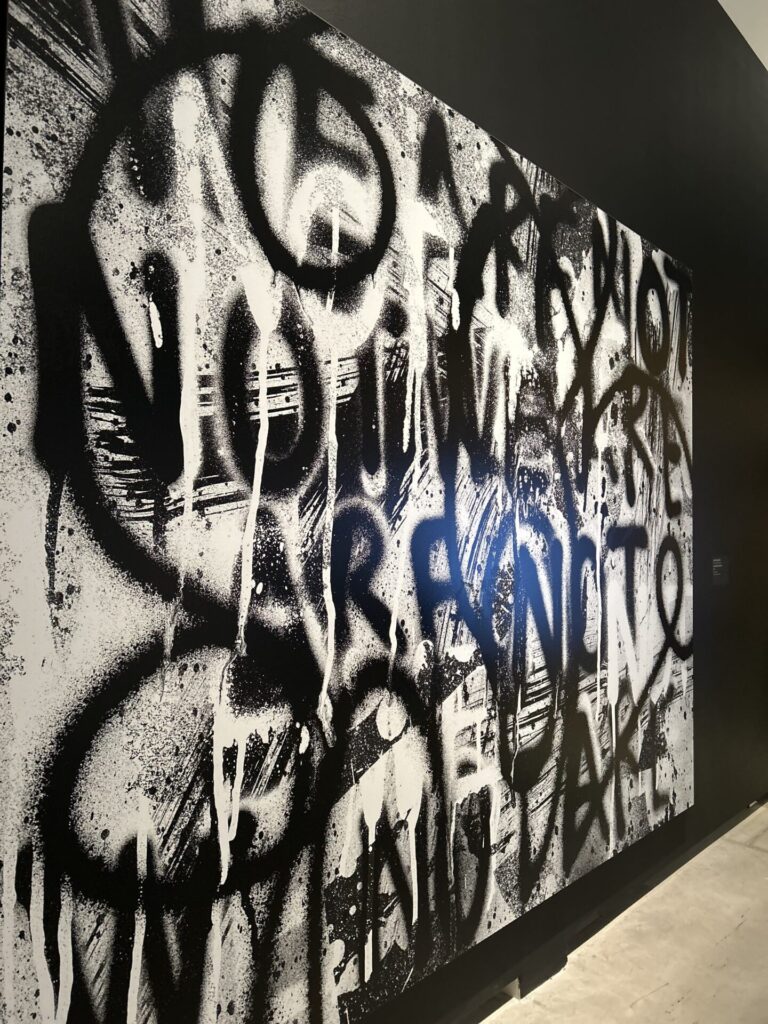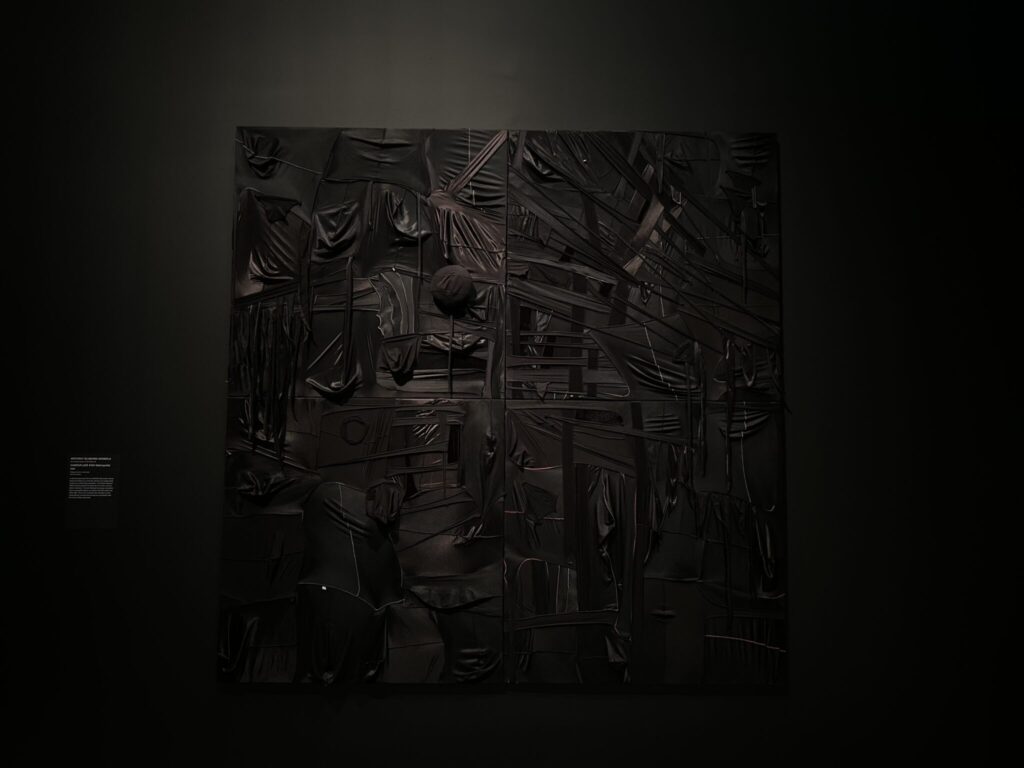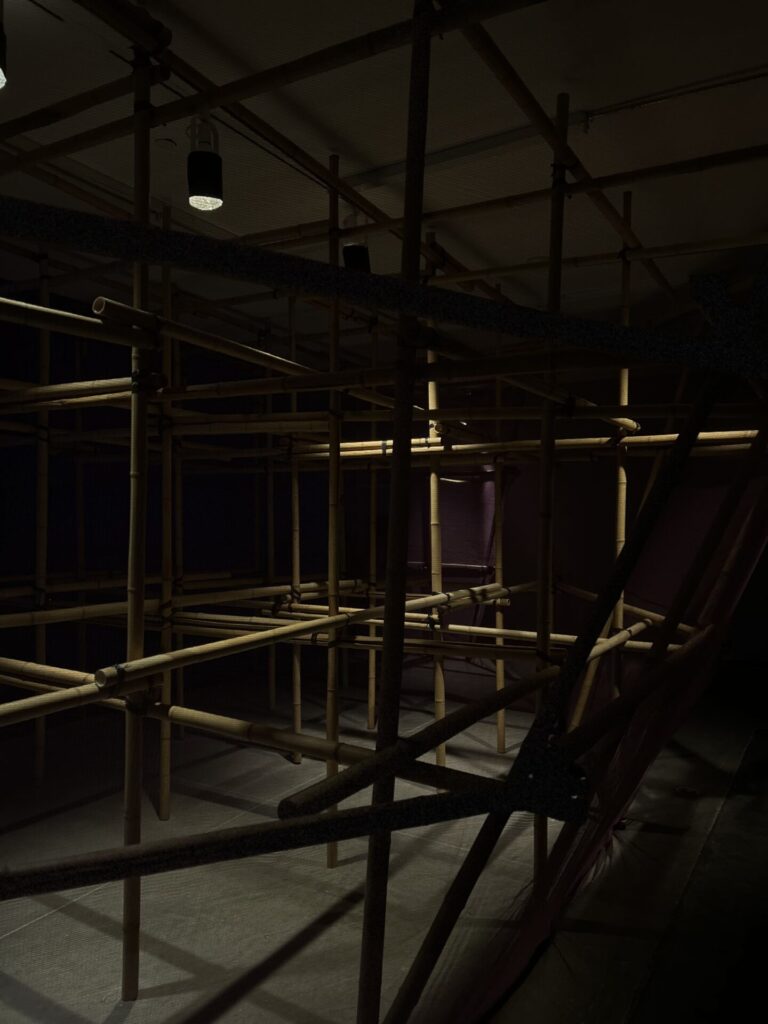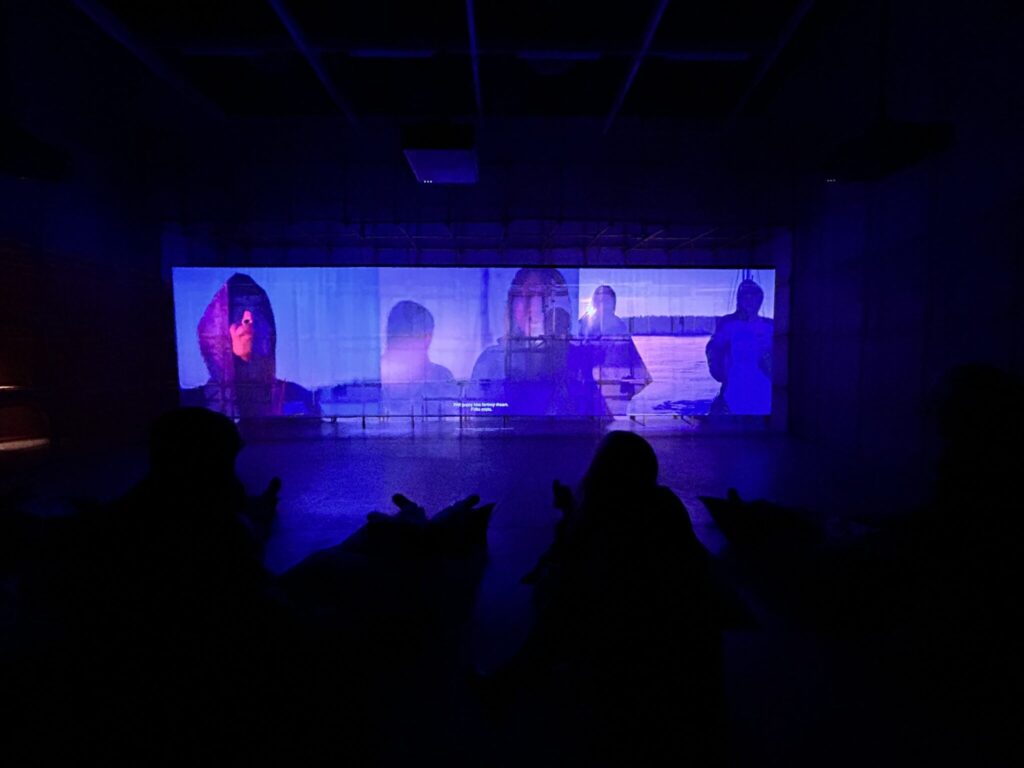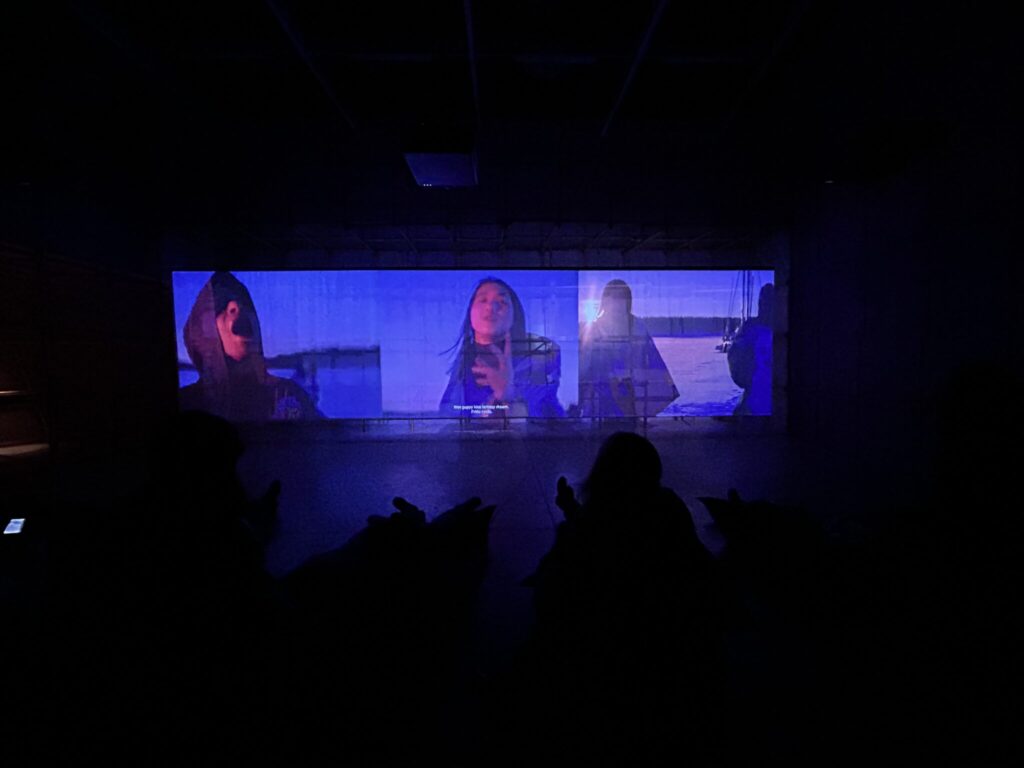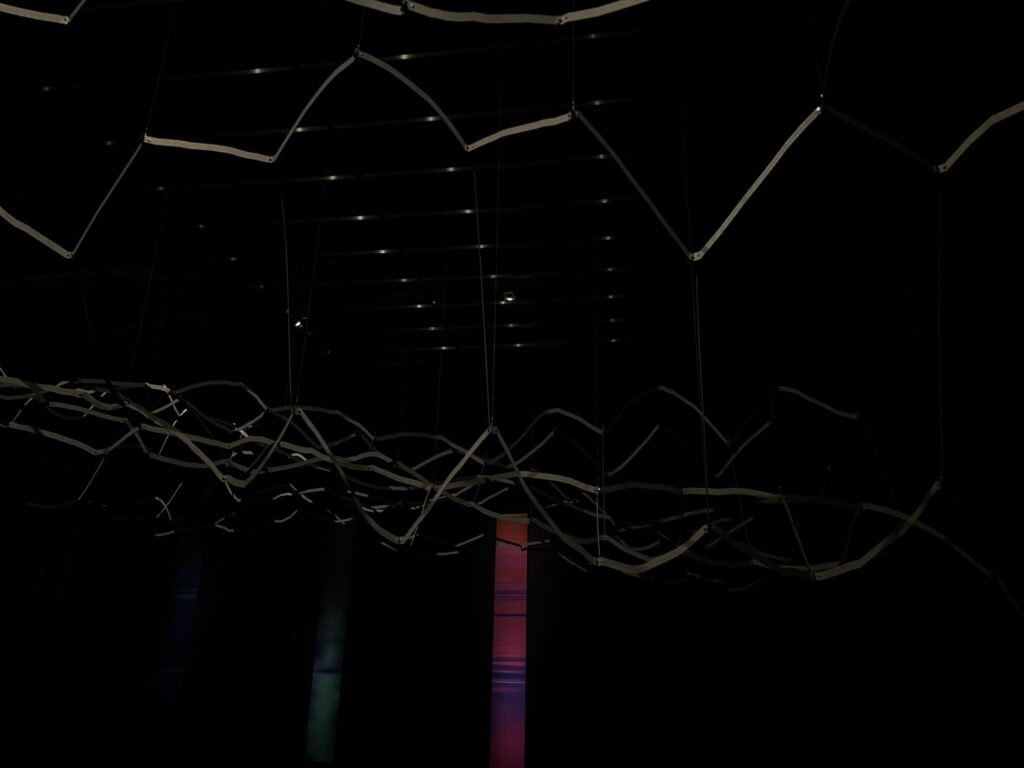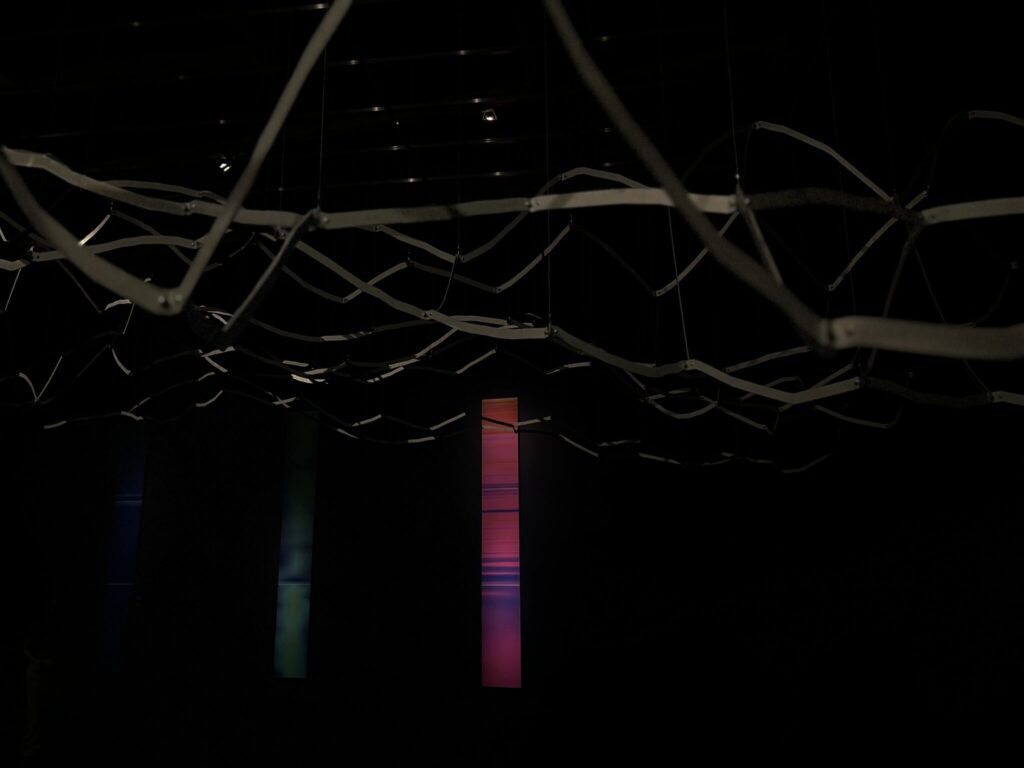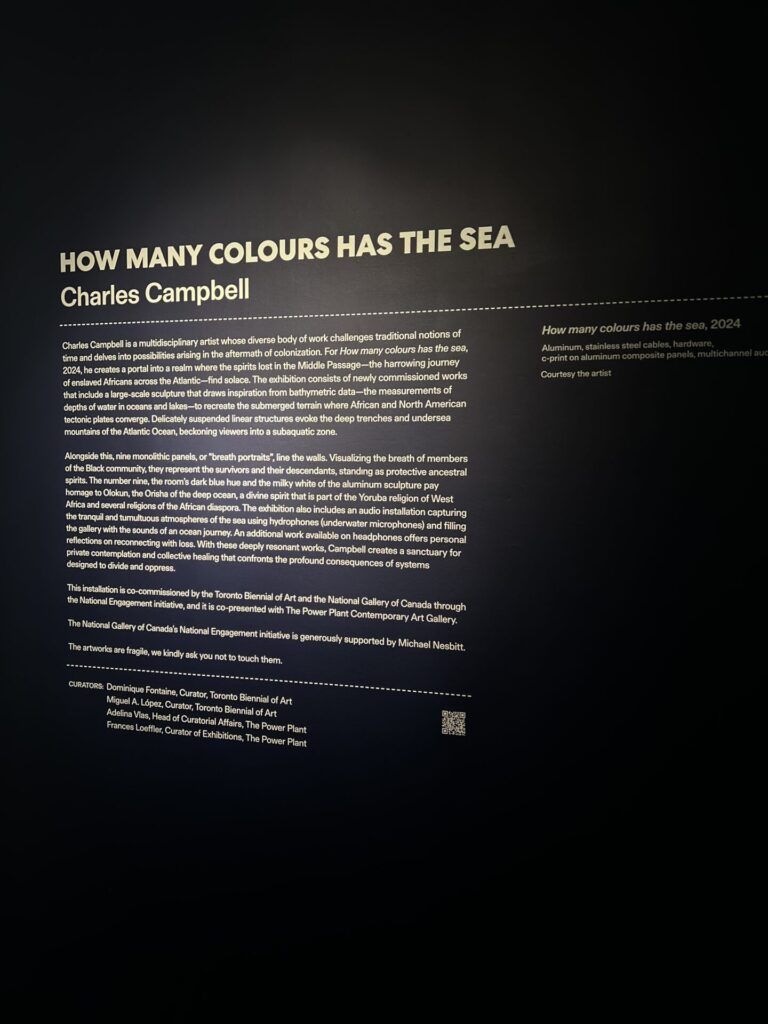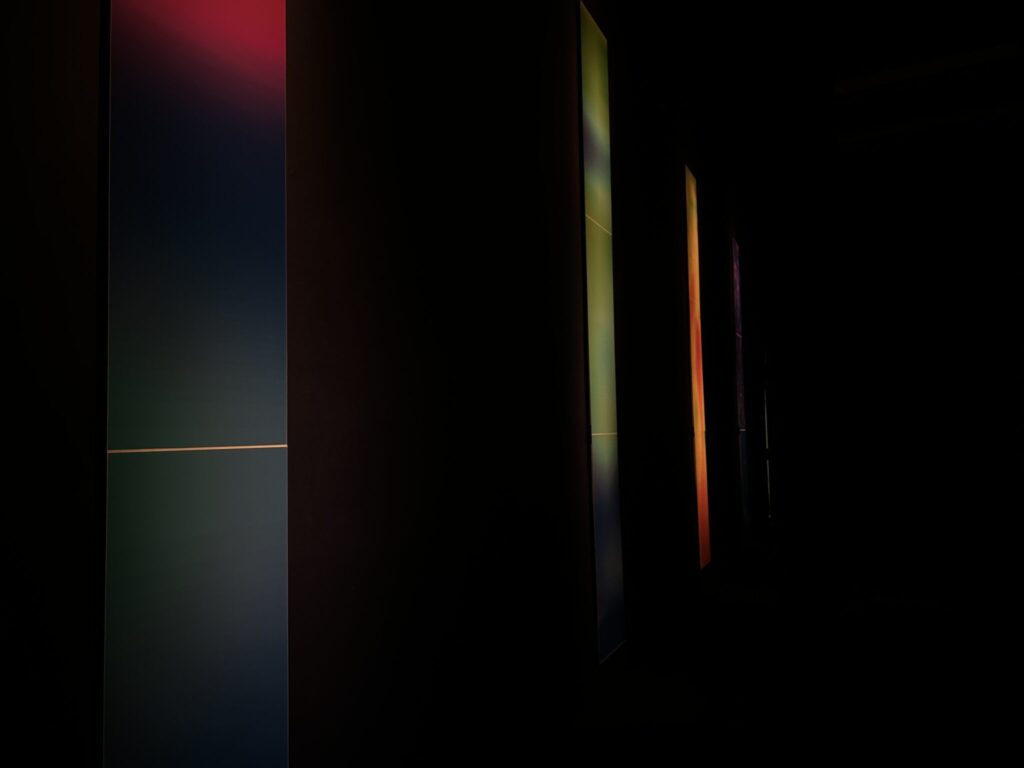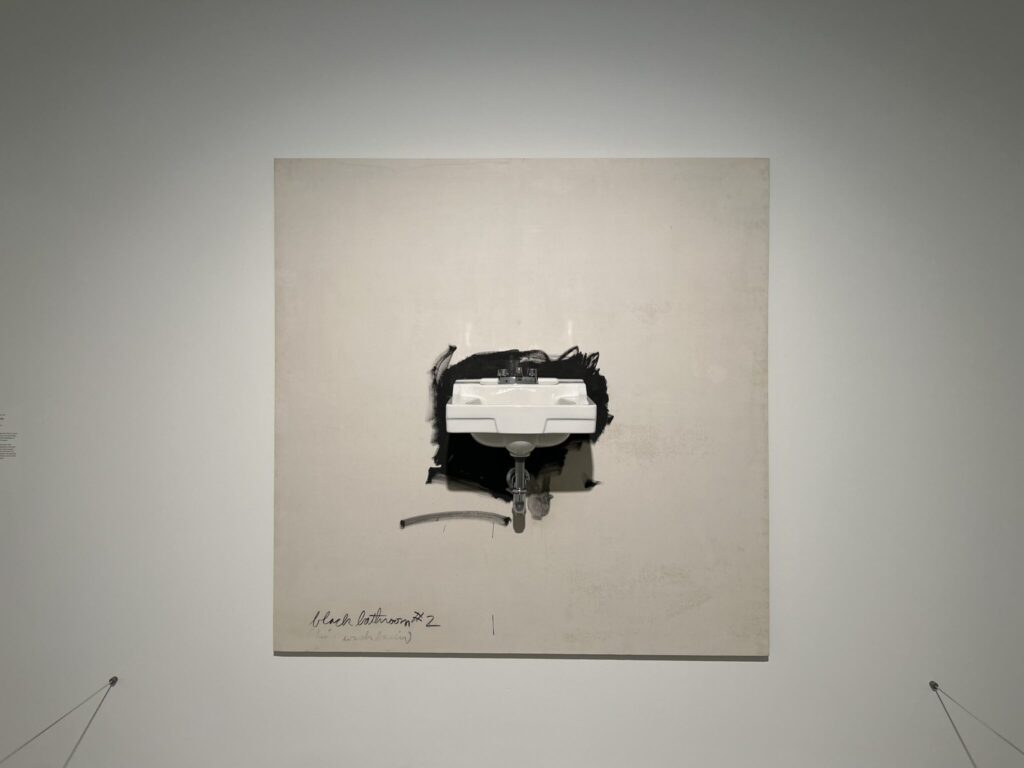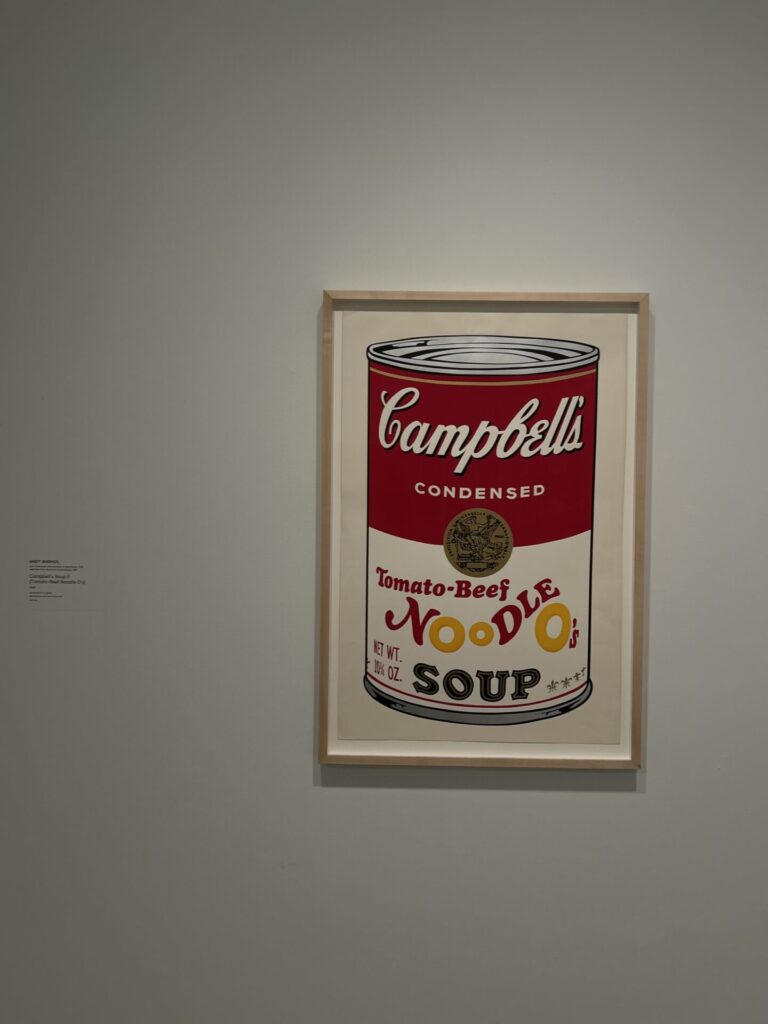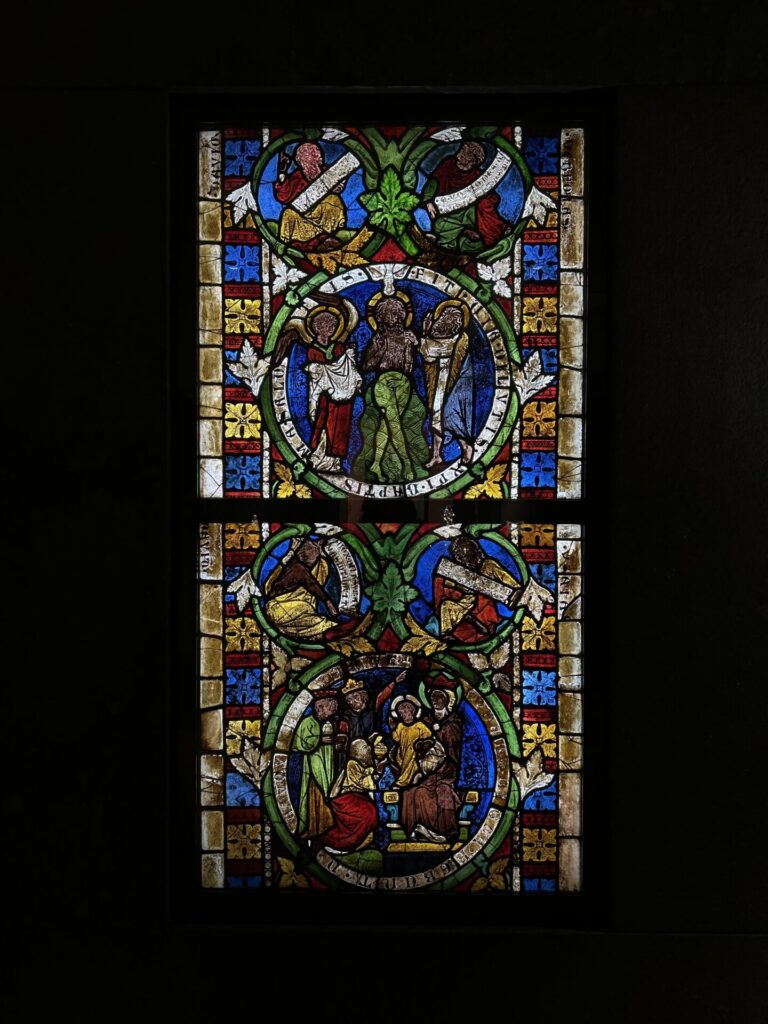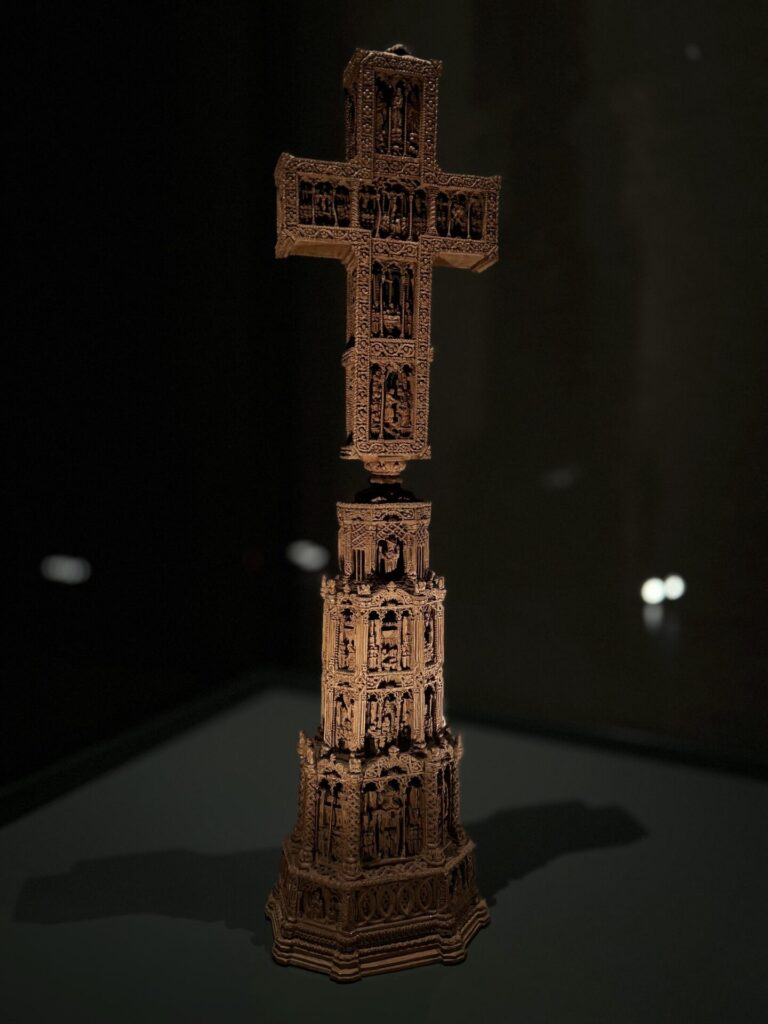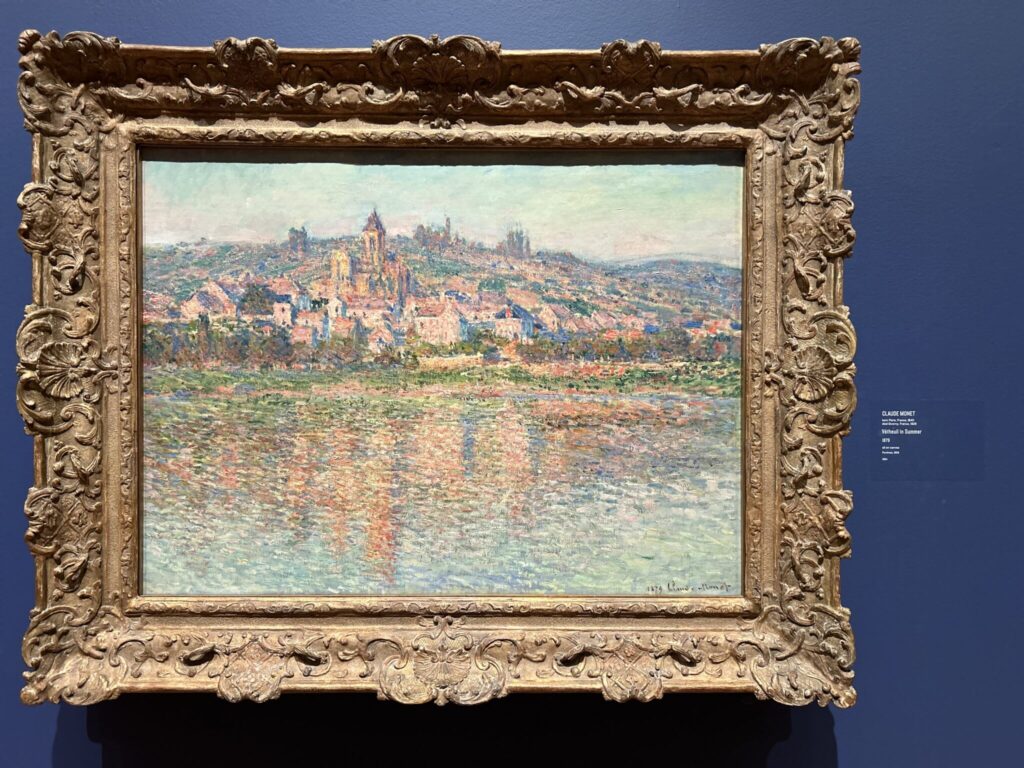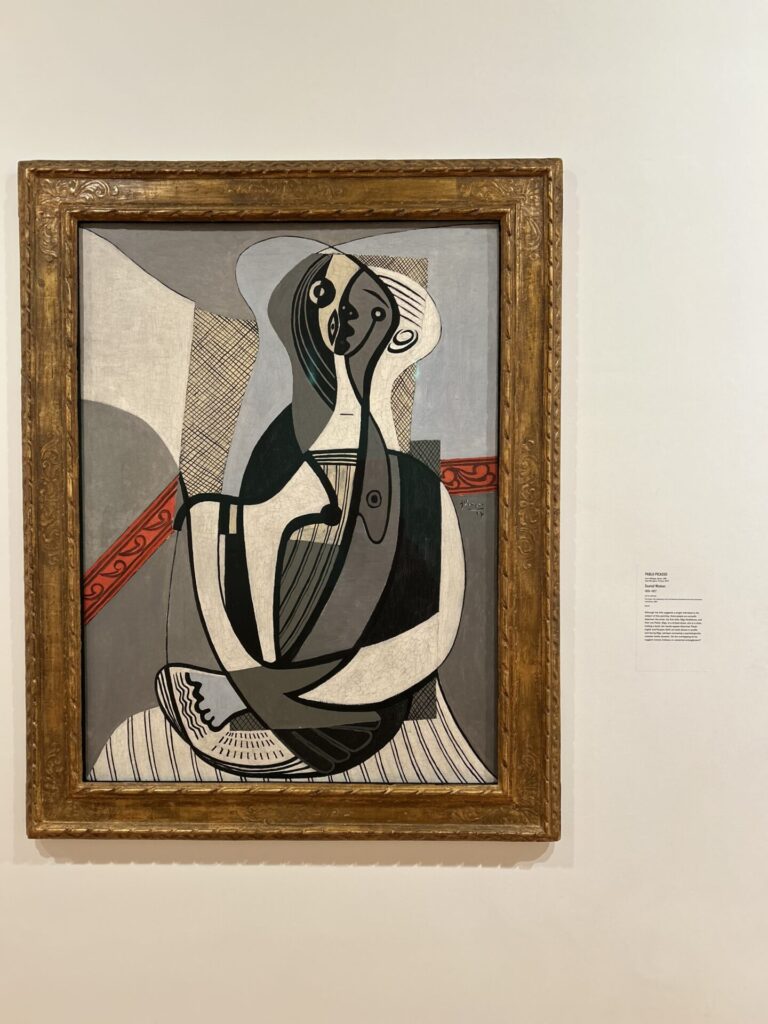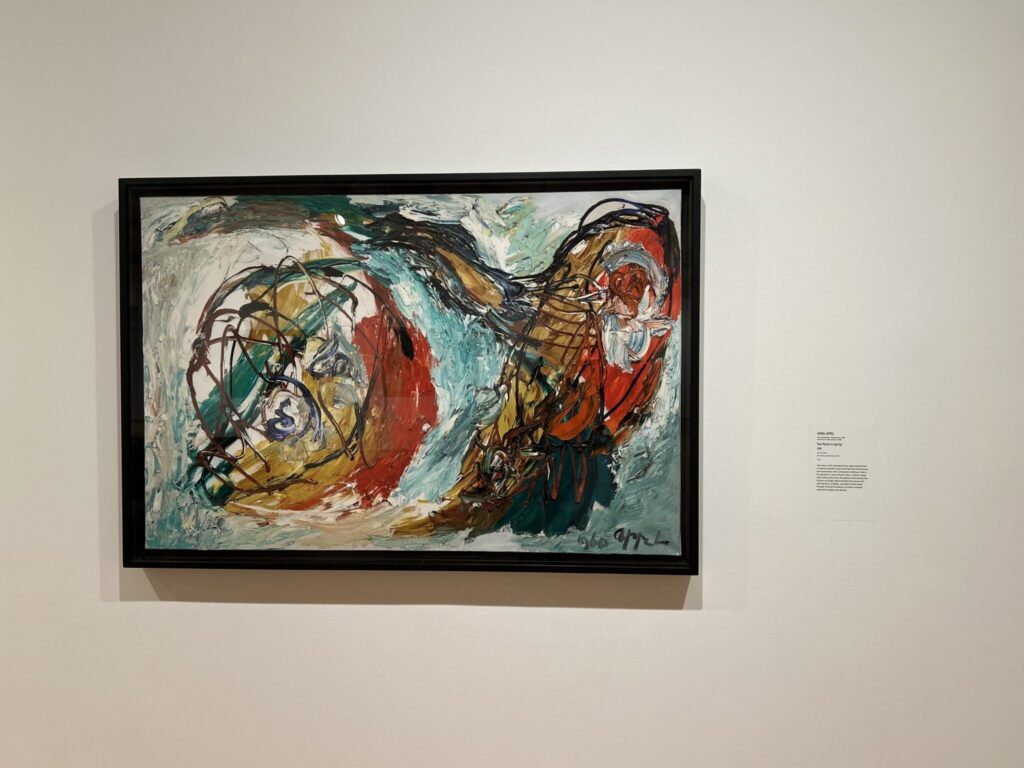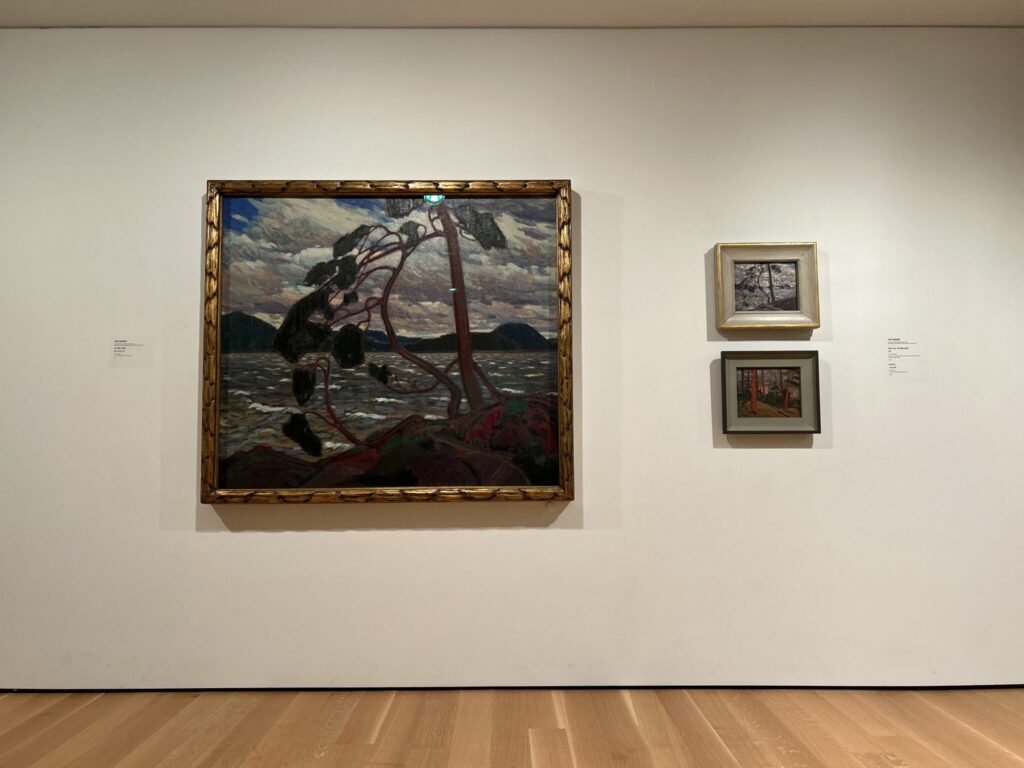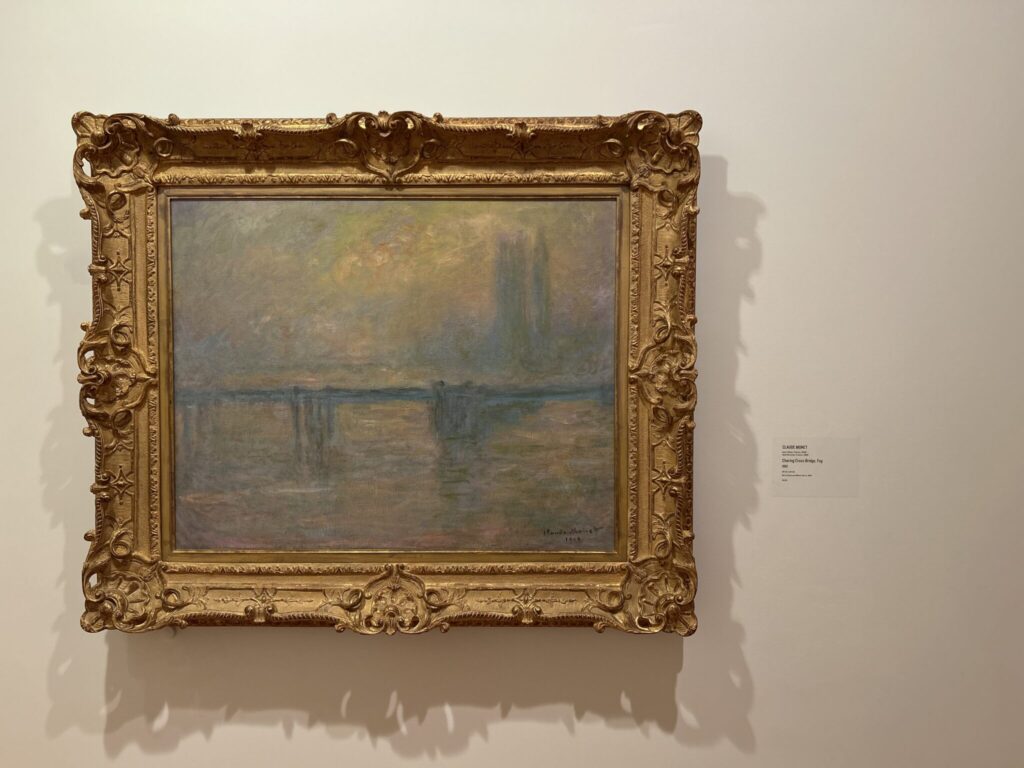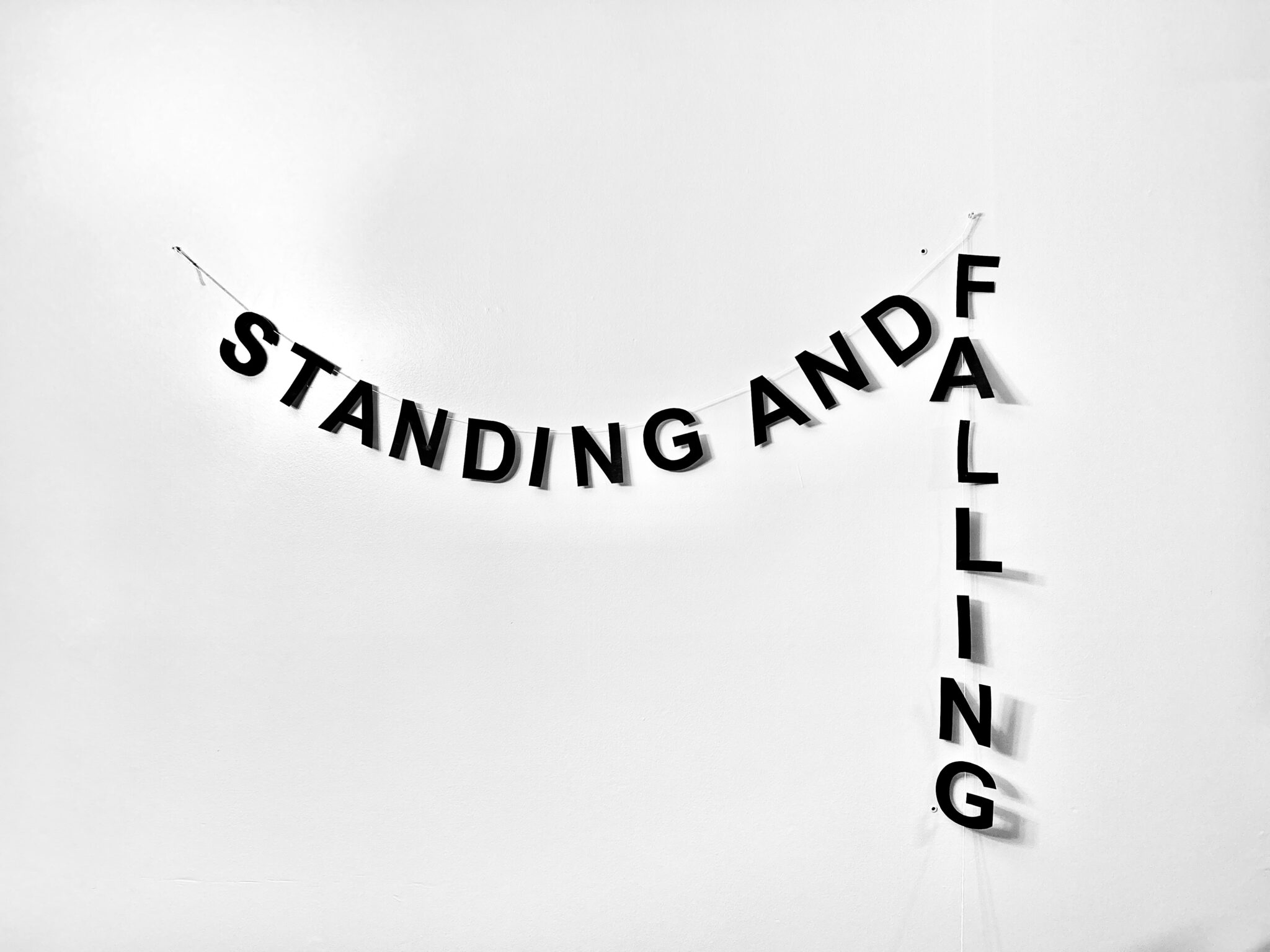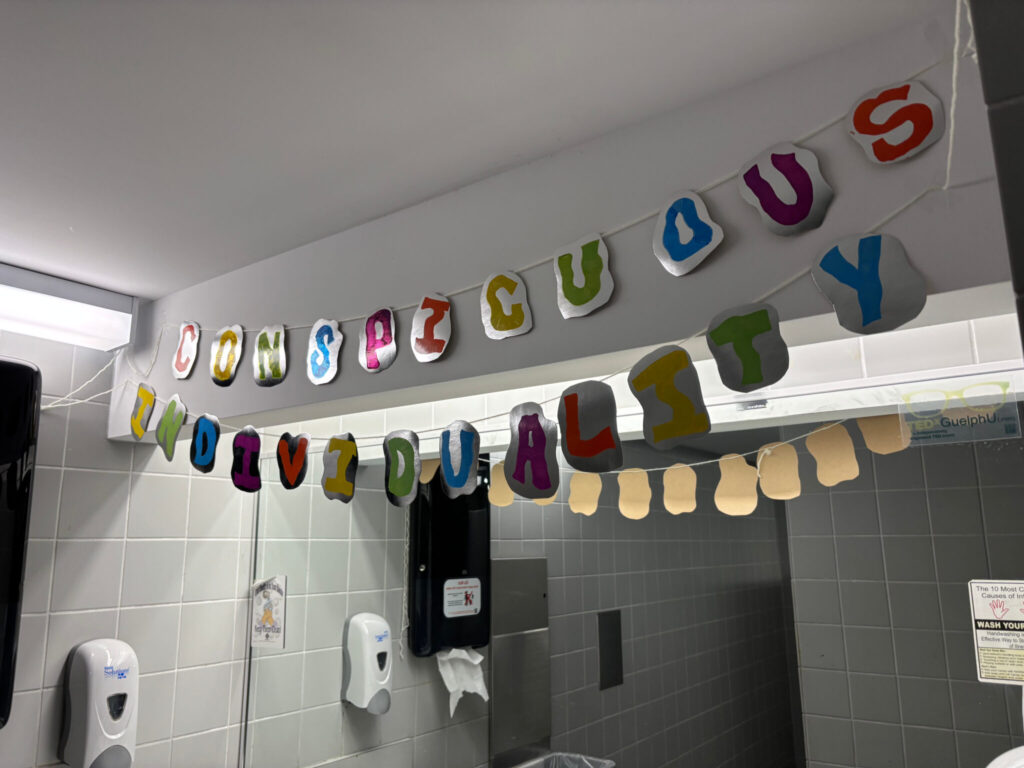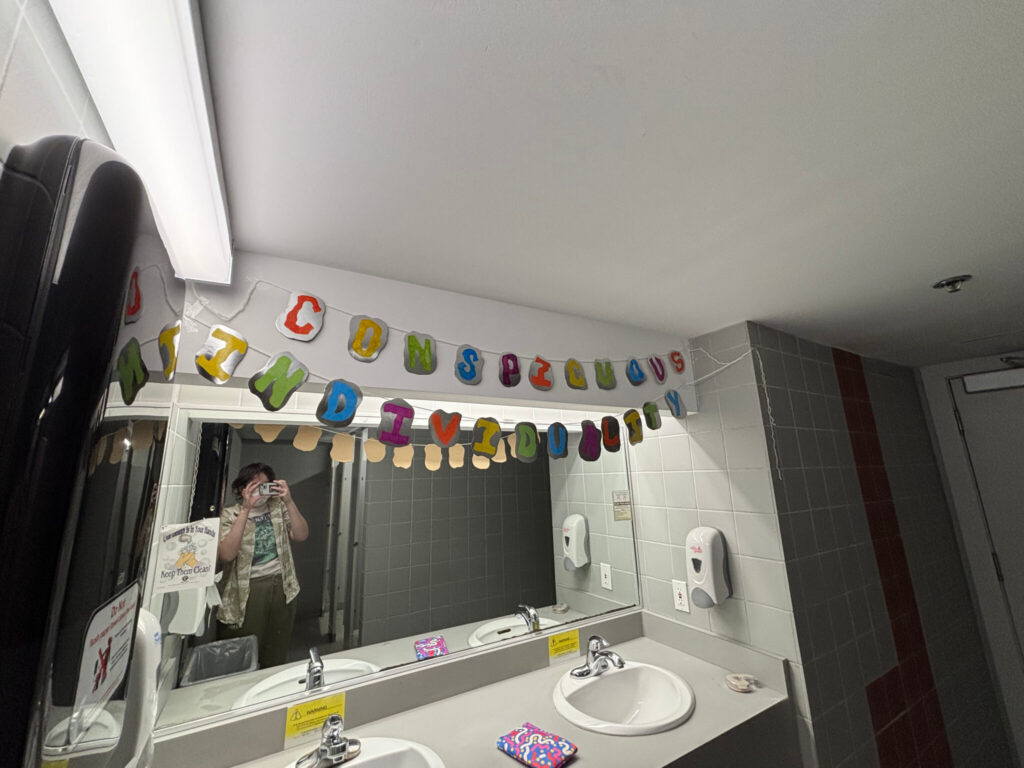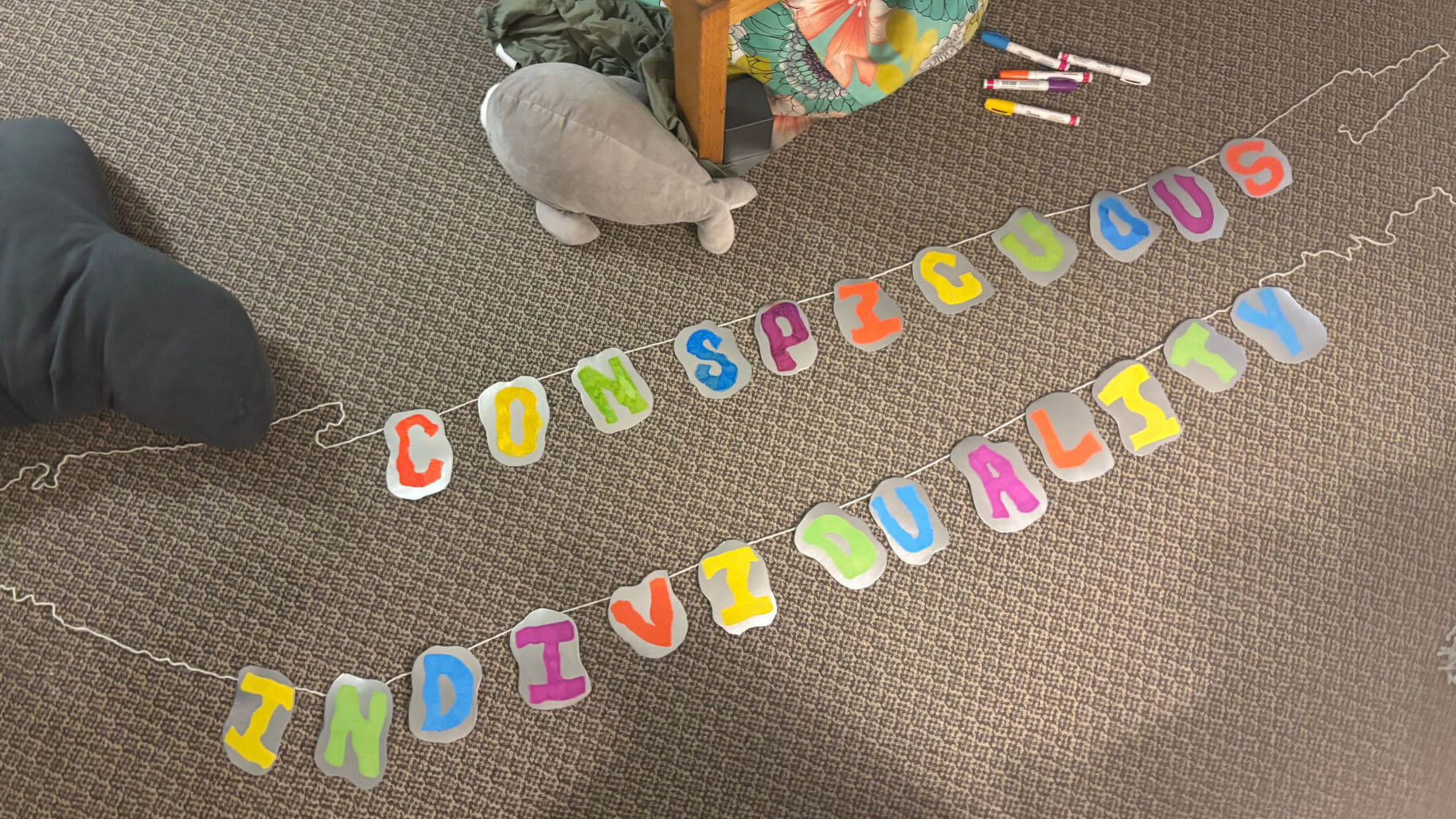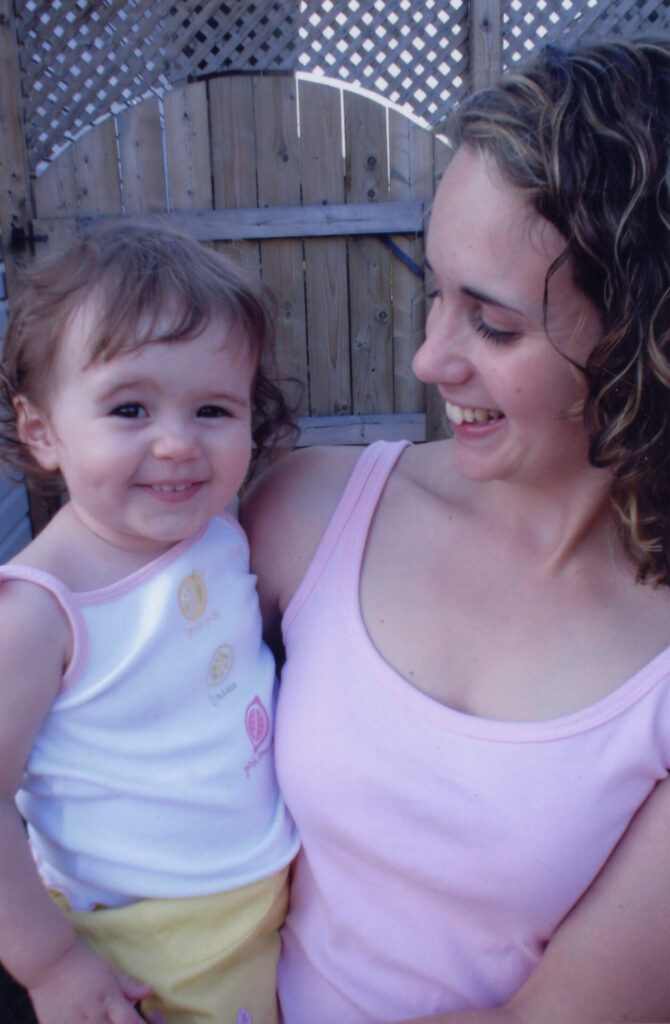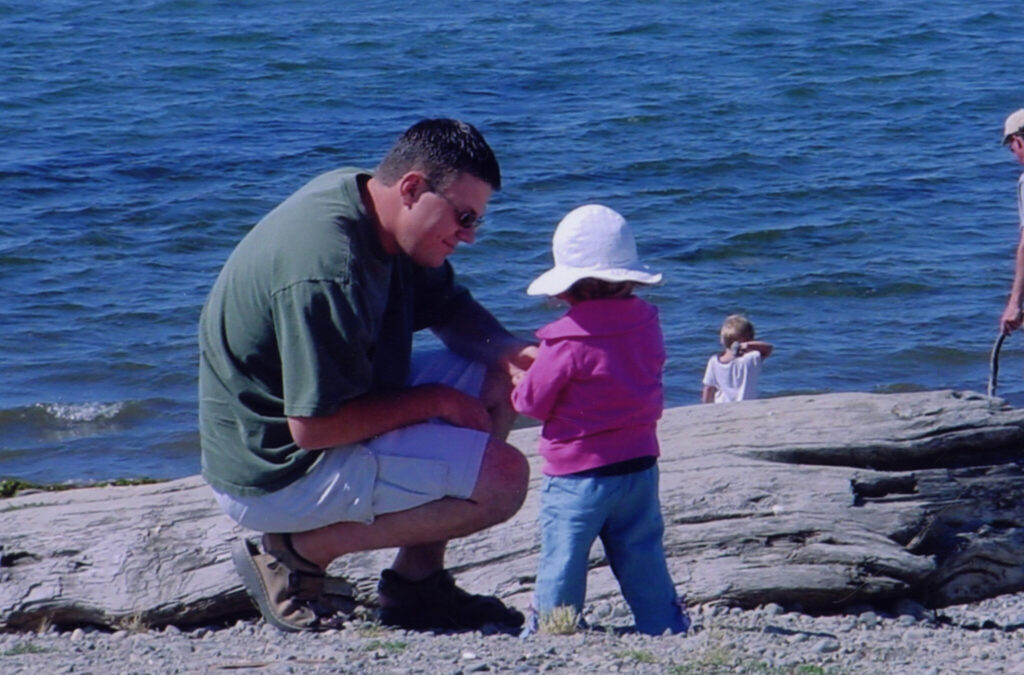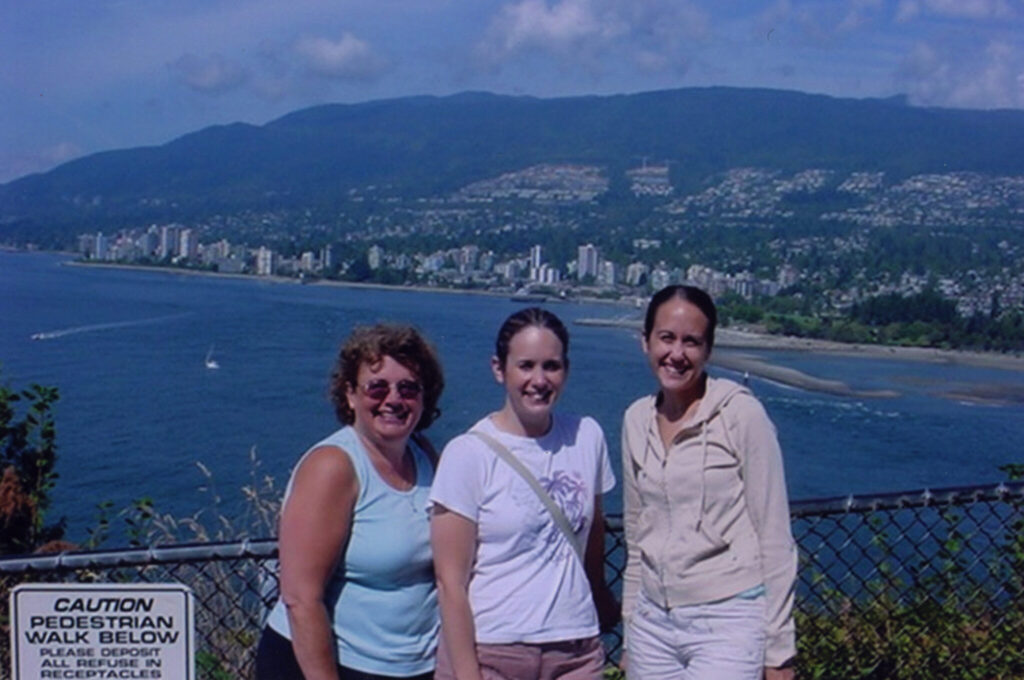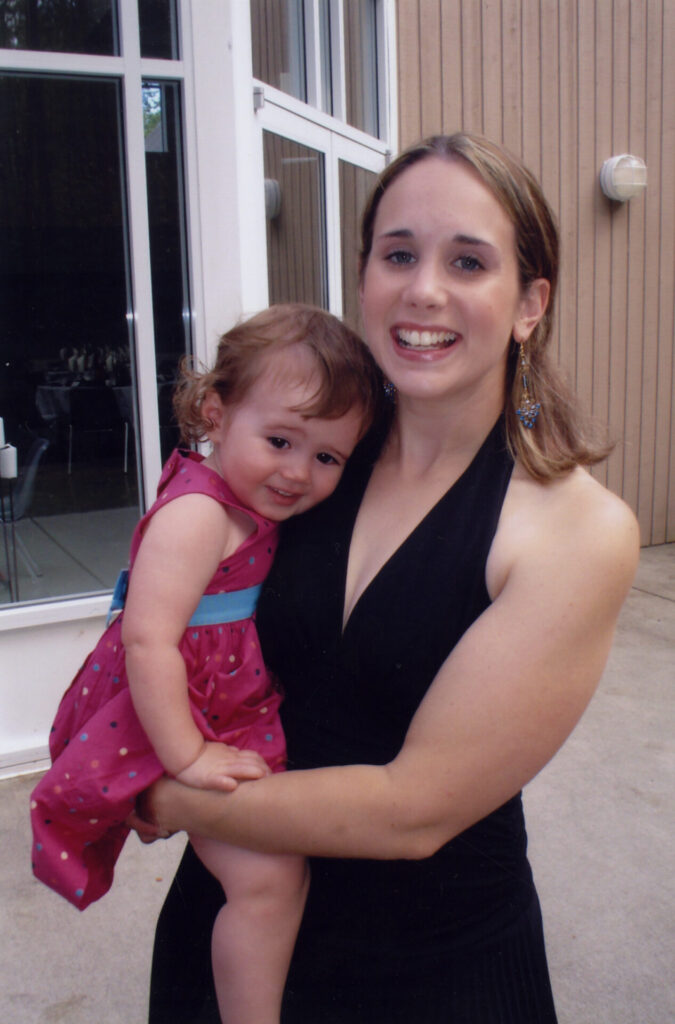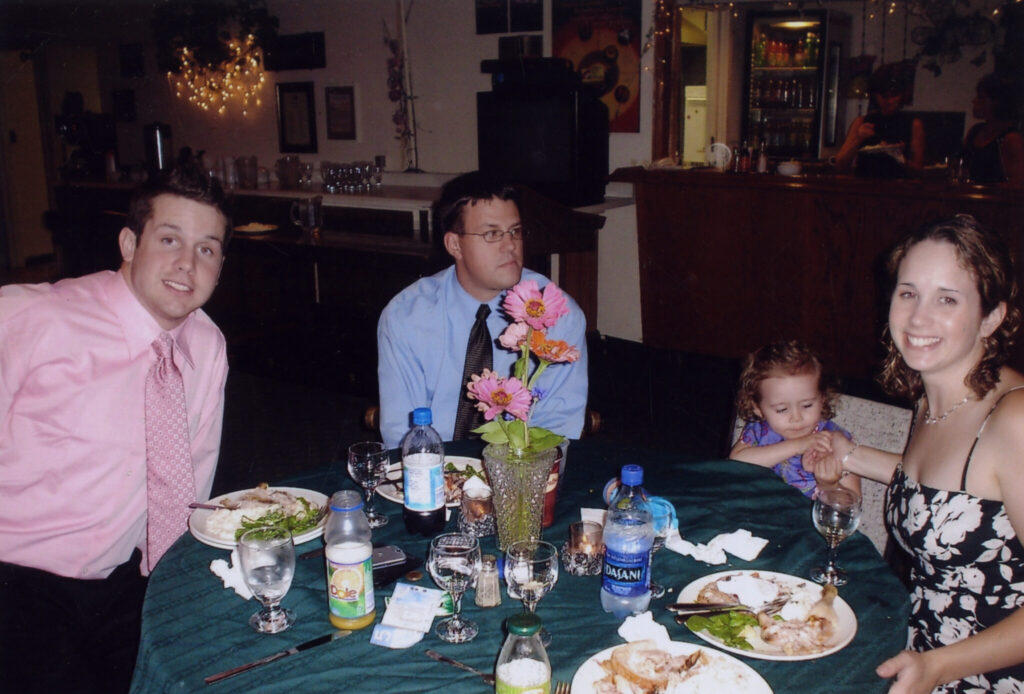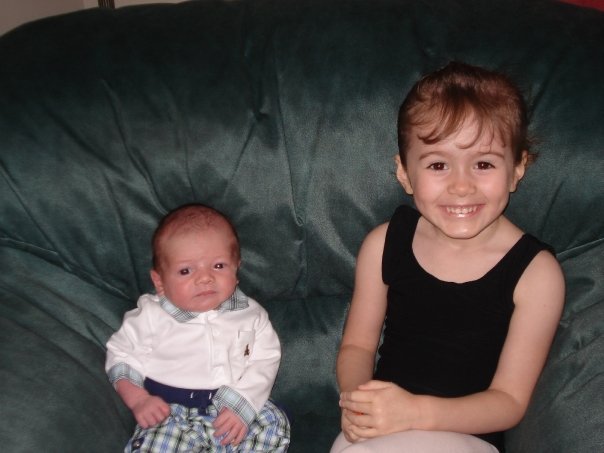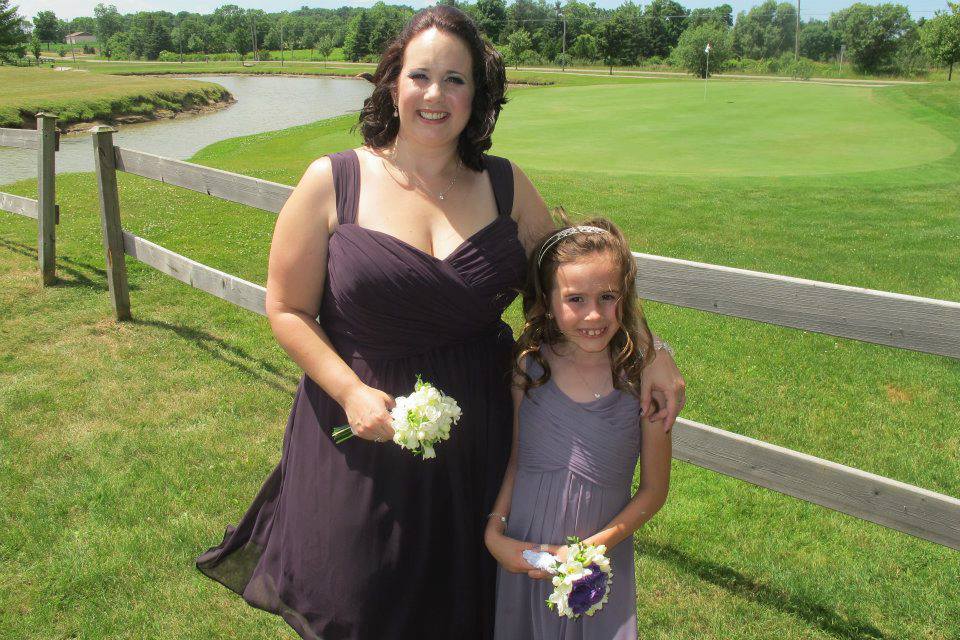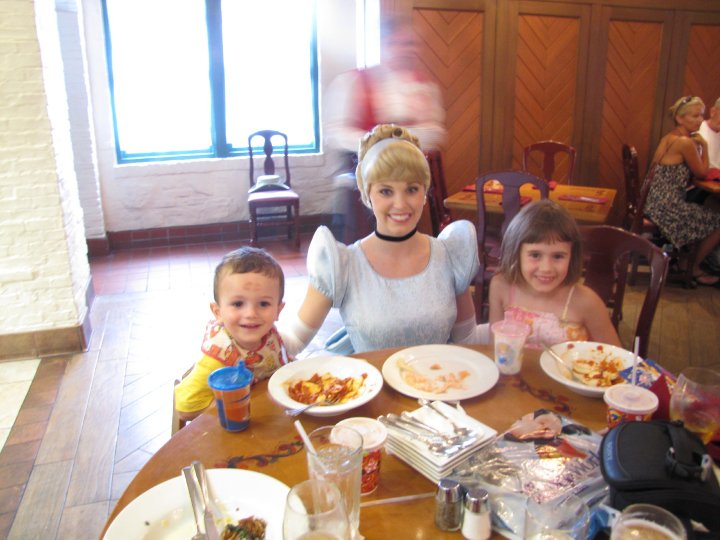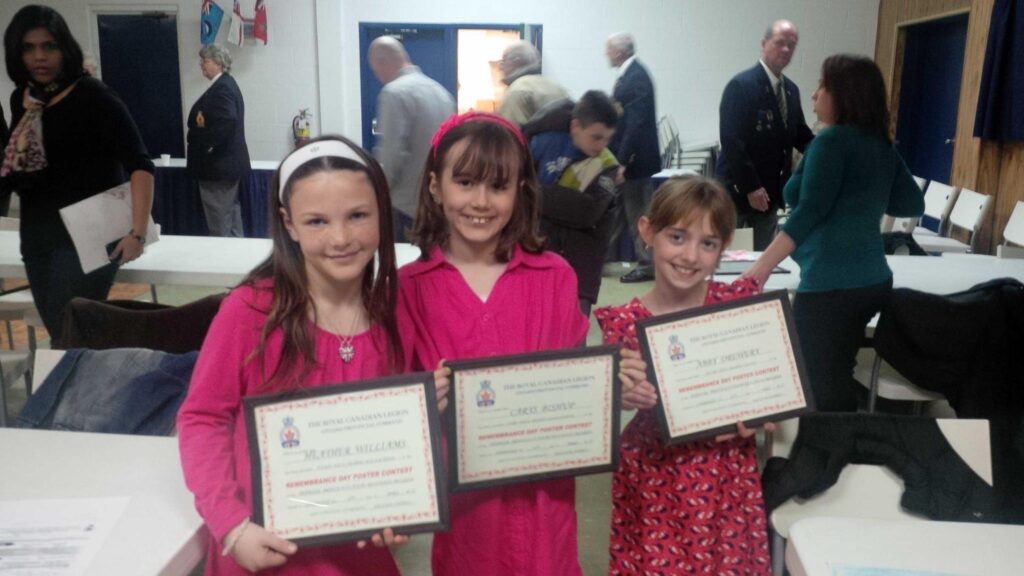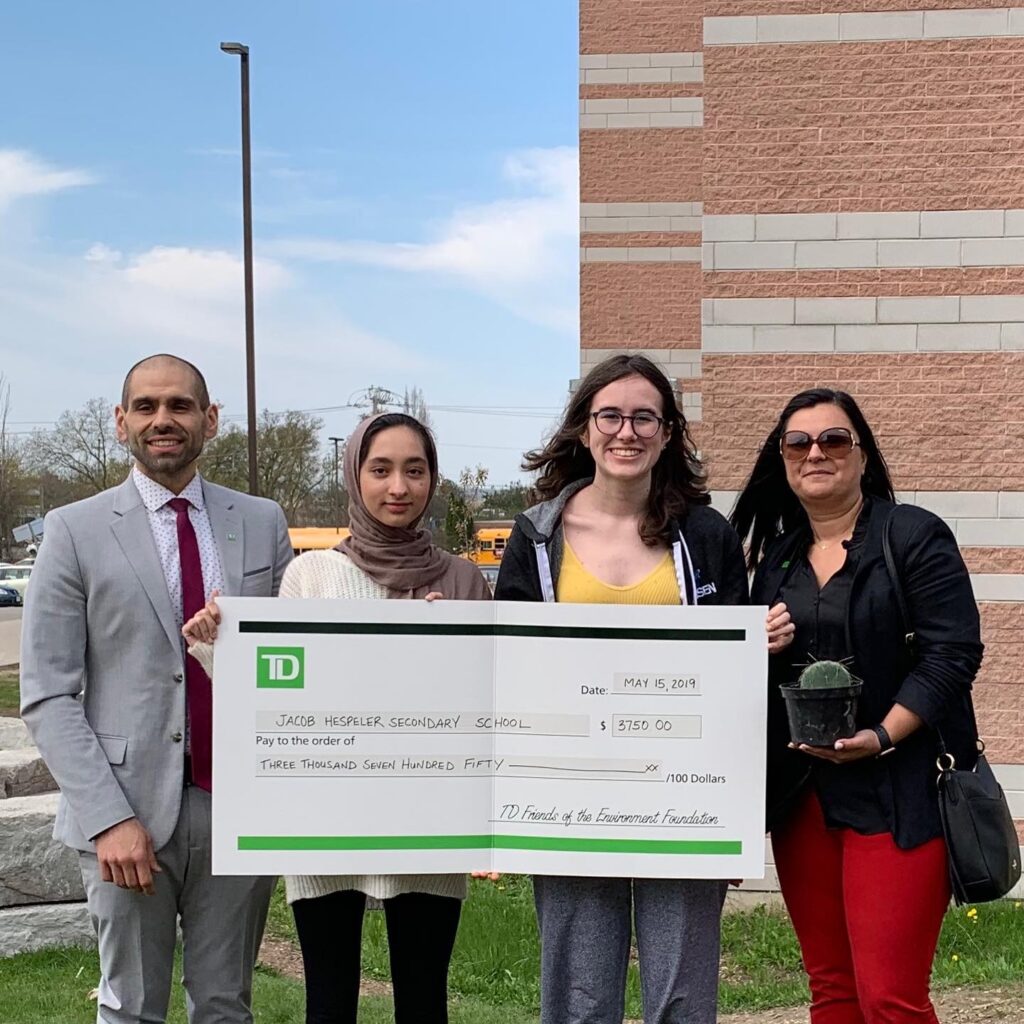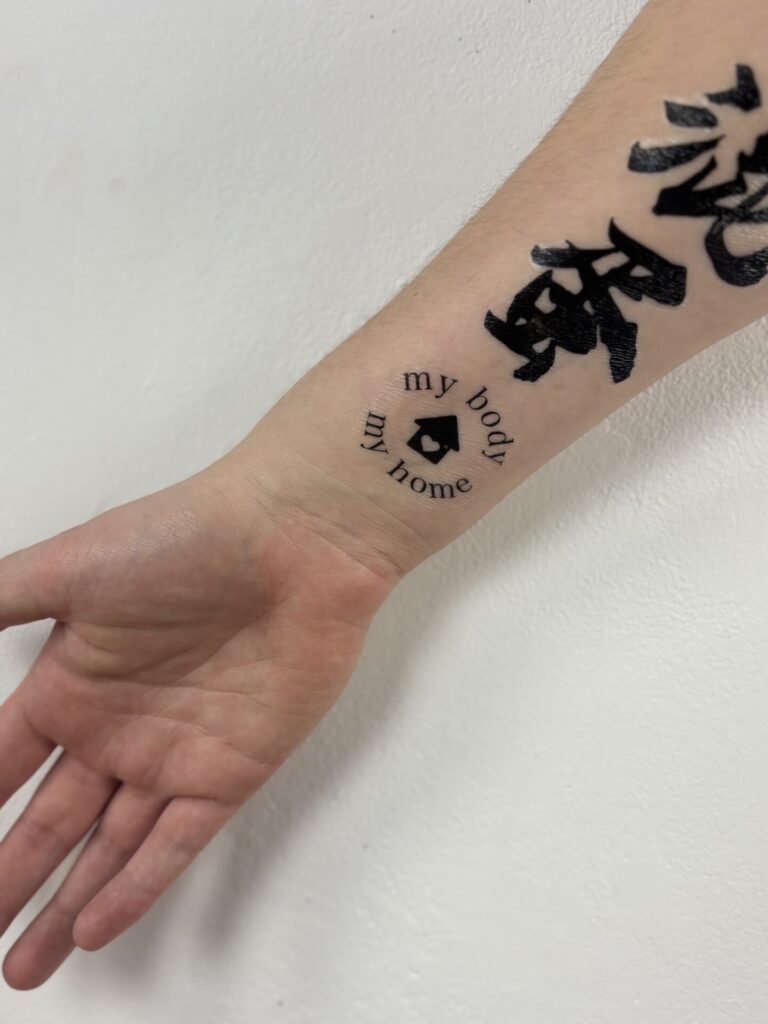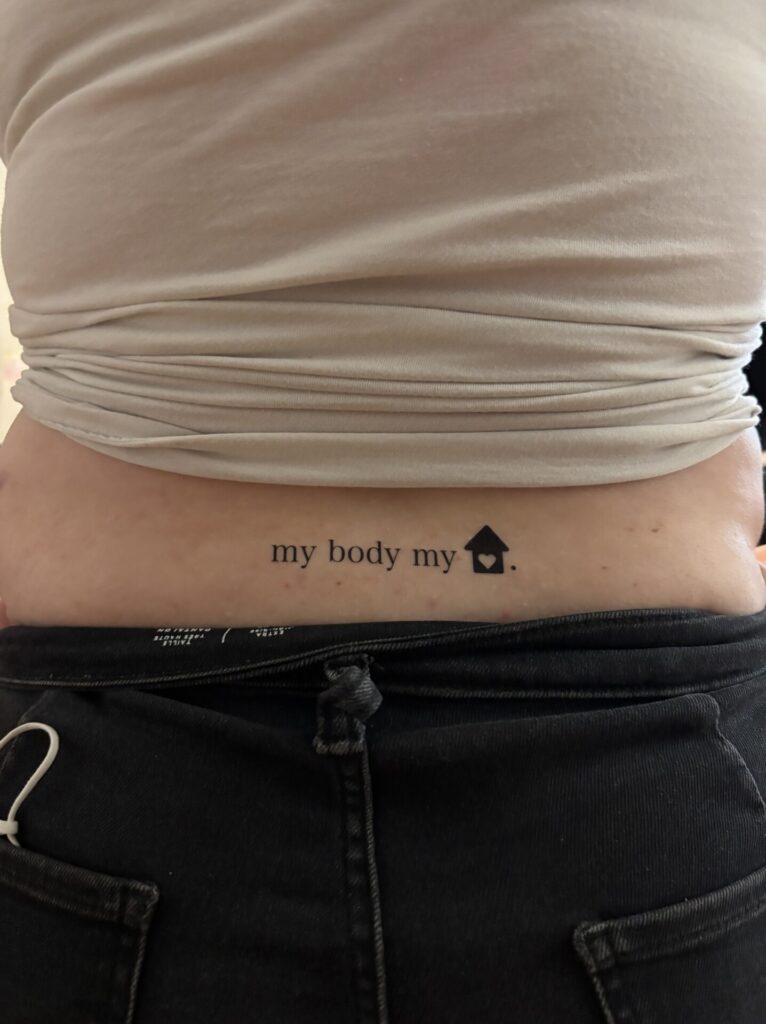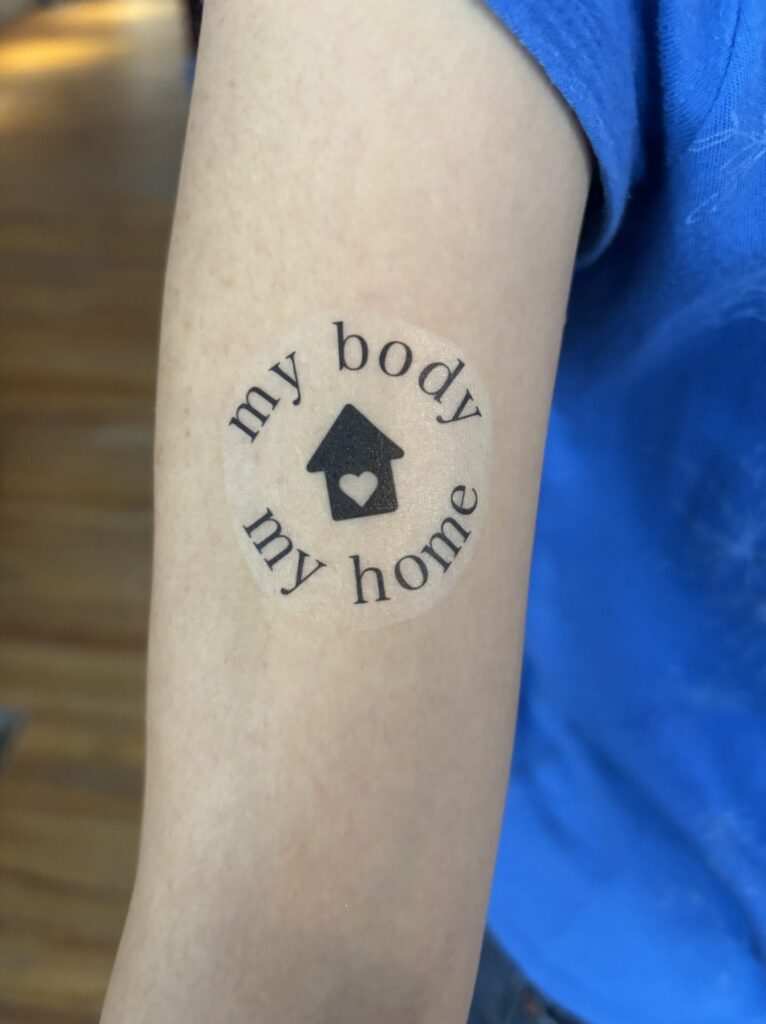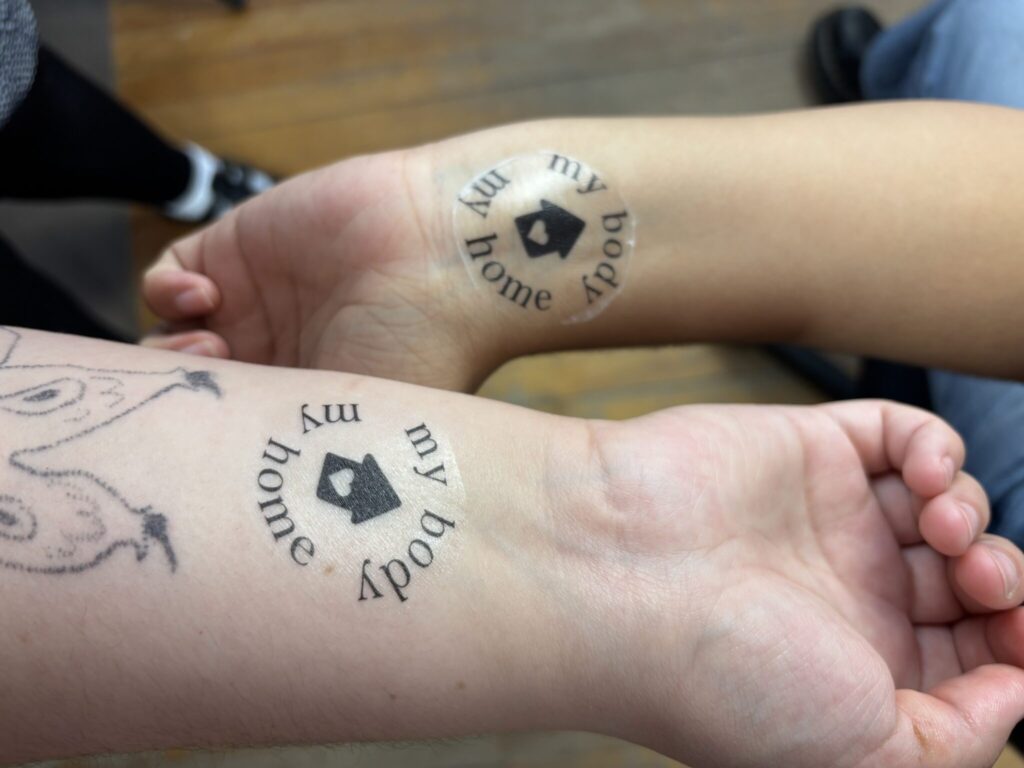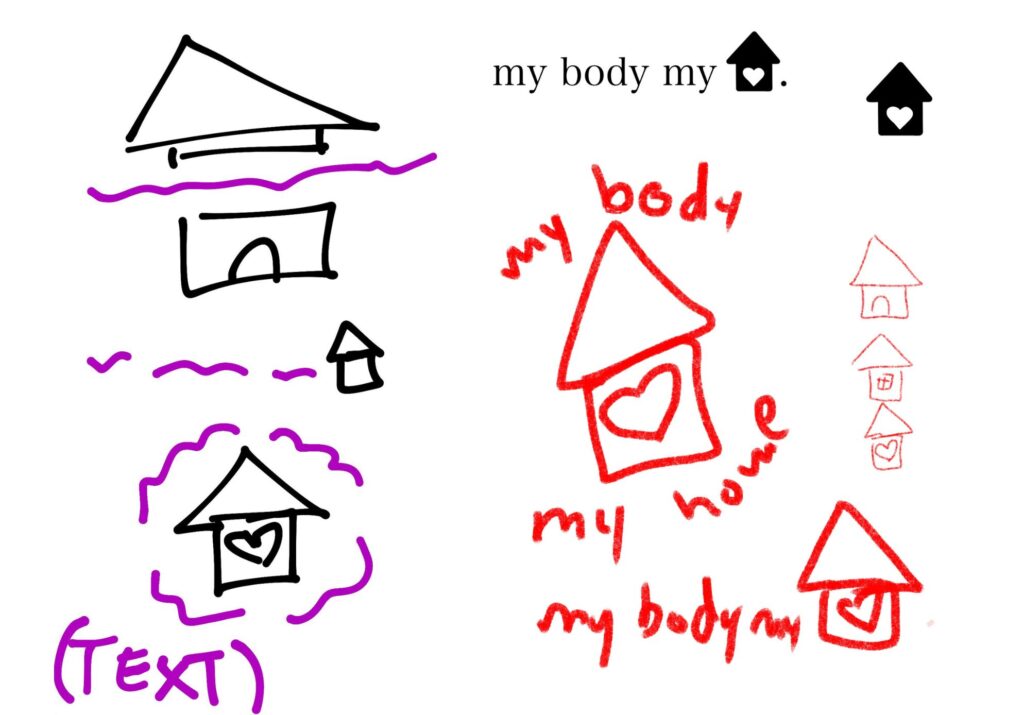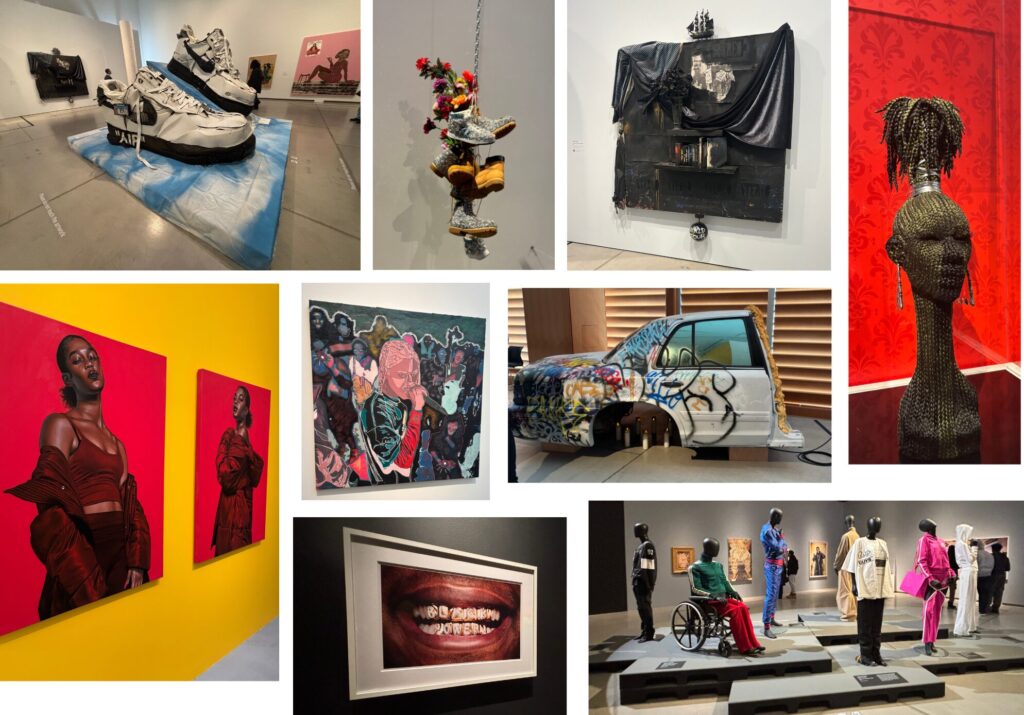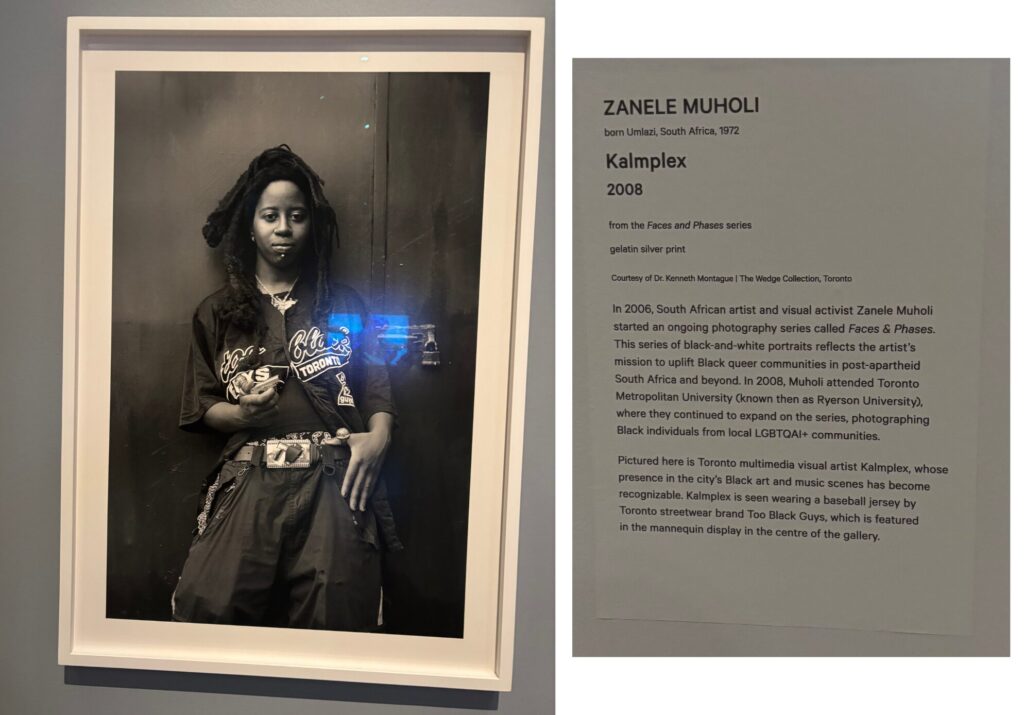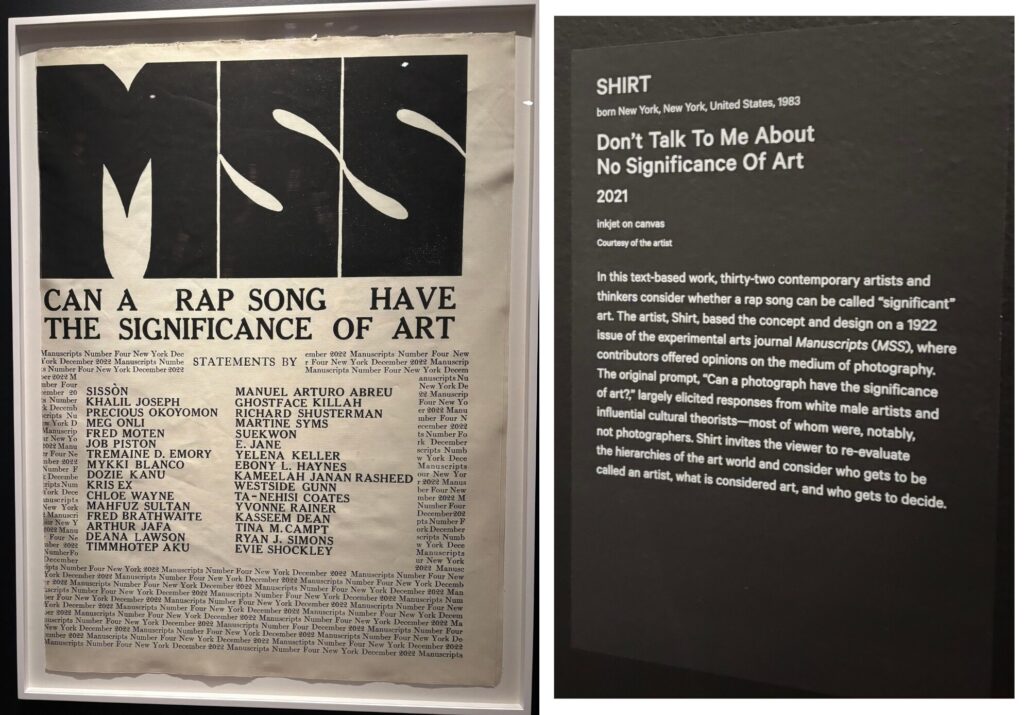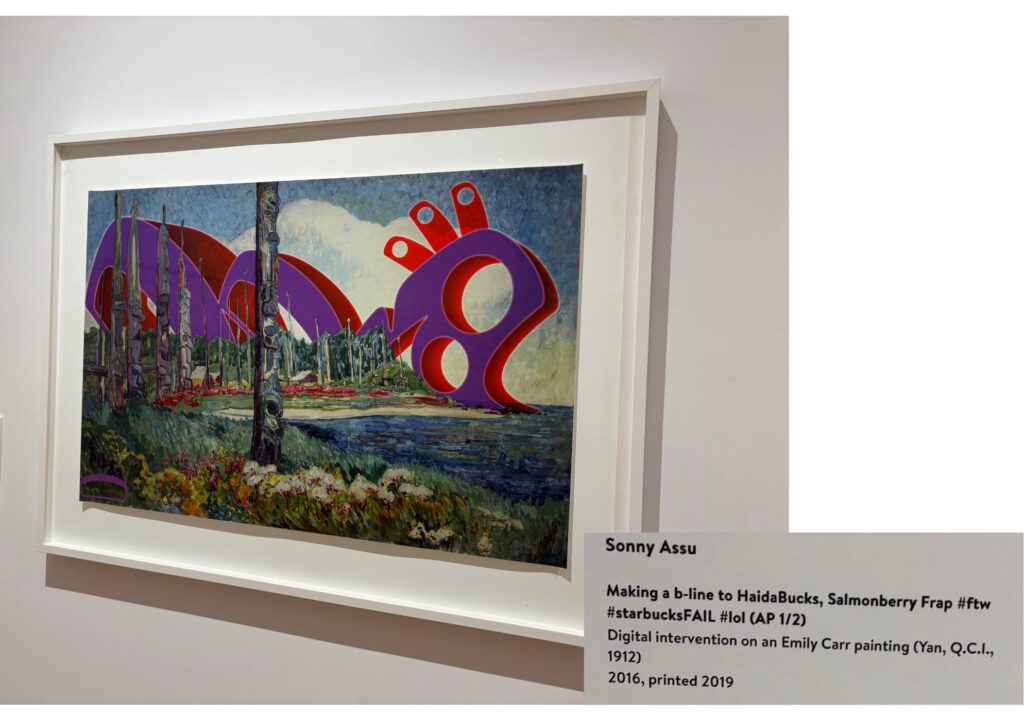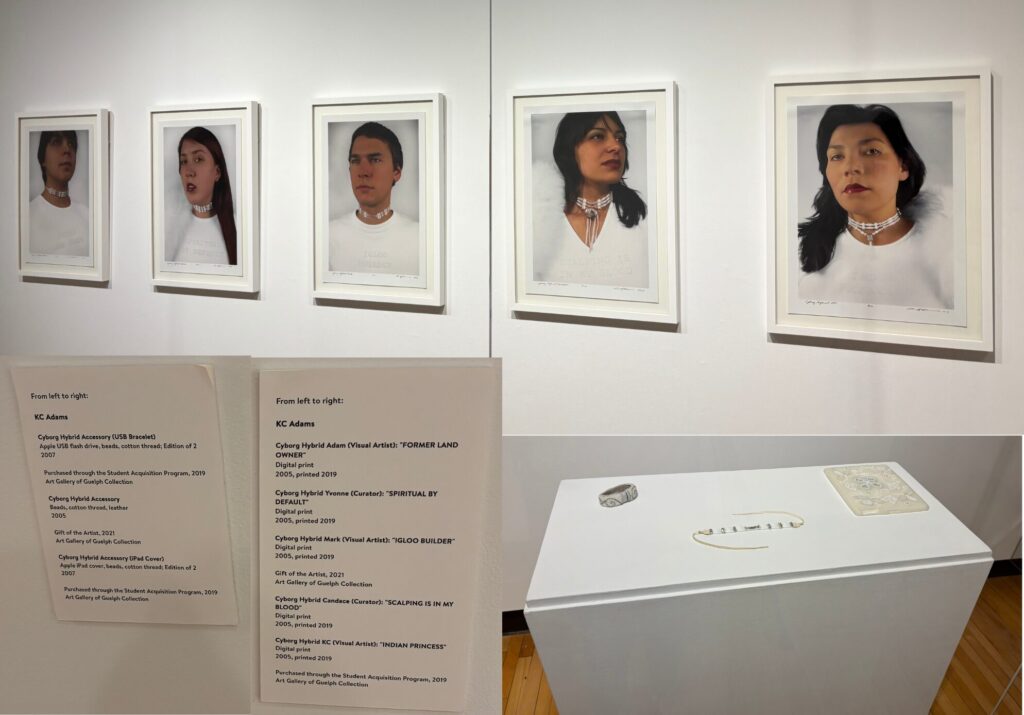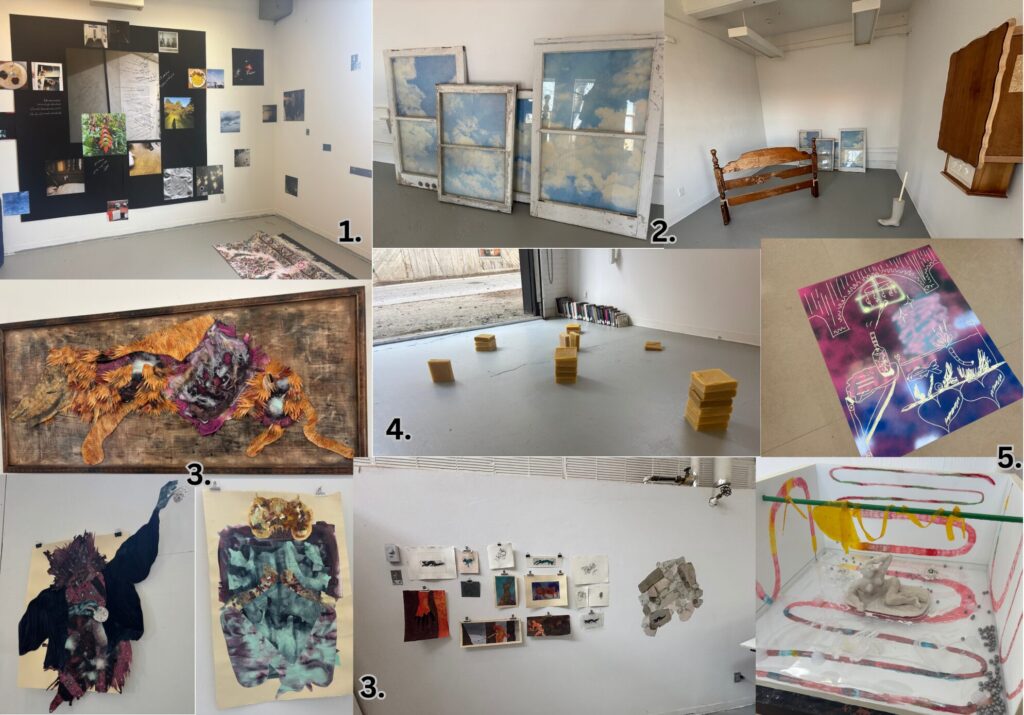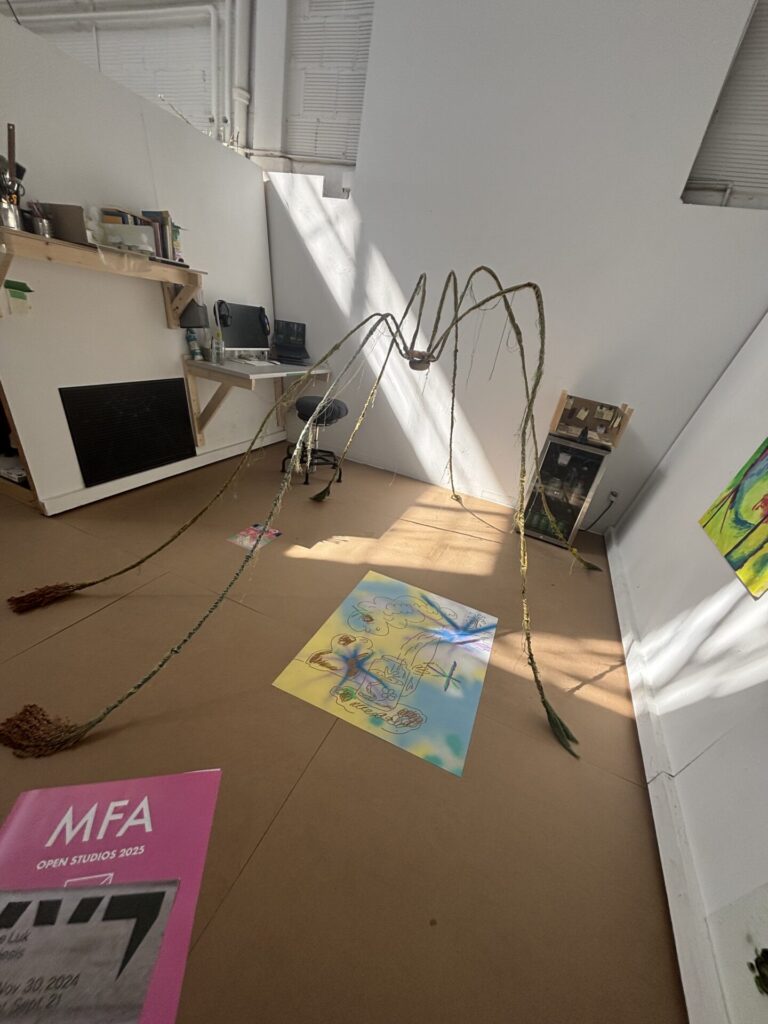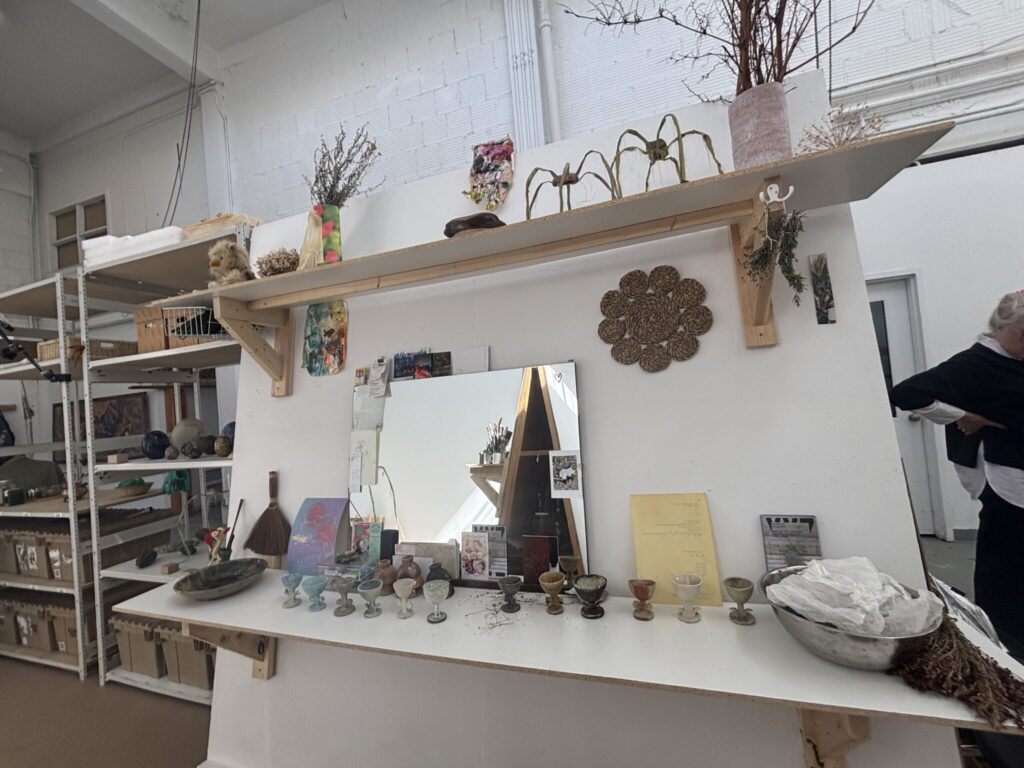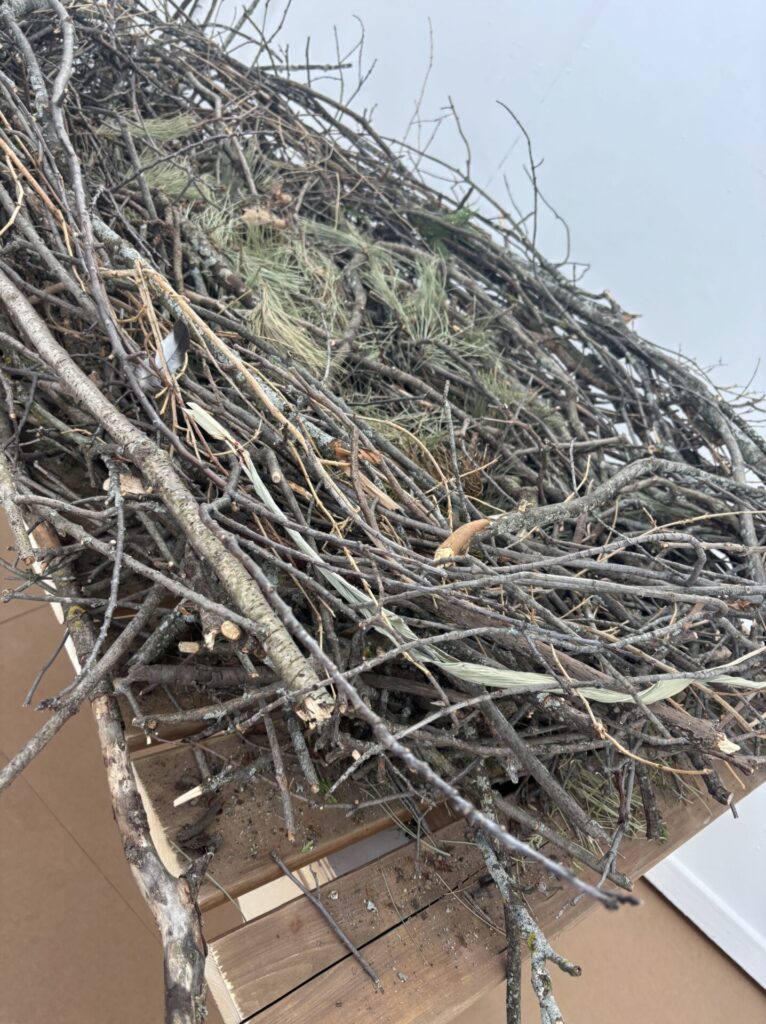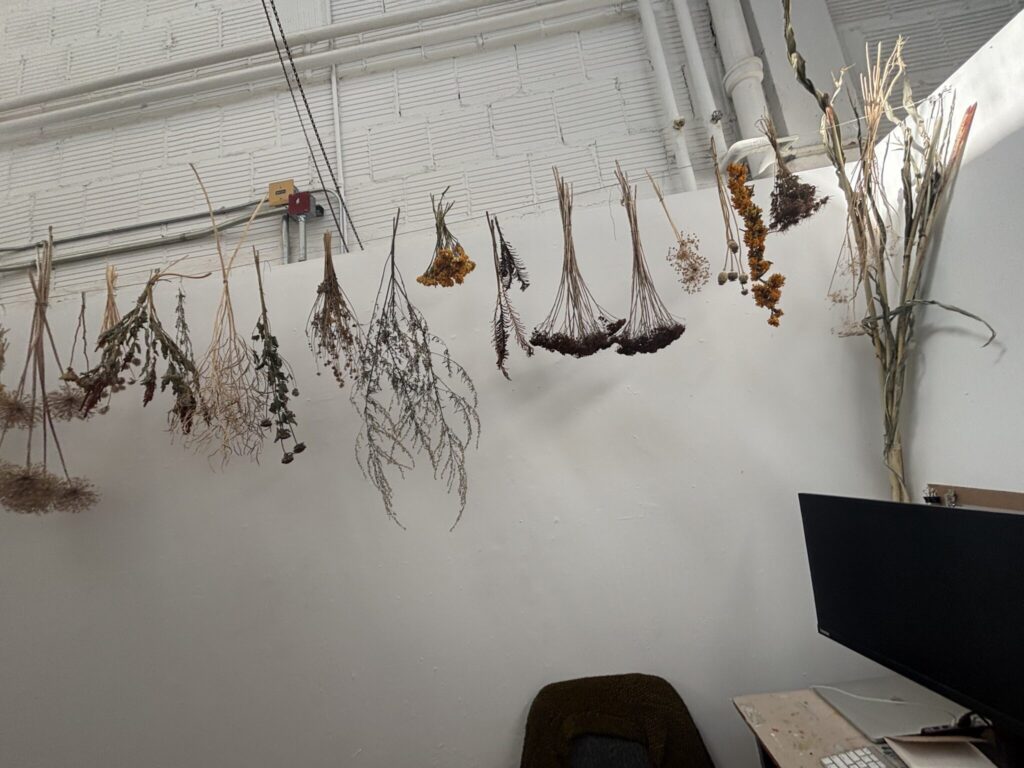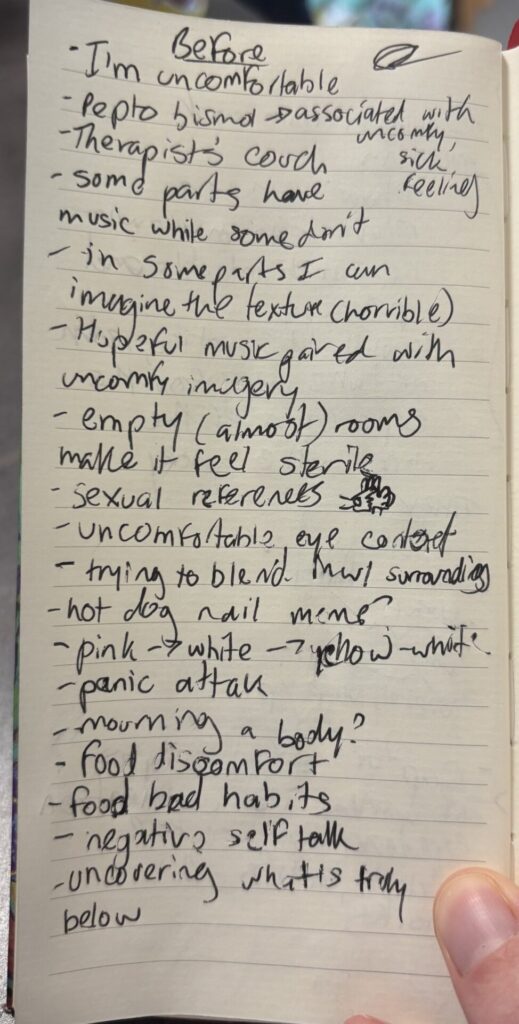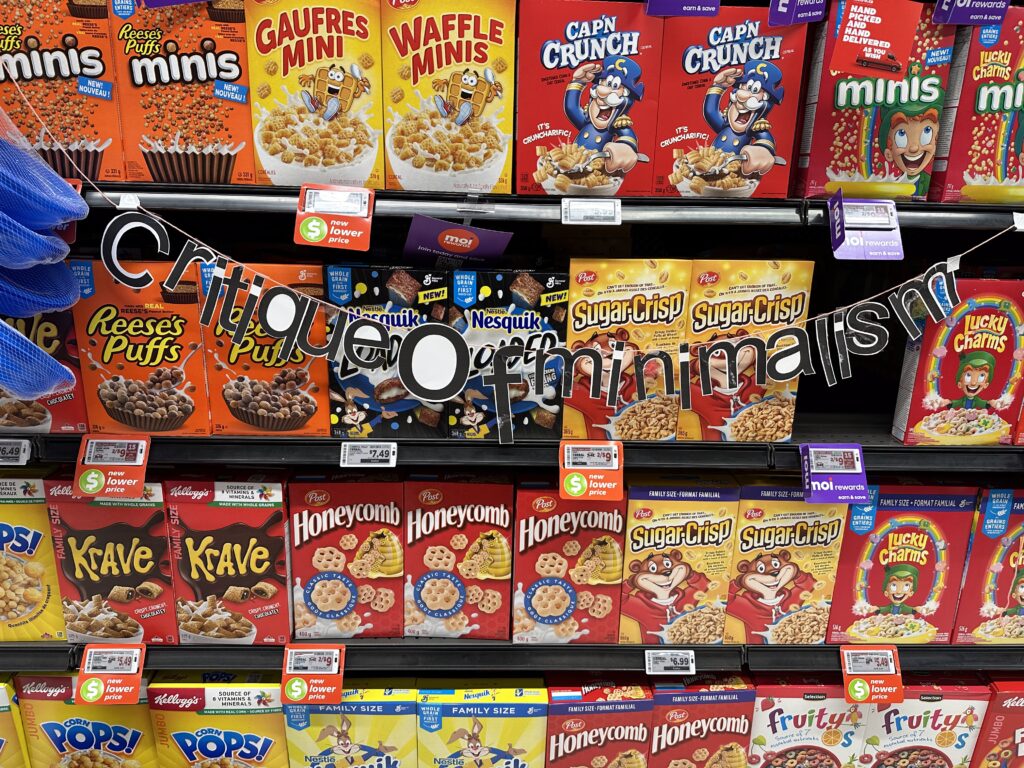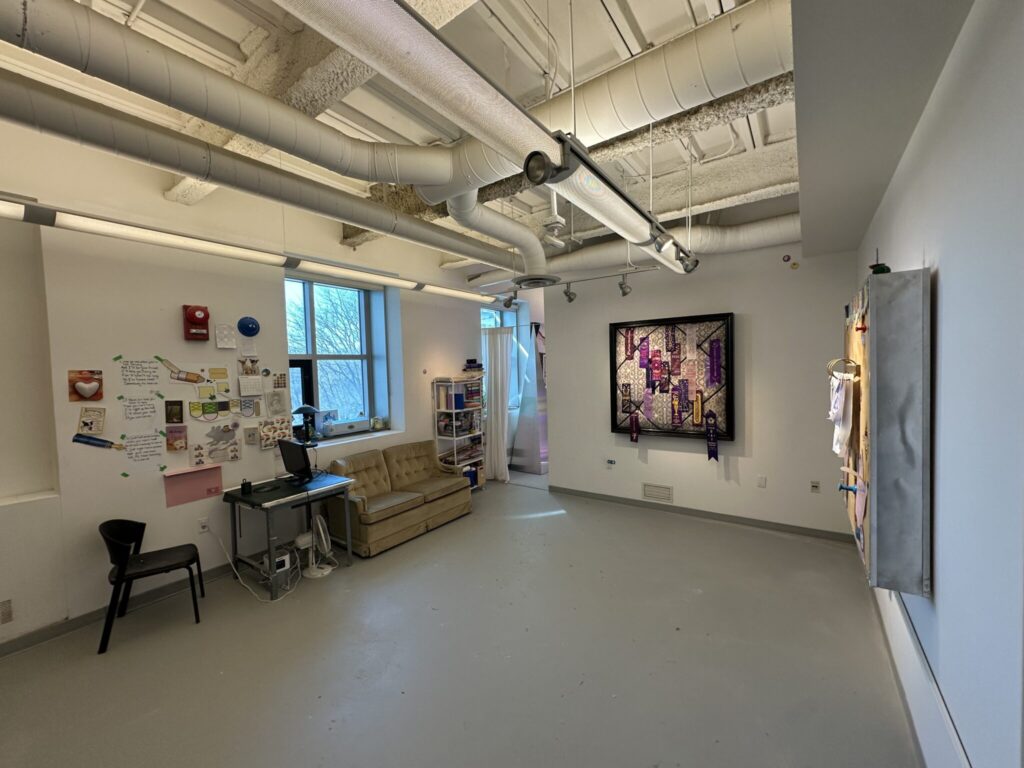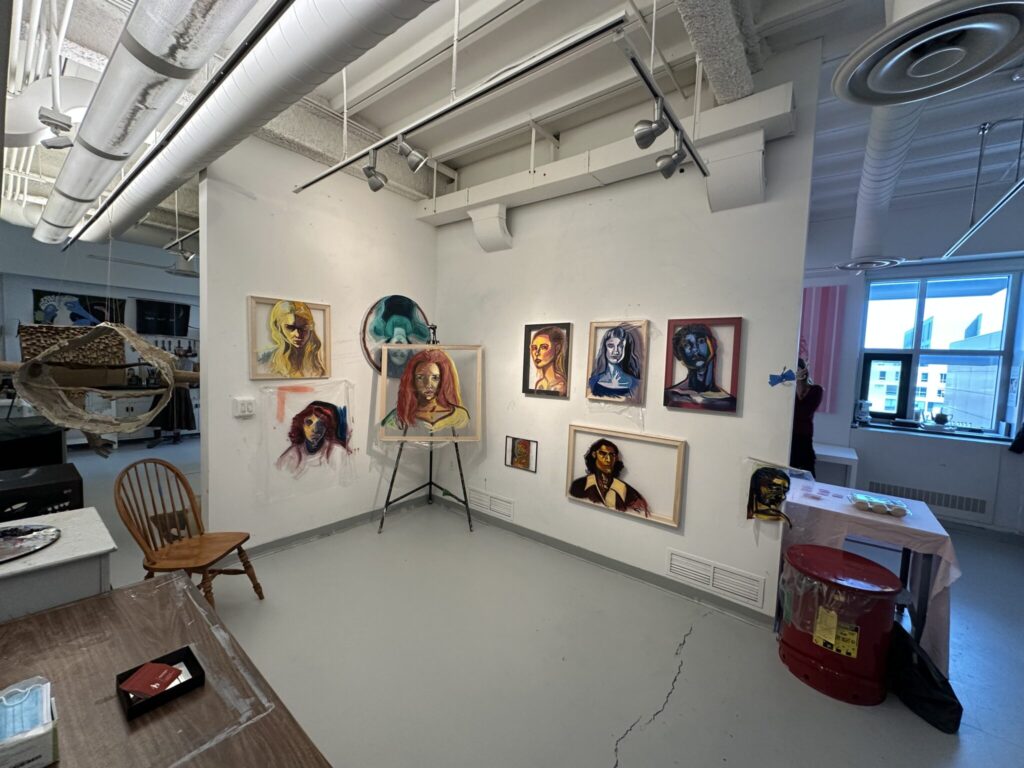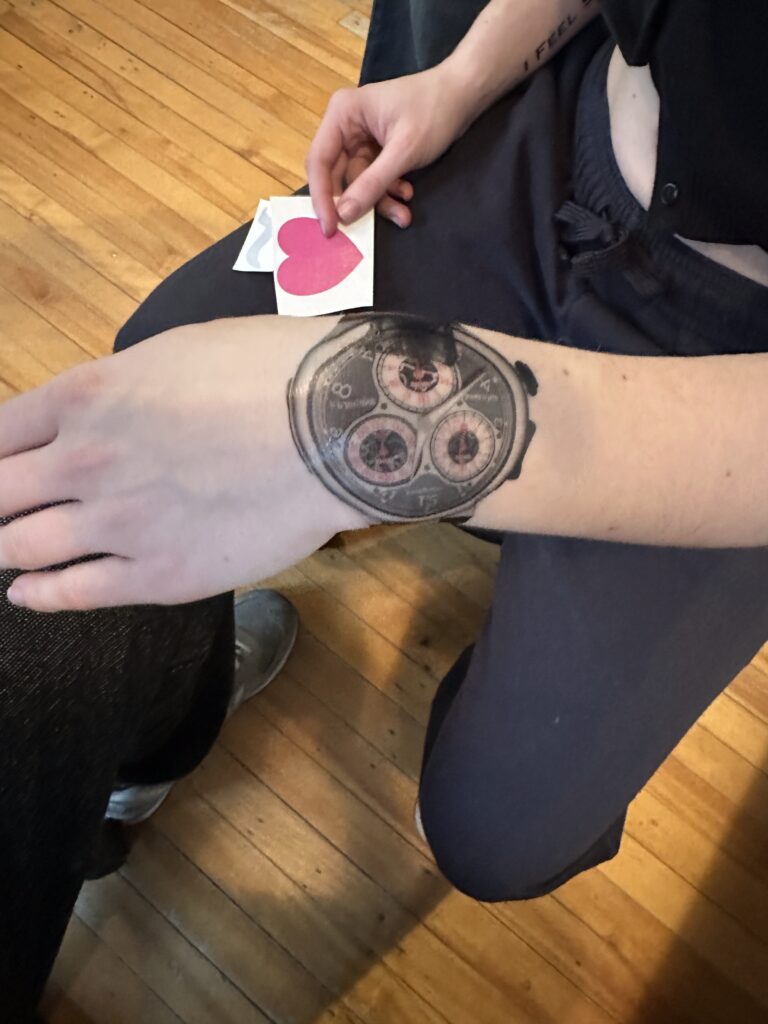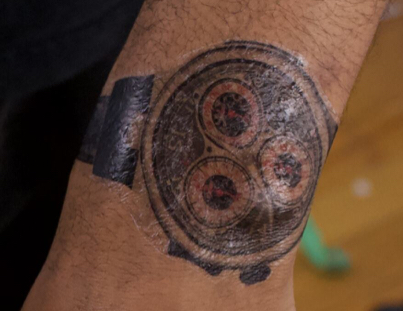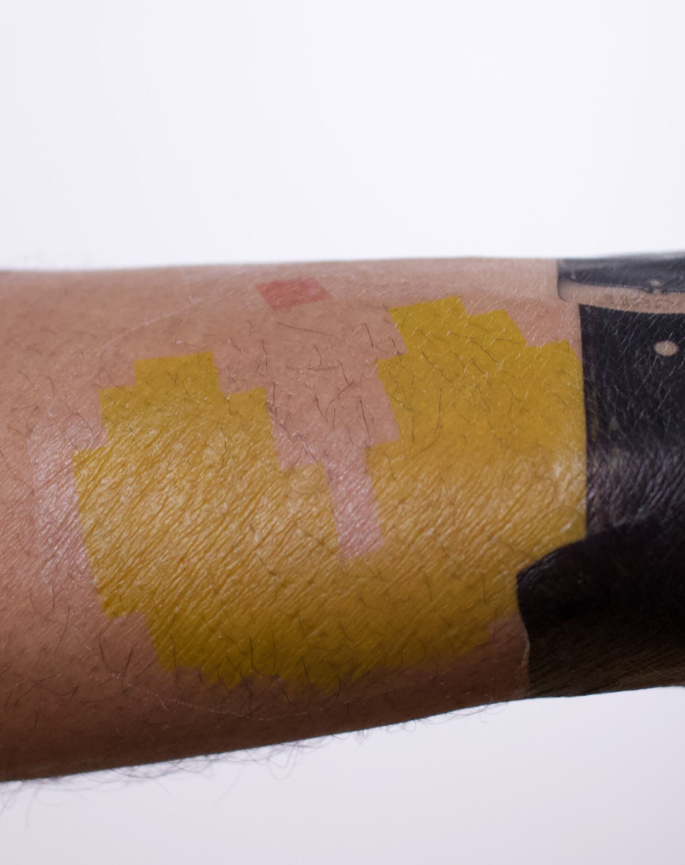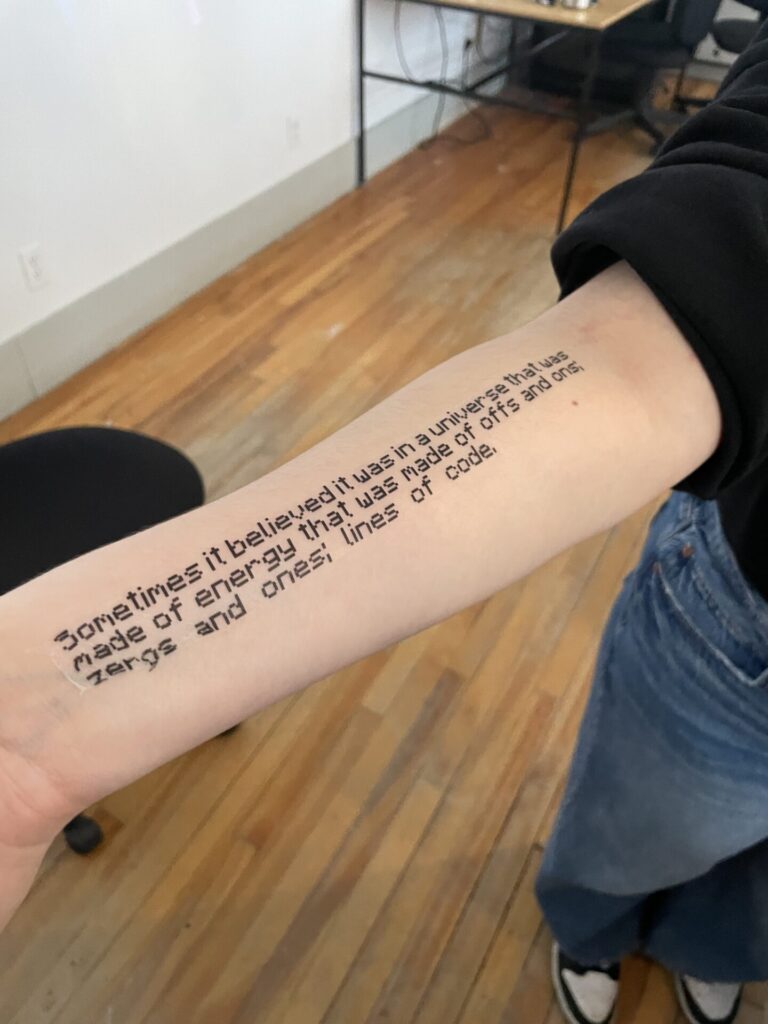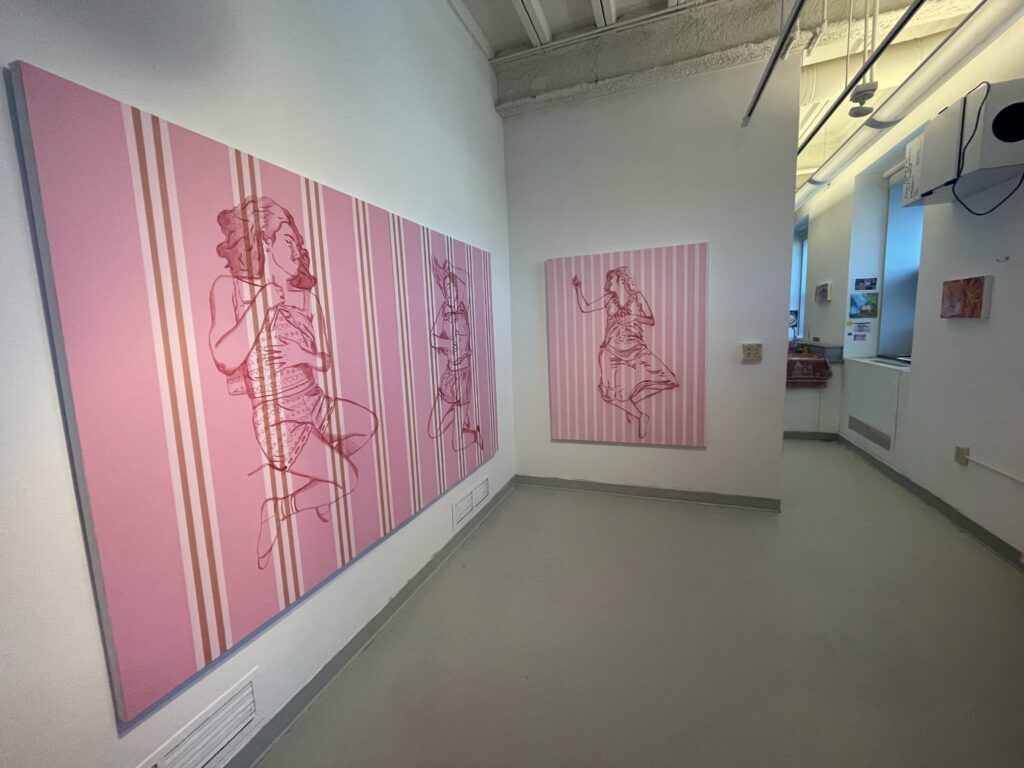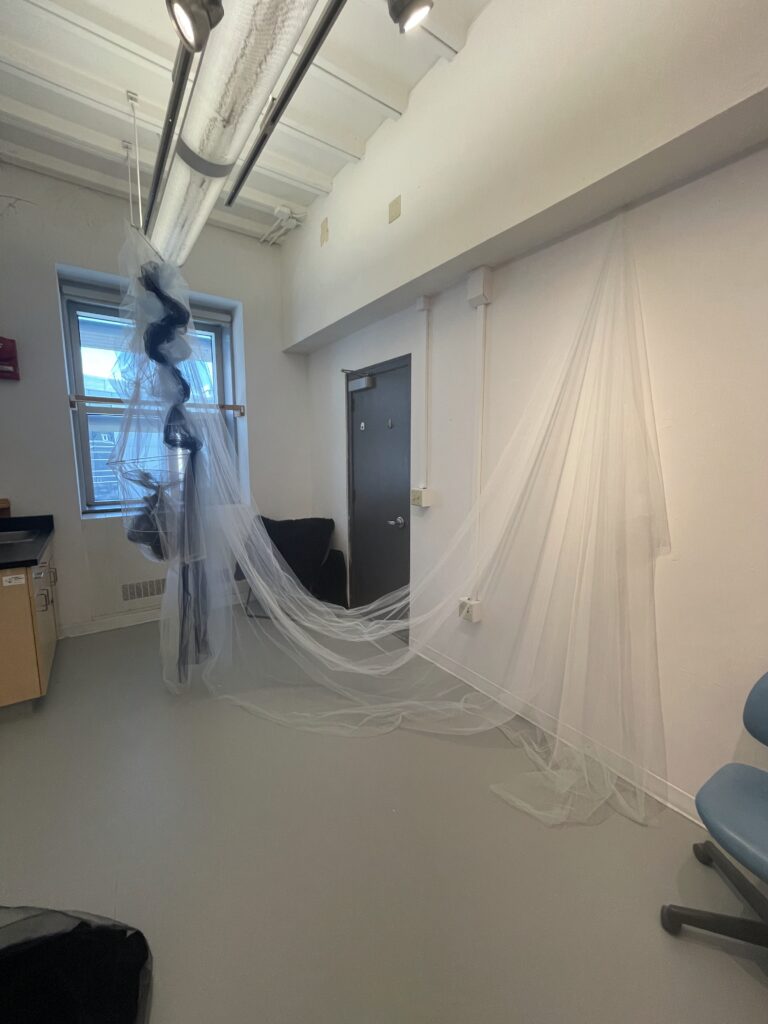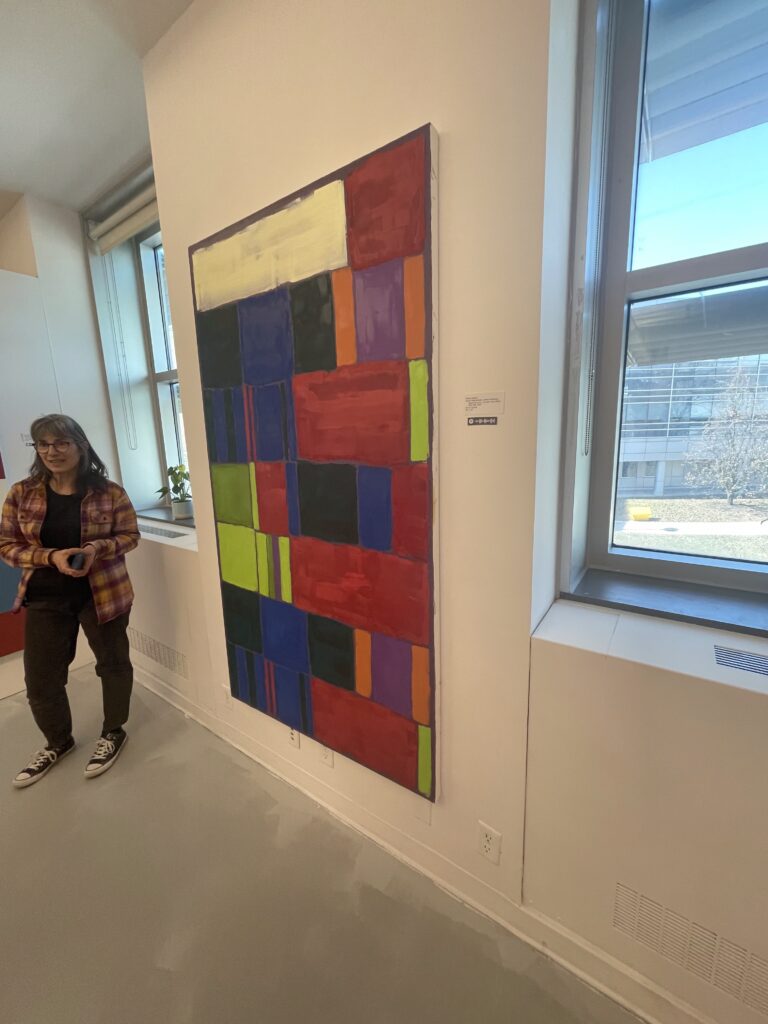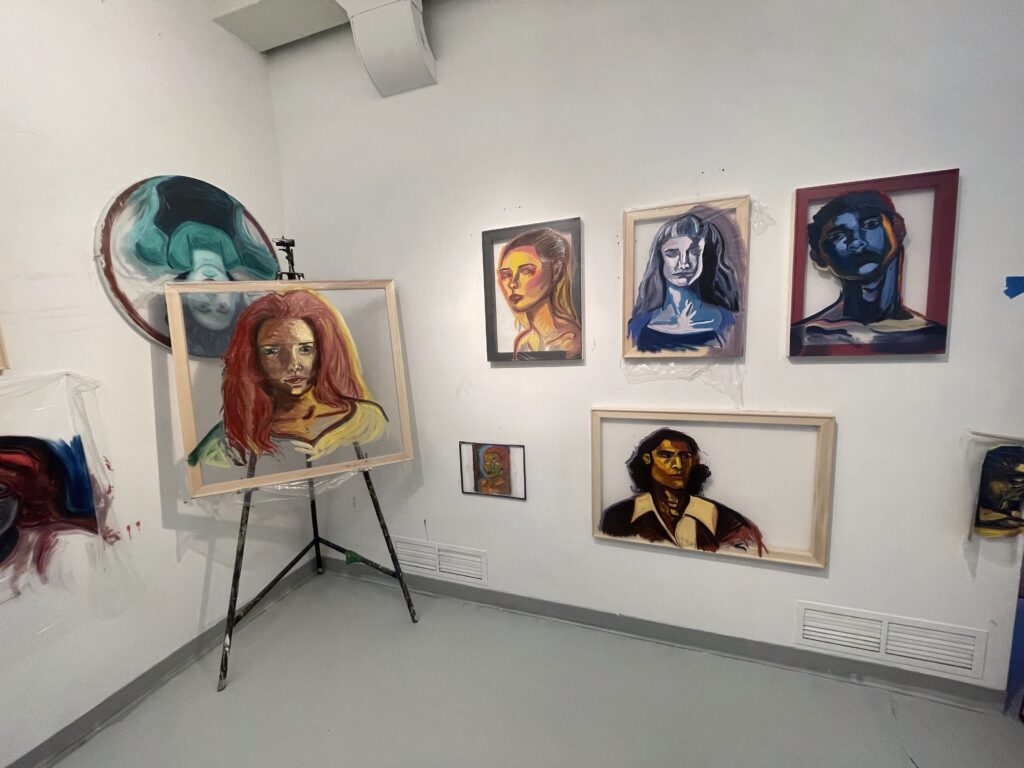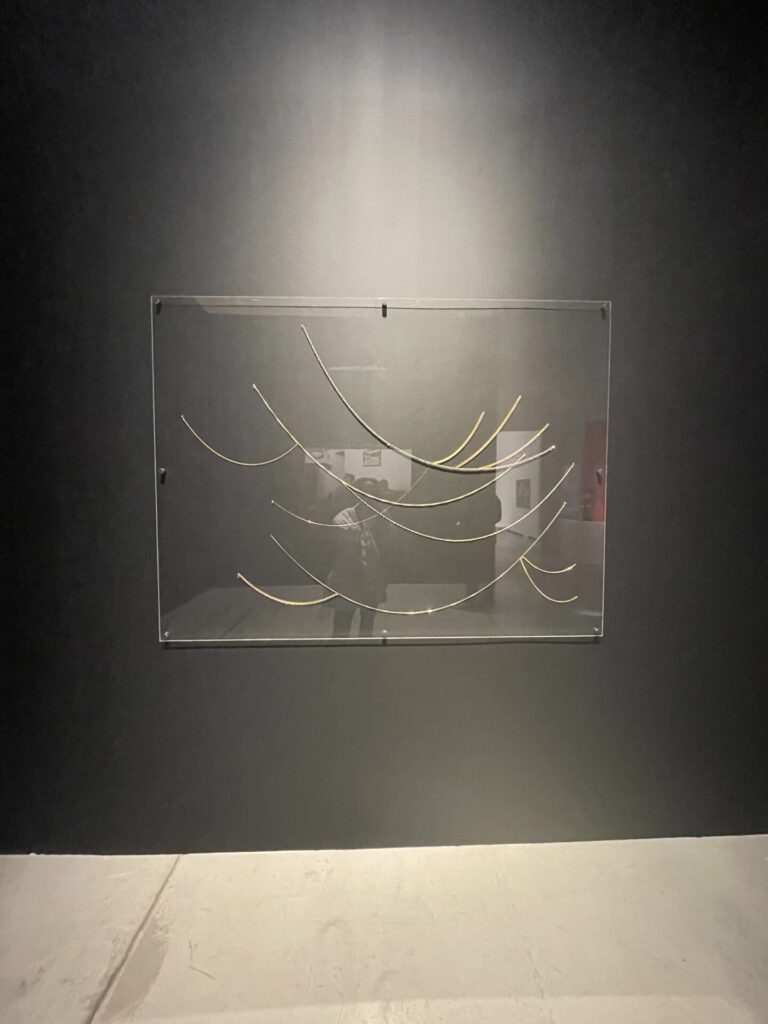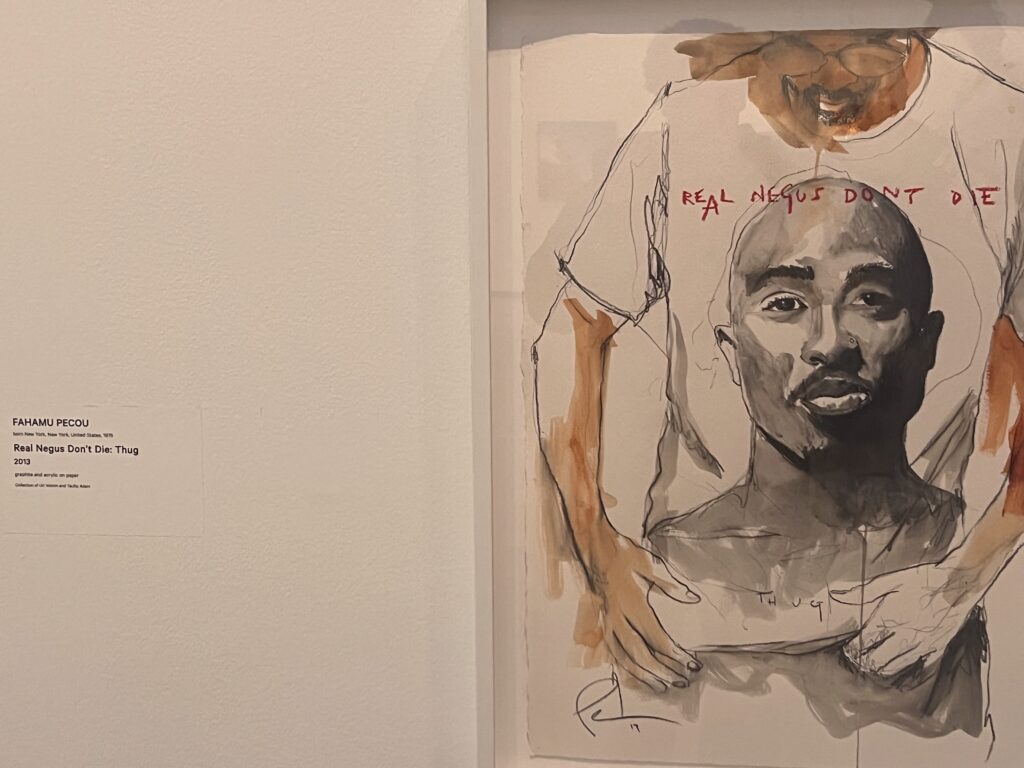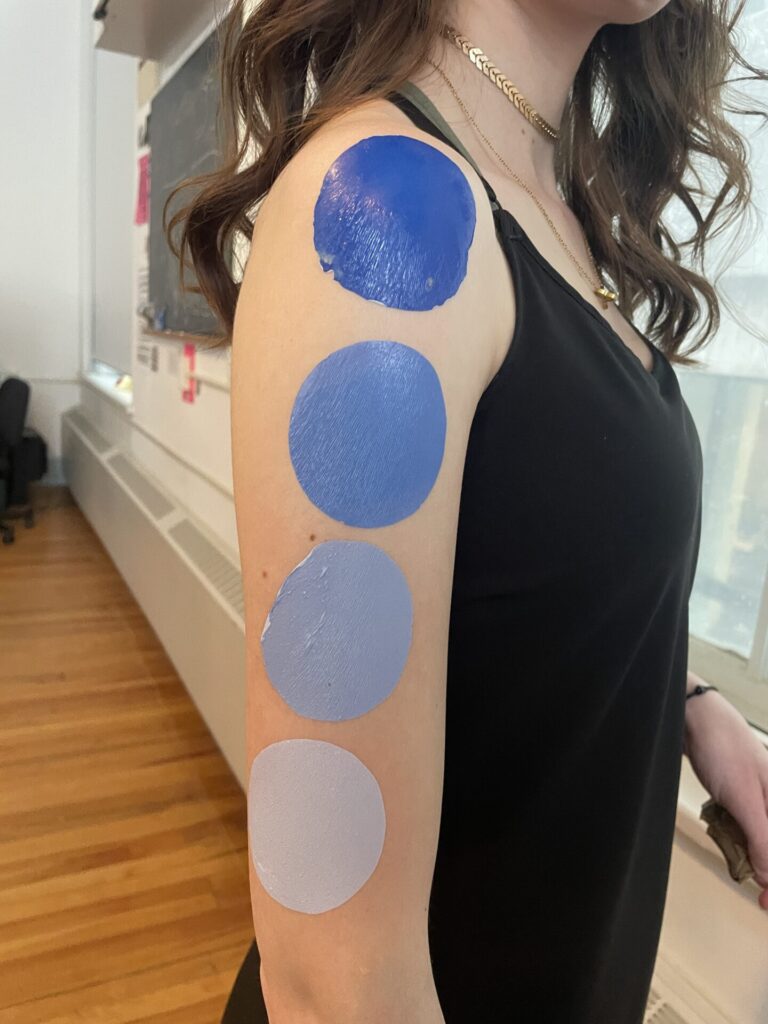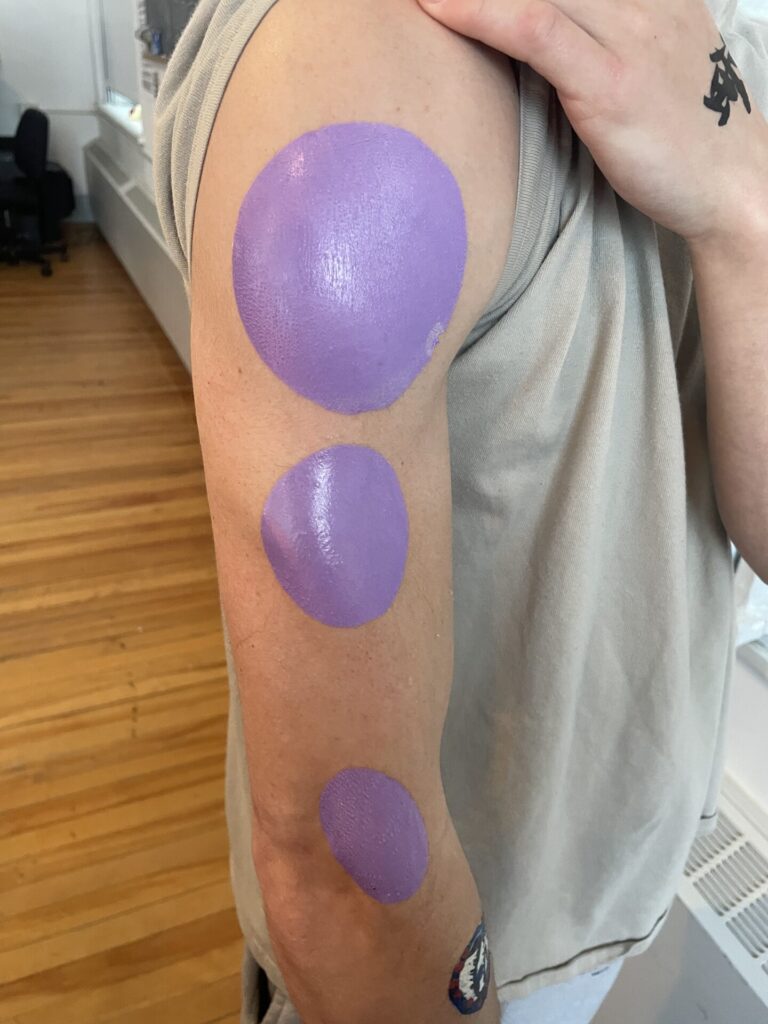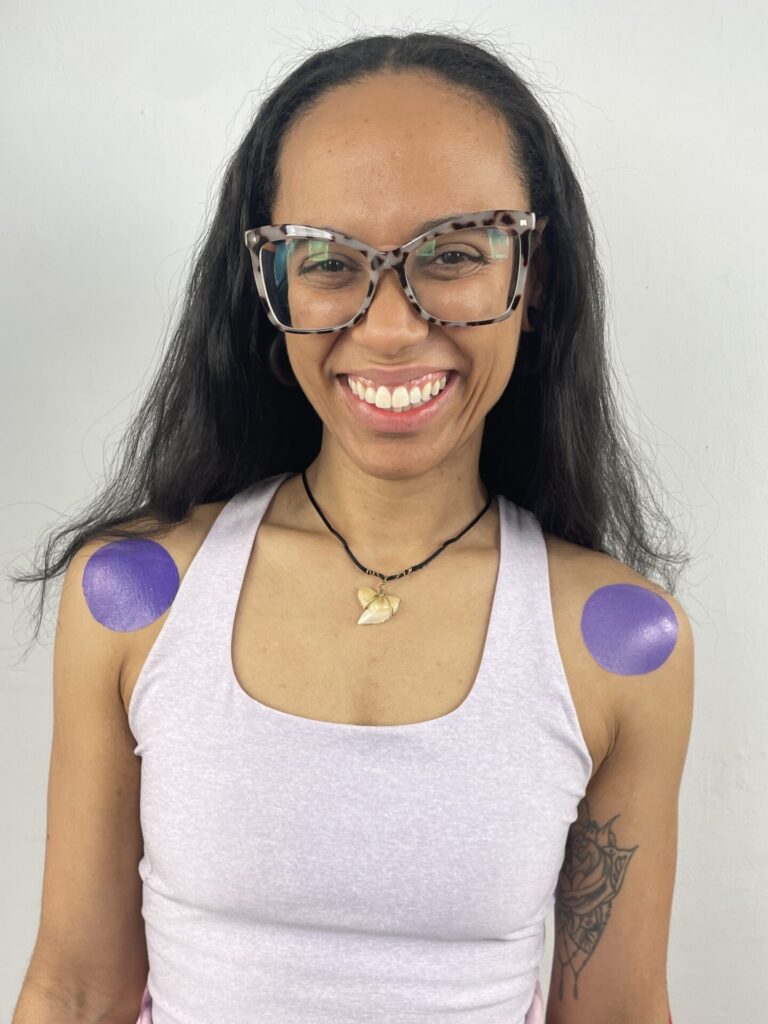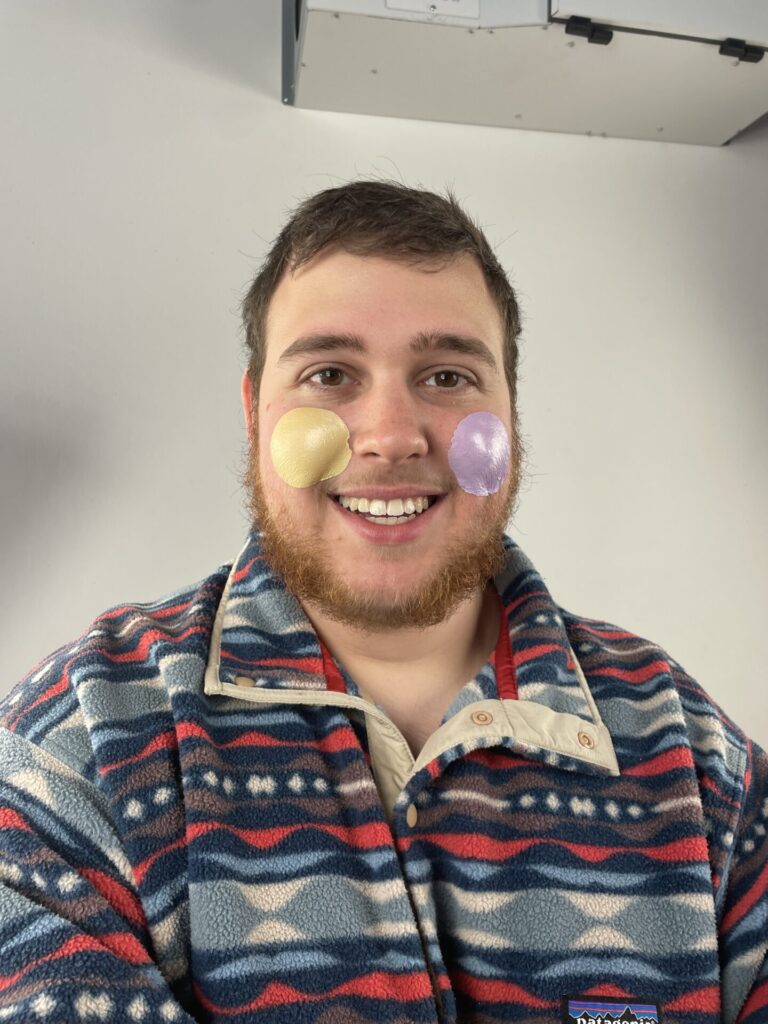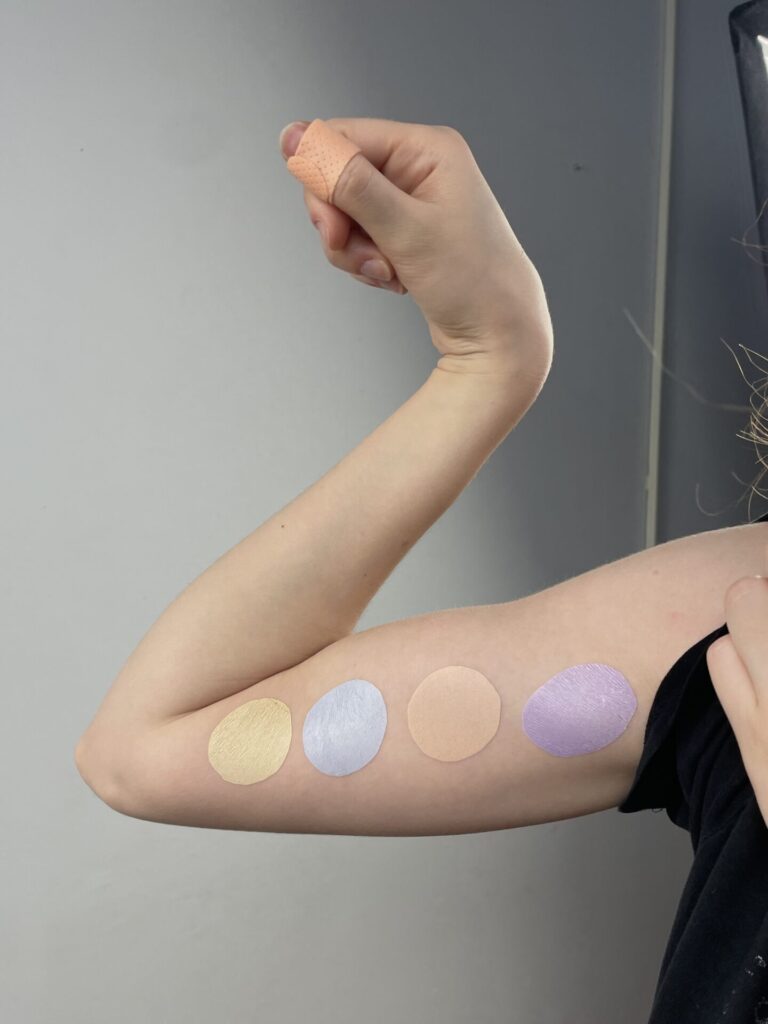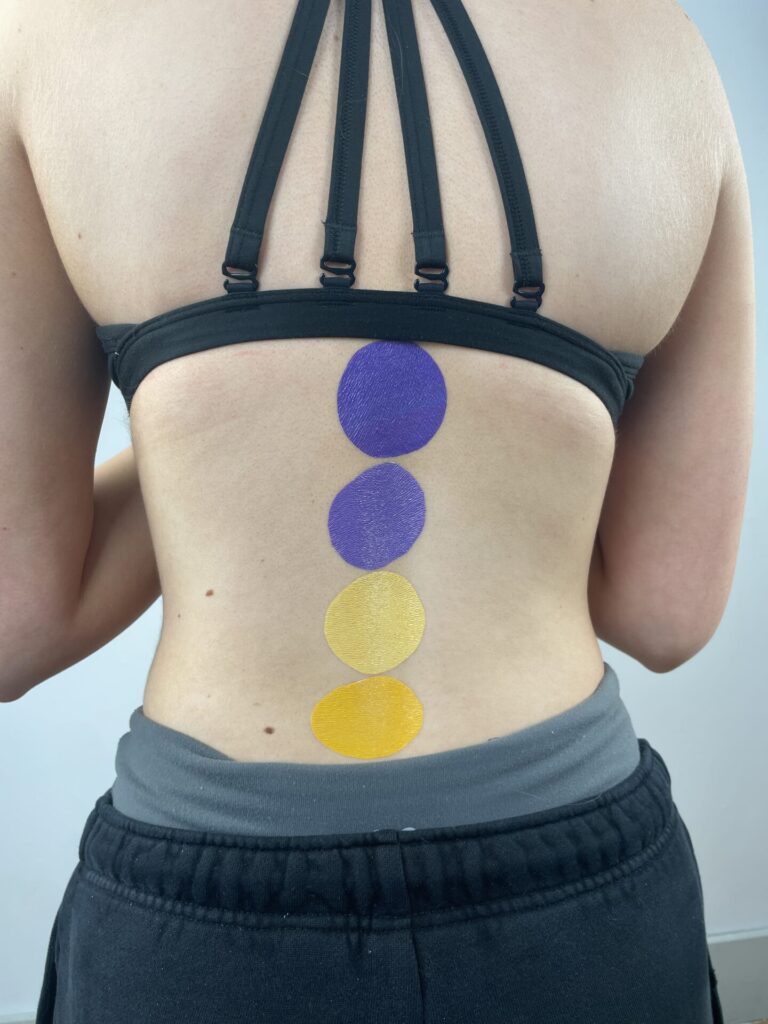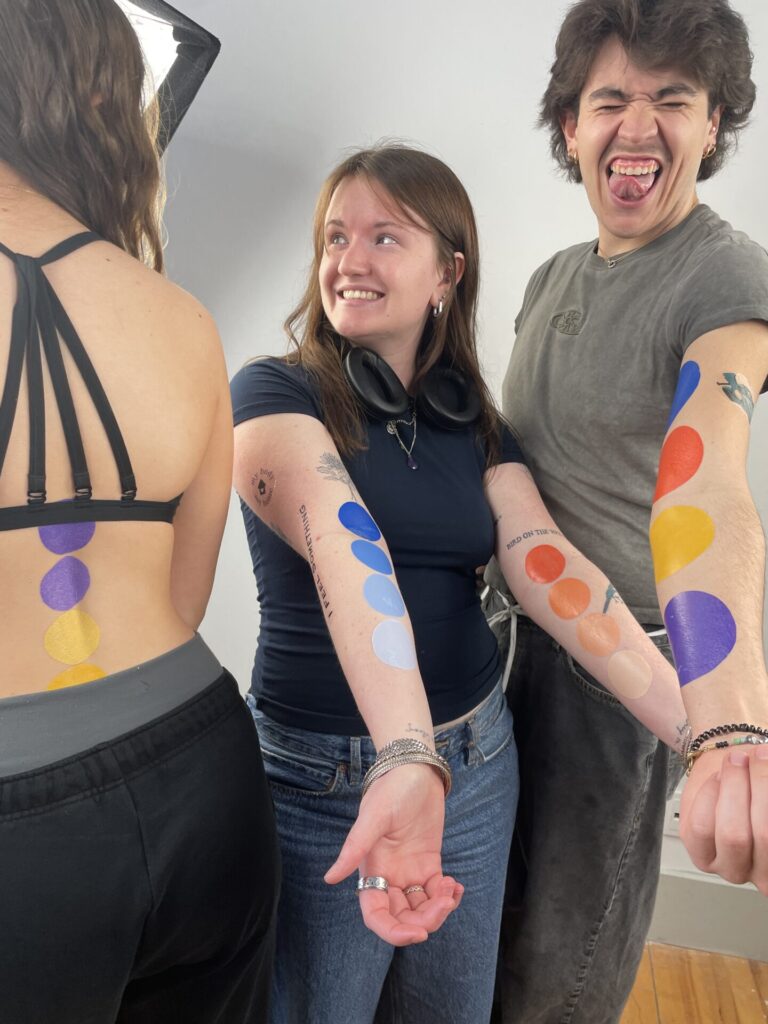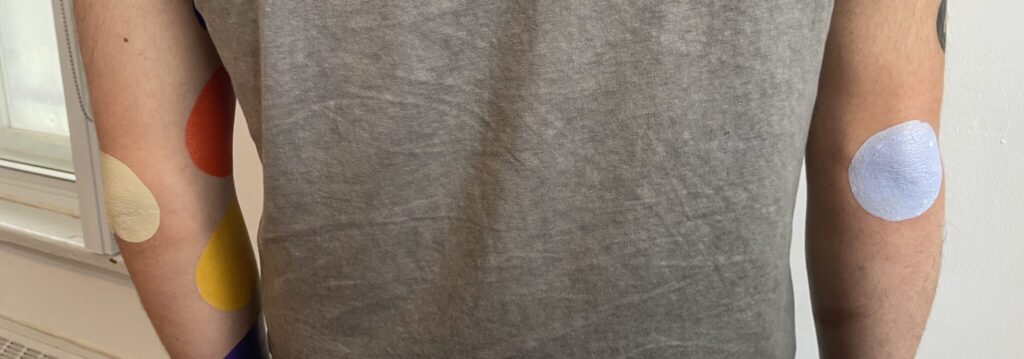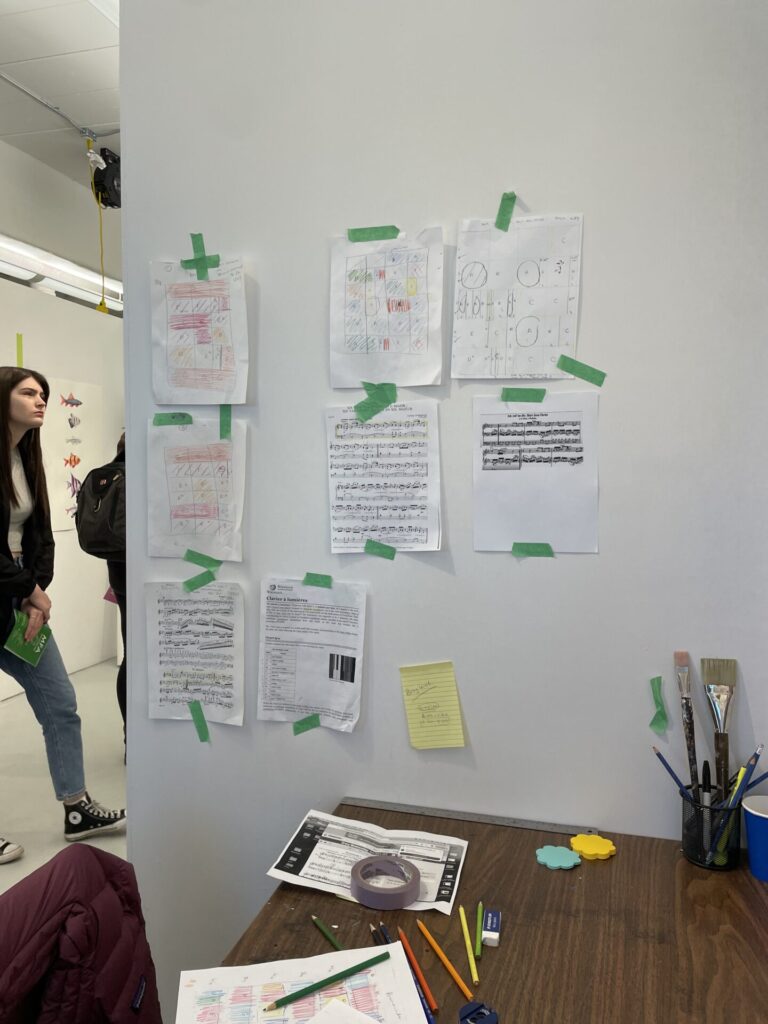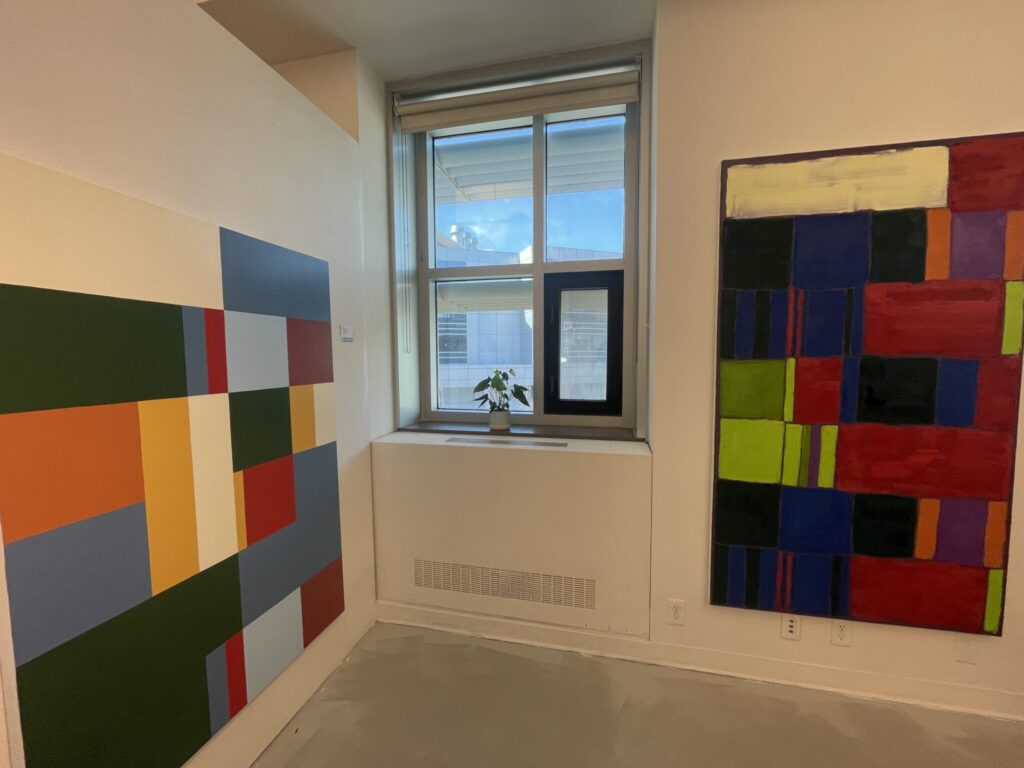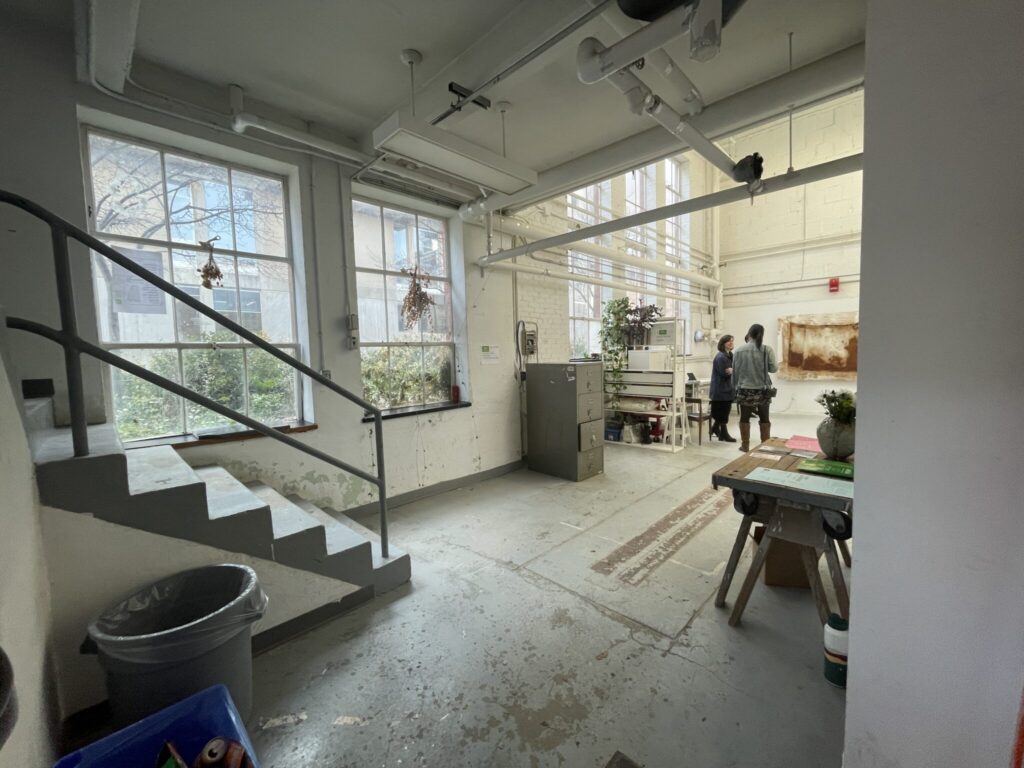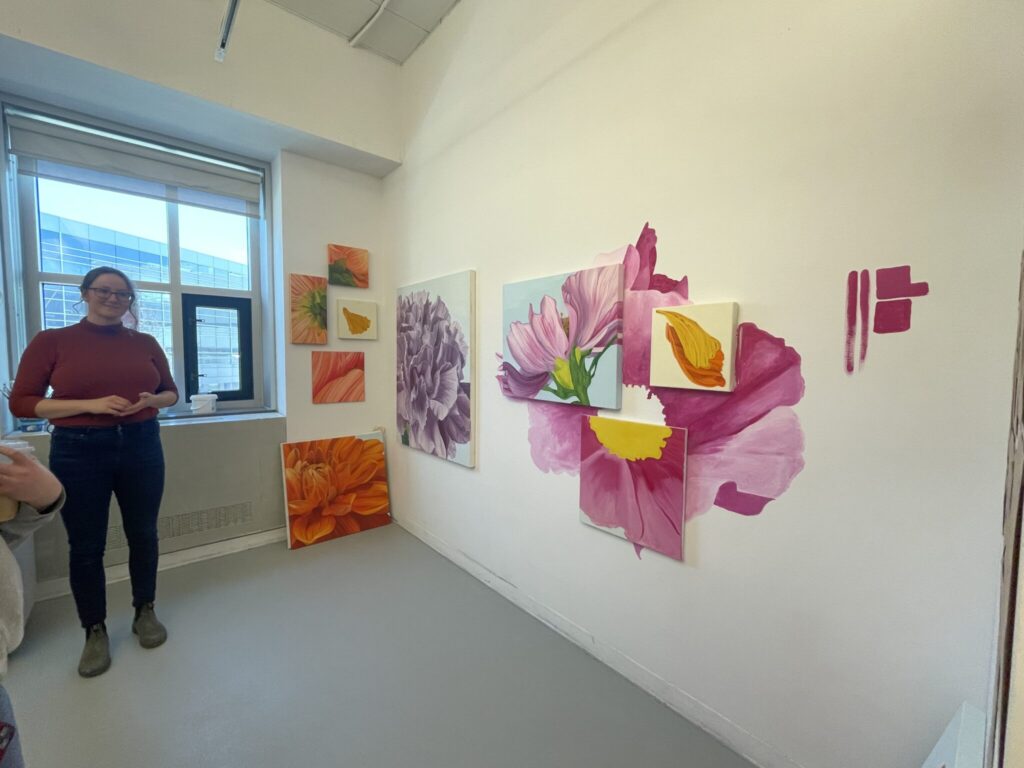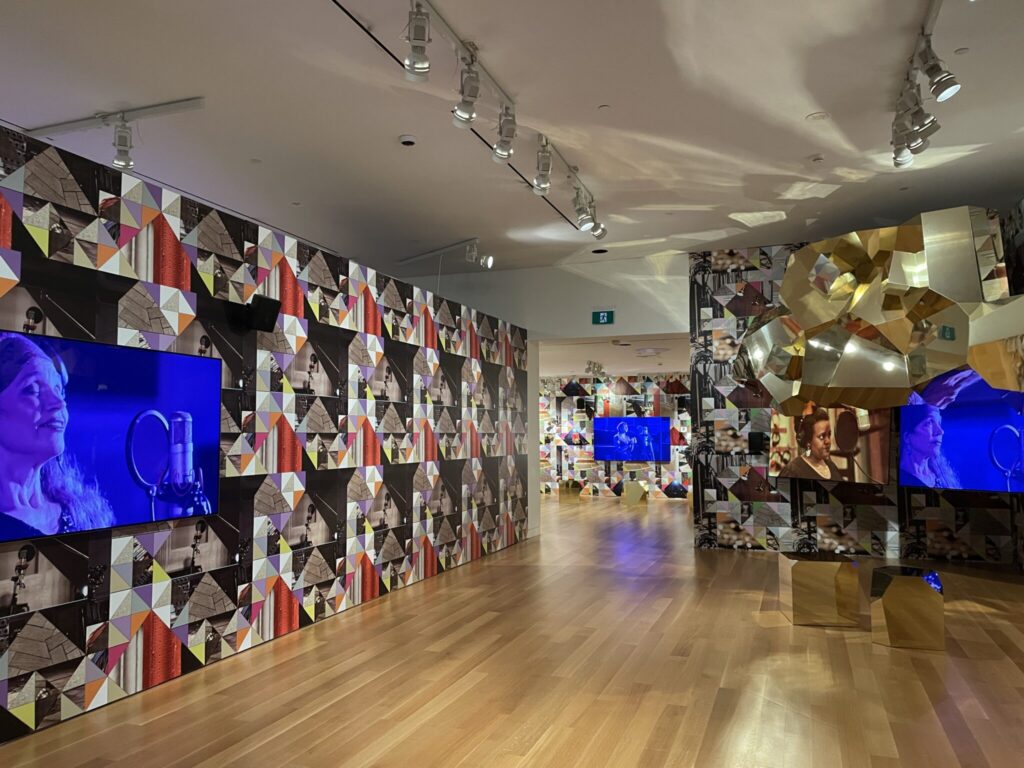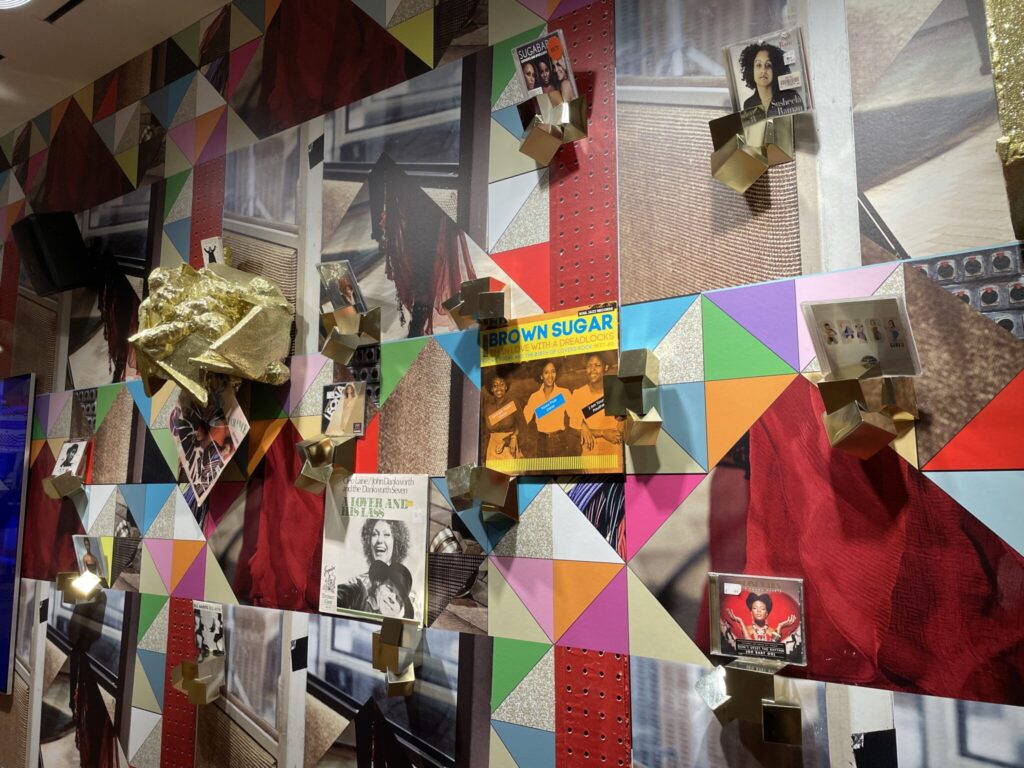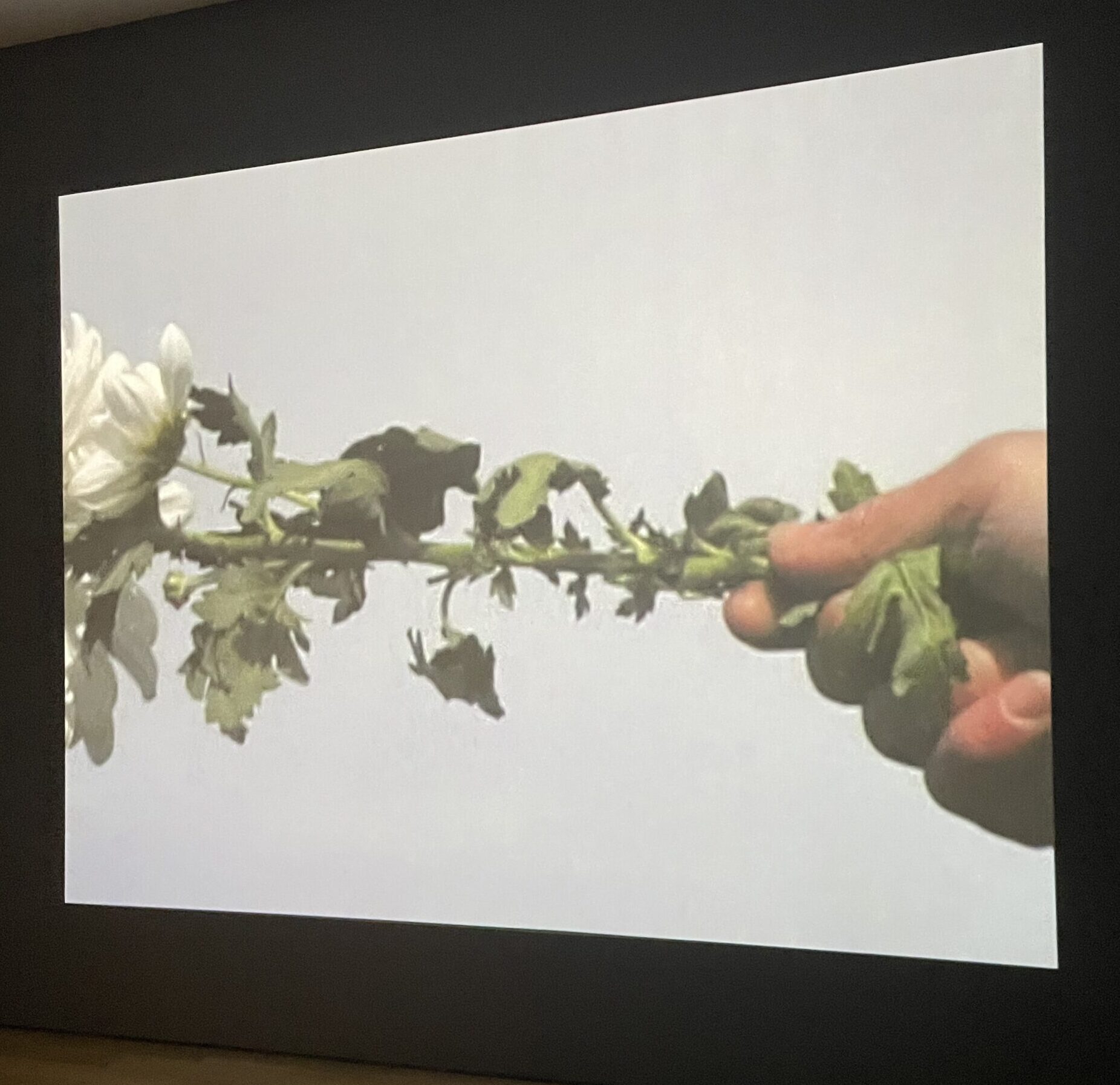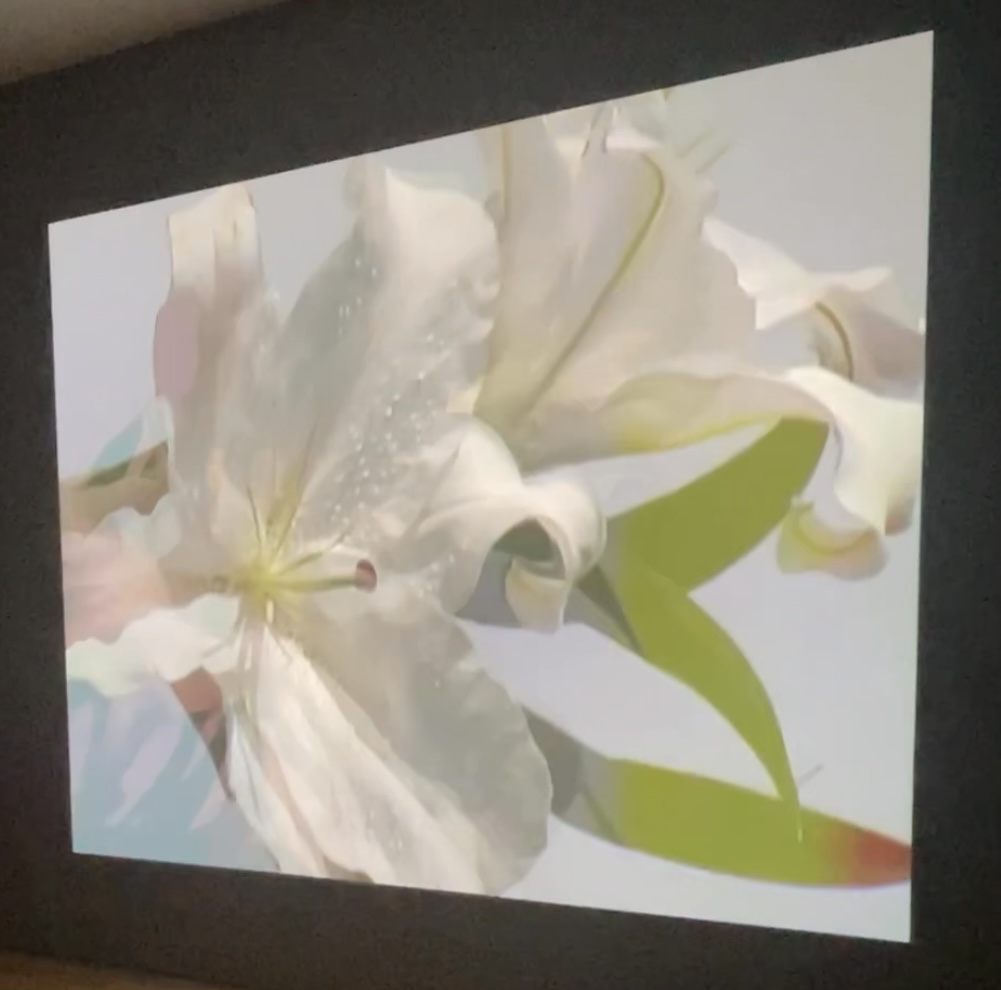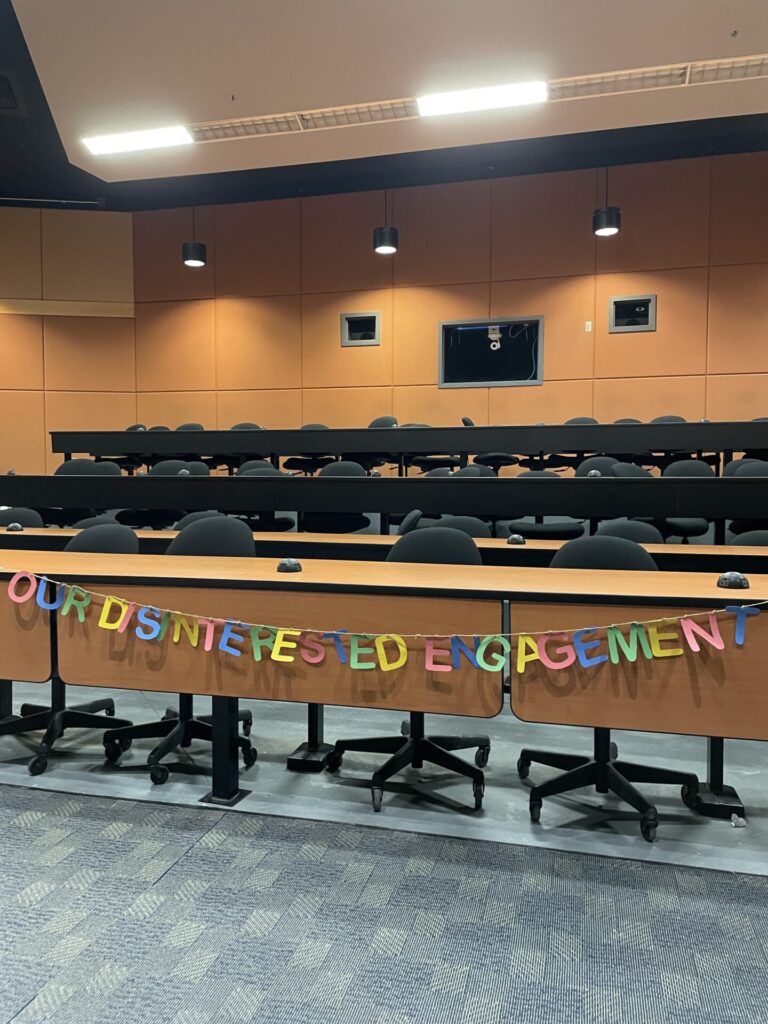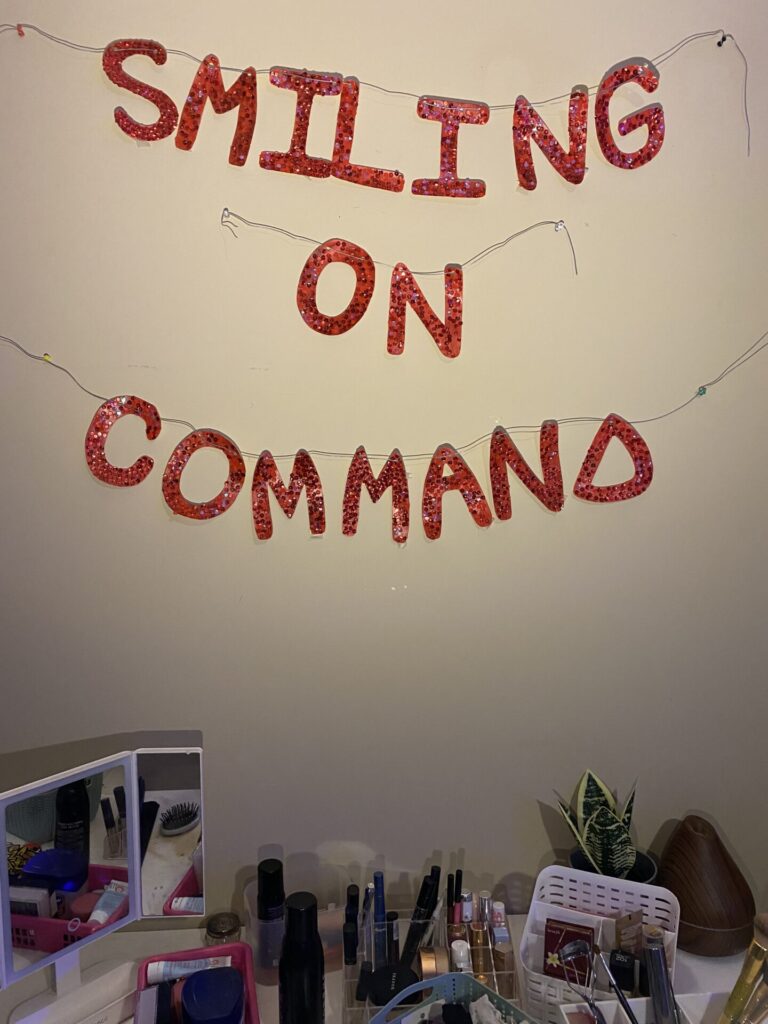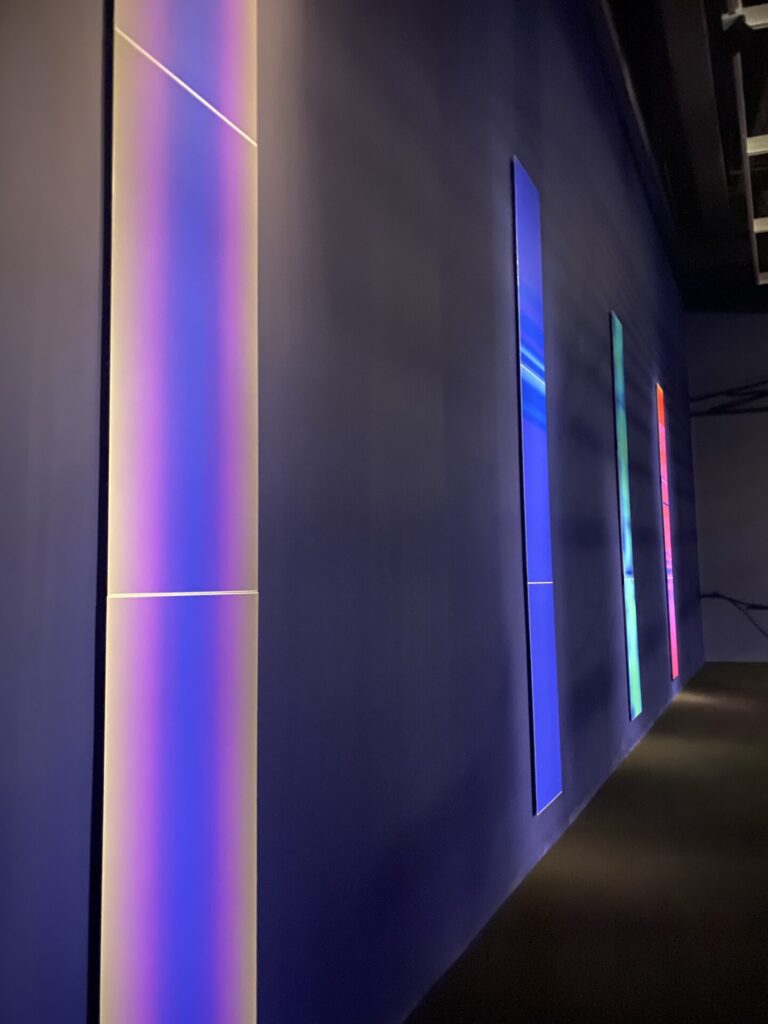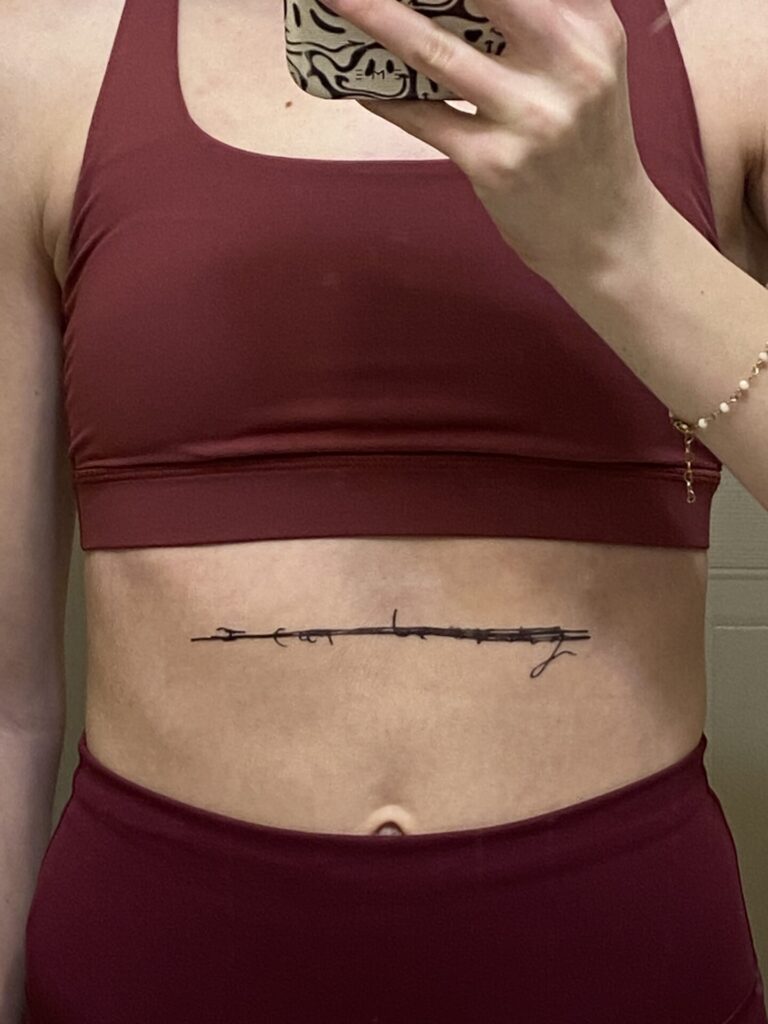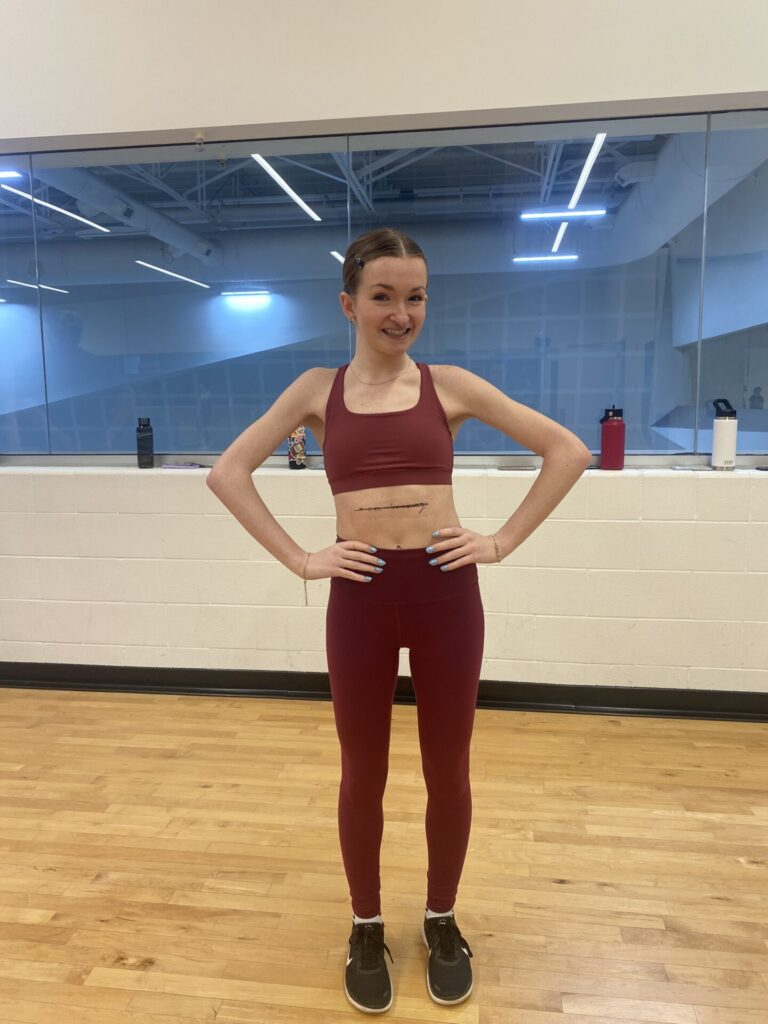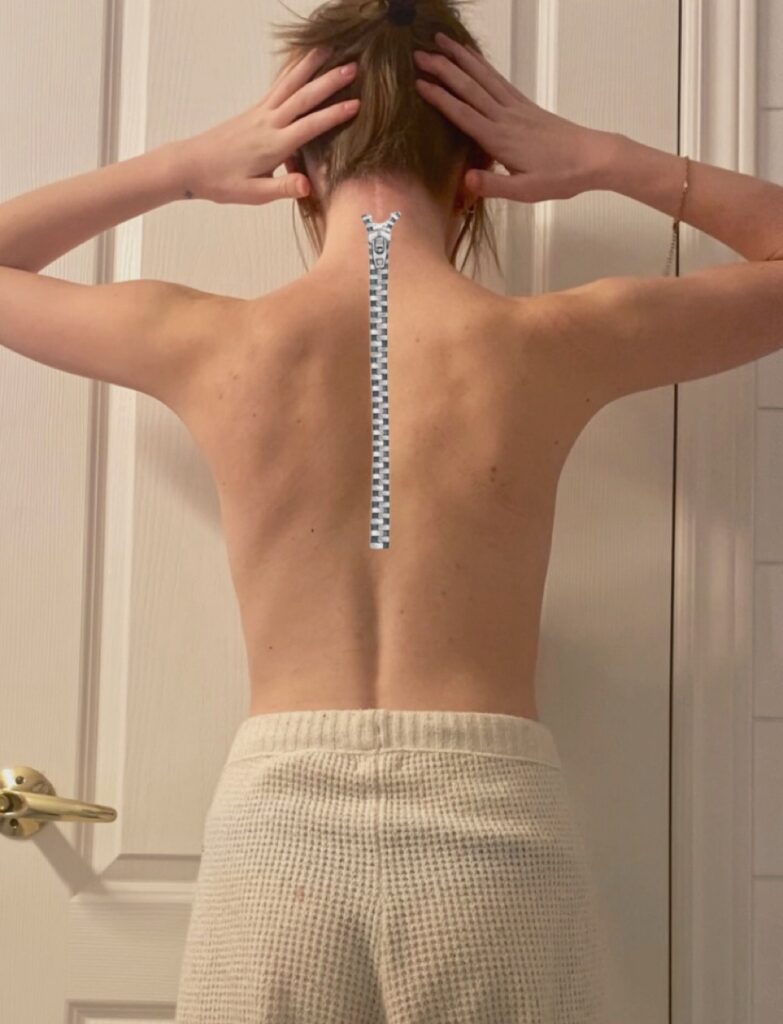Week 01: Banner text inspired by Tammer-El-Sheikh, Dirty-Words
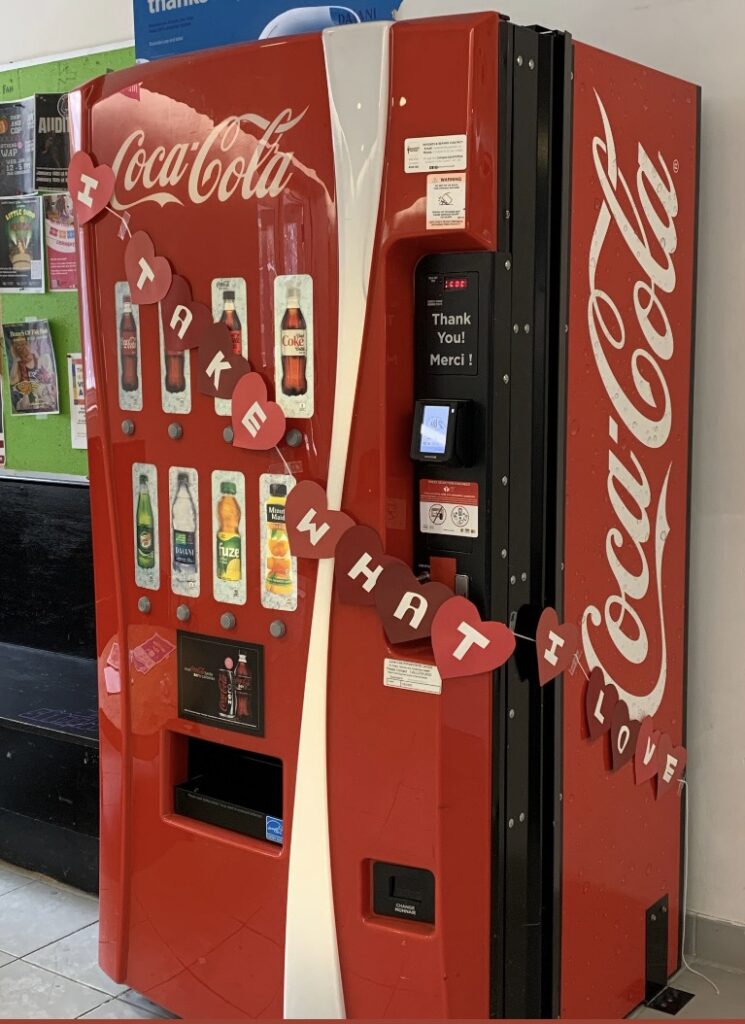
Pieces of text I considered
- I take what I love
- What is interesting
- Don’t be shy
- Depend on the feminist
What I chose:
I TAKE WHAT I LOVE
- Personal context
- For an artist (I take what I love and make art)
- Could be commercialized depending on installation (I take what I love… out of this vending machine)
- Bold letters
- to stand out on red cardstock
- playing with shades of red
- White letters hand cut
- to stand out on red cardstock
- Love →red → hearts
- overall I think this a funny and fun take on commercialism, commentary on mass production and mass consumption.
- I have a love of pop art ironic in the case due to the name brand “pop” machine.
- “I take what I love” could be seen as a threatening statement rather the comical
Postman reading
Quote #1
“Another professor noted that “kids come to the conclusion that TV is almost exclusively interested in presenting show business and sensationalism and in making money. Amazing as it seems, they had never realized that before.”
- Many popular competition reality shows of the 2000s presented this idea (of “how business and sensationalism and in making money”)
- MTV
- If we are specifically talking about the past 10 years I think this quote can be applied to kids and people my age watching and wanting to be YouTubers or tiktokers. With the entertainment of social media people today seem to be more aware of making money from content/ videos online/ and going viral
- I feel people today are more aware of the money-making of show business in a way (or at least that is how it appears in this text)
- On this subject of sensationalism in making money and going viral, I think about America’s Funniest Home Videos, many home videos submitted to the program feature the same content as funny videos on social media (ex. A dog waiting for their owner to say grace before eating dinner, a dad playing a harmless prank on a child.)
- On AFV you are purposefully submitting for the chance to win a cash prize but on social media, you are posting because “hey this funny thing could be viral!”
Quote #2
“Some disagreed with his assessment that TV is in complete charge: remote control, an abundance of channels, and VCRs and DVRs all enable you to “customize” your programming, even to skip commercials”.
- Documenting the changes from 1985- 2006
- 2006-2025 the same distance
- When I was a kid my relationship with TV was very as described, I remember when my parents switched from strictly cable to Bell. I also remember recording my favourite shows and watching the same episodes over and over. DVDs were also popular in our household but didn’t have many, still we constantly watched them (I was obsessed with Disney’s The Little Mermaid, and my younger sister watched Wreck-it Ralph every day for months).
- I remember being even younger than that (pre-2006). We had a VCR, and I used to watch VHS tapes of Beauty and the Beast, Monster’s Inc., and Blues Clues
- Over winter break my parents got a Disney+ subscription. So, I rewatched some childhood favourite shows and movies, for example, Beauty and the Beast: The Enchanted Christmas, and watching it weirded me out, because I remember watching the VHS of the movie as a kid. I also have a snapshot of a memory of being very young and watching the tape by myself alone in a room and I was alone re-watching this movie via Disney+ in 2024 (not 2004-5).
- Also watching the movie in 2024 I was looking at a flat screen (one my parents probably purchased in 2013) but in my memory about 20 years before then it was a tiny Tobisha tv (which my parents still own and use thanks to a Rogers box).
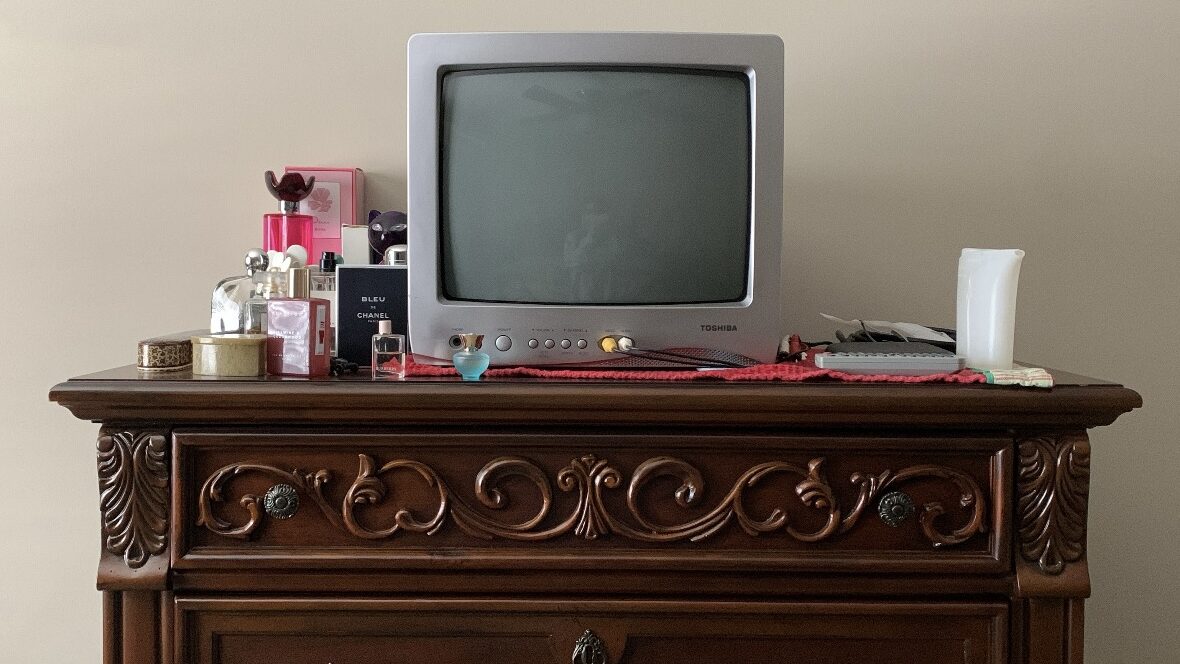
Week 3: SART 4810- video art idea & notes
★Vintage cartoons + tik tok content (that I tend to consume)★
- A subset (?) of video culture is making videos compilations of funny moments in, for example, a particular sitcom (compilation or clip show of a topic in a show)
- Tik tok: grwm videos, skincare impressions, transitions set to viral/ popular audios/sounds/ music
- Creators to pull from: Xowie Jones. Jasmine Le, Ryan Bailey Potter, Anna Vu/Glossy Gurl, The Lipstick Lesbians, Ivan Lam
- Grwm for school – TikTok compilation 🎀 #13
- Cartoons: Betty Boop, Minnie Mouse, Silly Symphony, Loony Tunes, Pink Panther,
- Vintage cartoons were originally produced to be shown as a “short” before a feature film (20s,30s, 40s,)
- I was thinking of this idea in relation to the student example of Tiktok grwms alongside the dog video
★Mixing video with old sitcoms ★

- Sitcoms: Threes Company (1977-1984), The Golden Girls (1985-1992), Growing Pains (1985-1992), I Love Lucy (1951-1957)
- Threes Company & The Golden Girls are known for “adult comedy”
- Threes company often makes jokes about homosexuals, sex, sexual liberation,
- The Golden Girls also tackled these topics
- was revolutionary for being a comedy about single middle-aged women, and for episodes dealing with topics of the time such as homosexuality, AIDS, etc
- Streamers and podcast guys making derogatory jokes or statements about the same topics that Sitcoms reference
- ex mentioning women being housewives
- being against pronouns etc
- Threes Company & The Golden Girls are known for “adult comedy”
★Materials and References★
Web series: UNHhhh (Starring Trixie Mattel and Katya Zamo)

- fan made UNHhhh best moment comp
- UNHhhh Ep. 142: The Weather
- Trixie and Katya quoting movies/tv shows on UNHhhh (part 2)
- “It’s a show about nothing and yet it’s everything”
- “A show where we talk about whatever we want to talk about because it’s our show and not yours”
- They are assigned a topic and humorously tackle it
- and veer off-topic most of the time
- For free on YouTube
- Production Company: World of Wonder
- Main editors: Ron Hill and Jeff Maccubbin
- Jeff Maccubbin’s video editing/ mixing on Youtube
- Green screen
- Much of its beauty and appeal is in the editing of the show
★Example 2?
★The process & final produce★
Rip music and video from YouTube
- Layering of audio and video
- Moments of overlapping clipped audio from the older piece of media the on-screen visual being the more modern/ current video clips
- Clips of the older media playing alongside new videos/ Tiktoks
- Example: A cartoon character getting dressed vs an outfit check on Tiktok
- Clips playing at the same time on the same screen
- It’s also possible to find clips for audio of moments from tv or cartoons that become popularised as a stand-alone clip yet many do not know the source imagery
Sart 4810 field trip blog post
The AGO (feat The Culture: Hip Hop and Contemporary Art in the 21st Century) & The Power Plant
Sonia Boyce





The Culture: Hip Hop and Contemporary Art in the 21st Century
One of the first things I saw in this exhibition was titled TRIBUTE written in bold gold letters. Comprised of clothing, tributes, respects to reference, honour, influence and “create networks of artistic associations”. Notable artists and styles of hip-hop canonization reference moments of artistic excellence and historical impact through artworks, songs, and rappers.
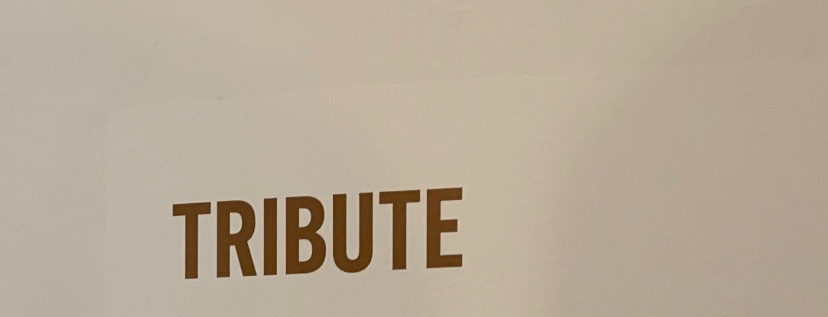
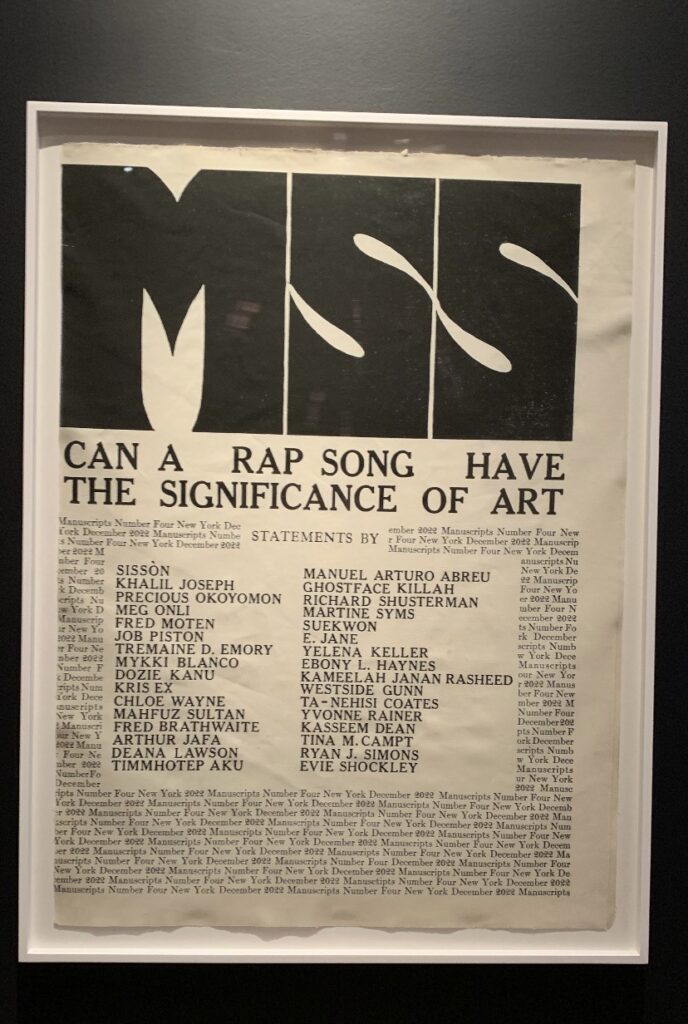
Alvaro Barrington, They have They Can’t (2021) hessian (burlap) on aluminum frame, yarn, spray paint, concrete on cardboard, bandanas.

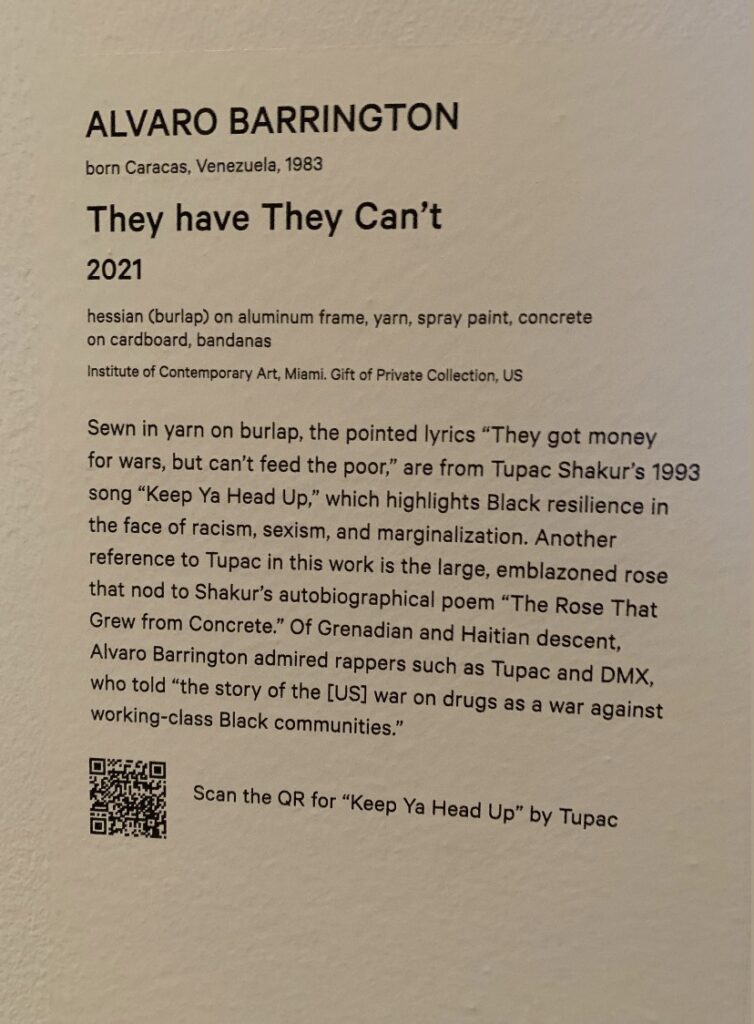
- one of my favourite pieces of the day
Yvonne Osei, Extensions (2018) single-channel video (colour, sound, 8 min 4 sec, looped)


- communicating a historical group identity
- geography
- a political form of self-presentation
- Hair, length, braiding
- braiding in historical context (within slavery on North American soil, the transatlantic slave trade etc)
- weaving knotting
- The sitter engages and poses for photos with passersby, verbally and nonverbally
- being with the land of Ghana and the self-representation of


Devan Shimoyama, Cloud Break (2022) materials: Timberland boots rhinestone, silk flowers, epoxy resin, chain. Courtesy of the artist and Kavi Gupta Gallery
- an intriguing take on portraiture (by a queer black artist!)
Craig Boyko, Snoop Dogg 213 (2004) archival pigment print
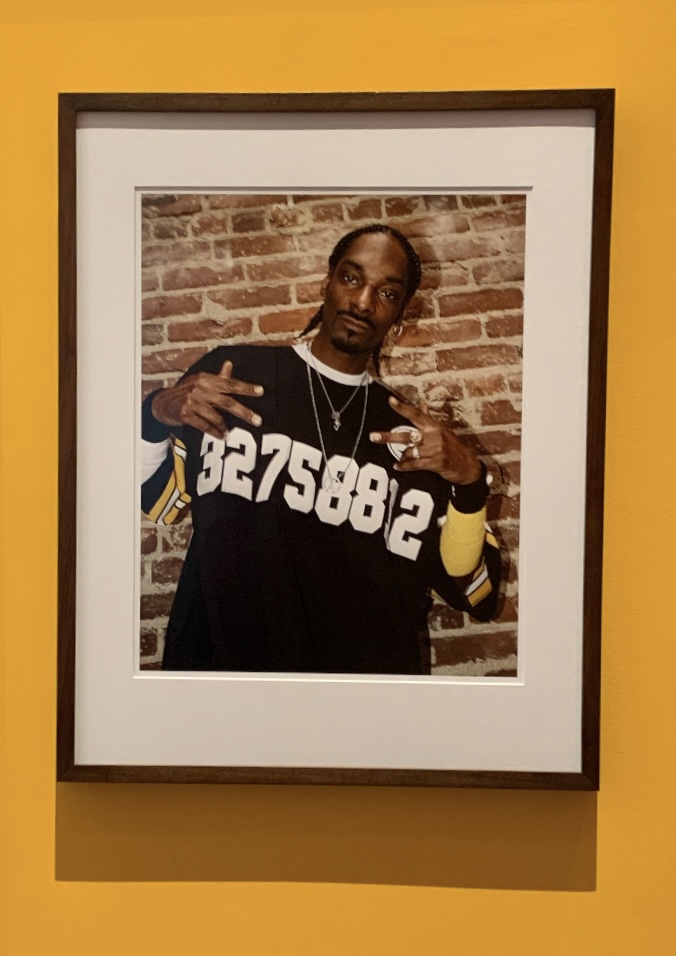
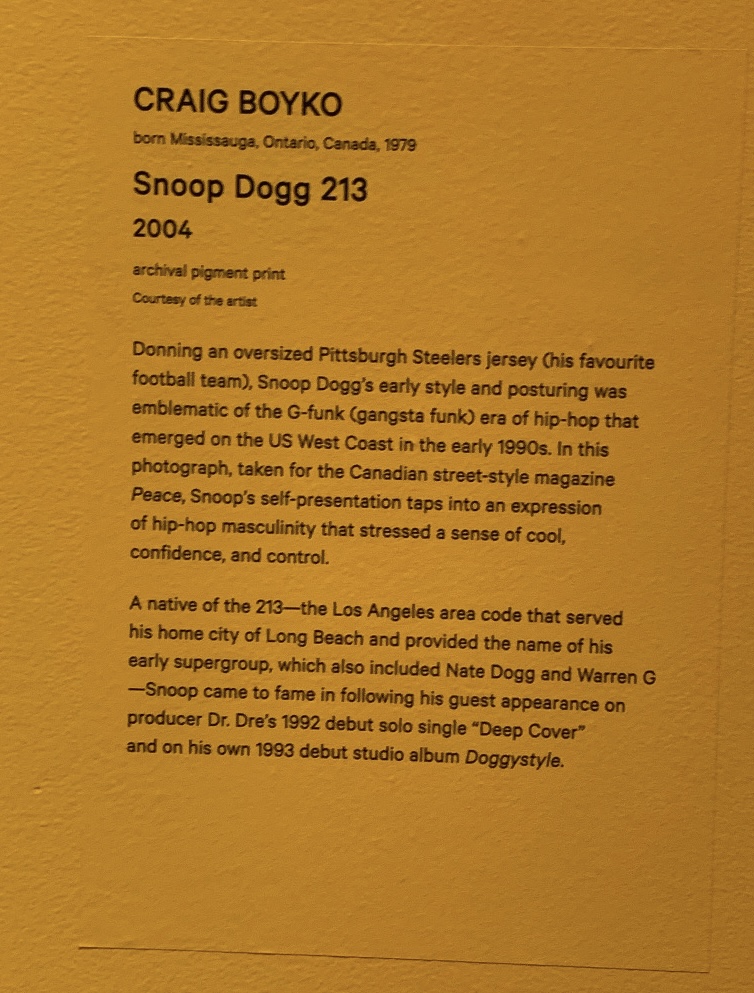
Graffiti art and Language


The Power Plant (Feat Lap-See Lam, Floating Sea Palace, 2024)
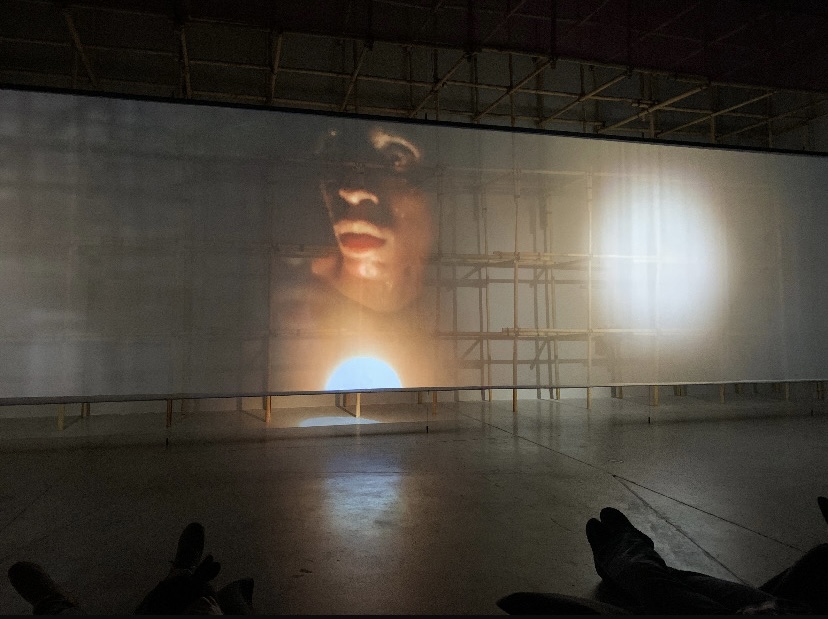
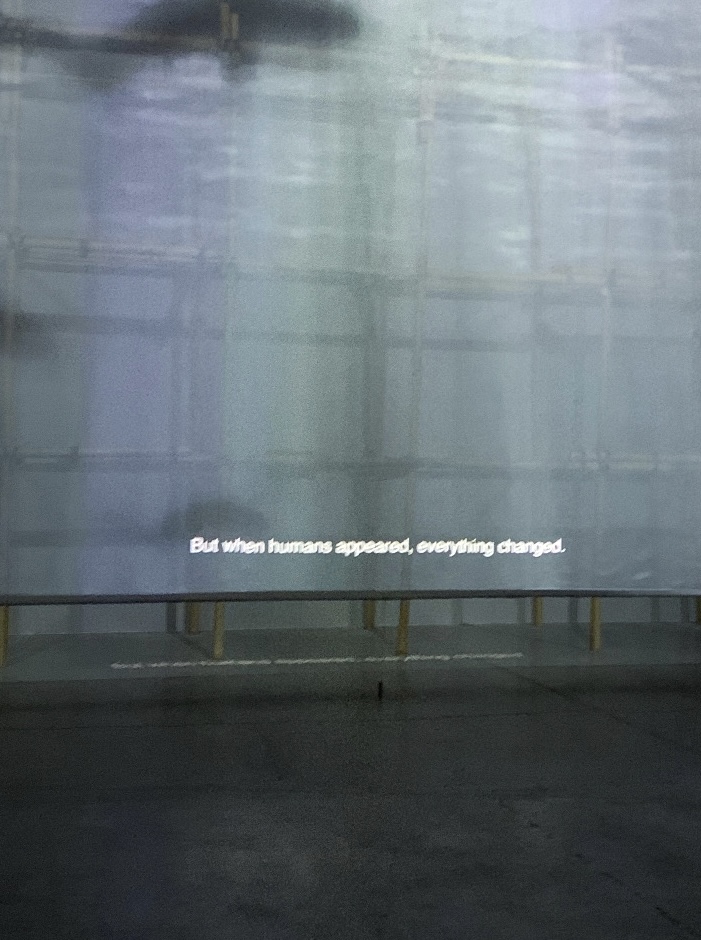
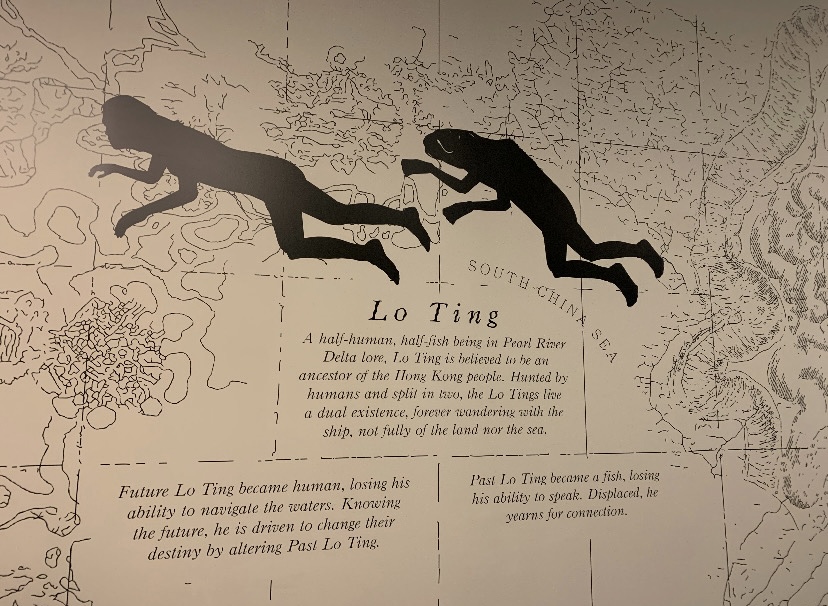
- Lam draws on the folklore tale of Lo Ting, a mythical human-fish hybrid, who is believed to be the ancestor of the Hong Kong people.
- Lo Ting longs to return to his former home Fragrant Harbour and appears to, unknowingly summon a dragon ship
- The ship embodies the mistranslation inherent to experiences of dislocation, and the complexity of searching for belonging.
- Lap-See Lam often draws on traditional storytelling form to create works
- simultaneously reflecting on her own family history of migration from Hong Kong to Sweden, both to claim and complicate cultural heritage.
Other favourite pieces from the AGO



Left: Guido Molinari, Multinoir (1962) acrylic on canvas. Gift from the McLean Foundation 1963 Middle: Barbara Kruger, Untitled (Jam life into death) 1988, photographic screenprint on vinyl Gift of Ydessa Hendeles, 1998 Right: Andy Warhol, Campbell’s Soup II (Tomato-Beef Noodle O’s) 1969, screenprint on paper, Gift of Morton and Carol Rapp, 2007



In the Thomson Collection of European Art we saw many pieces we’ve been looking at in Art History Italian Renassiece including a portable triptych altarpiece which was likely originally positioned in a bedroom say on a nightstand or dresser.
Video art project:
H/W Bridget Moser “My Crops Are Dying But My Body Persists”
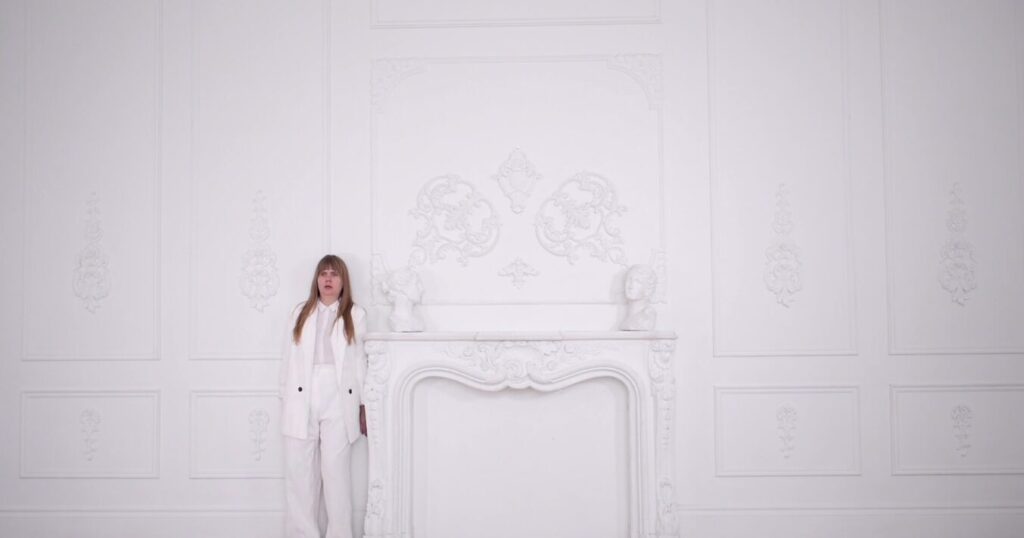
From the video
- “… I want any type of feeling that will distract me from-”
- In the dialogue Moser intentionally cuts herself off
- This particular quote really hit me in the moment as I found myslef watching this video (and attempting to complete this post/assignemnt) as a way of distracting myself from just having a rather annoying email while attempting to still be productive in my day.
- video/ art/ modern media/ social media as a distraction from the now
- As a distraction of the now it could allude to the negligence of social and political issues as they come across the news, social media platforms, and discussions where a person avoids the topic at hand
- Indulging in human pleasures in multiple forms to distract an individual
- The couch → couch potato
- Is braiding spaghetti also a distraction from the now?
- Does beans in glove on a skull statue another distraction or does it symbolise human touch and human intimacy?
- Roses and hot dogs→as the artist/ performer runs the tips of her fingers over this alludes to sexual connections of human genitalia and stimulation
- Again emphasizes human touch, intimacy, and false touch/stimulation
- Touch which induces shame
- “Does this look like some kind of joke to you?”
- While demonstrating a classic yet phallic joke to the viewer
- Appropriation of “modern art”
- The minimalistic sort of HomeSense finds
- “My intentions are literally always good”
- Another performance of false human action/ belief
- Insincerity
- “What do you like about me?” → alluding to social media, accusatory
- The colouring of the nails, clothing, background and props create a perfect cohesive colour palette which could invoke an idea of the pleasantness of peace, yet the content is shown in rather absurdist and uncomfortable/ unconventional
The article review of “My Crops Are Dying” highlights a culture of privilege, […]. To those who enjoy the comforts and privileges that whiteness affords—open your eyes”. A sentiment expressed throughout the video in several iterations from white on white, protruding whiteness, and referring back to the white fragility and privilege.
- White on white→ to be unseen and unheard
- Poking and prodding at white privilege
- A mask → a facade, the act of being someone else, social media presence, presenting falsity
- “I don’t know what I’m feeling but I’m feeling something”
- Maybe I’m the problem I’m trying to solve
- The human body, the physical and the metaphysical
- Highlighting a culture of white privilege
In the article, the author states: “Some of these odd visual comforts might recede after one has plumbed the video’s depths, the absurdity remains”. Some of these moments are best represented by the taking of and reconsidering tropes of internet culture.
- Slime moment/ oddly satisfying
- Appropriating or directly using Internet culture
- Slime or shaving cream or food items moving or being moulded in a certain way to present a visually appealing or oddly satisfying outcome
- A search for “a dopamine hit”
- The crocs also present a modern internet culture moment, once seen as ugly (And unsupportive shoe) the croc is now a regularly and unironically worn shoe
- Appropriating food videos
- The creation of food as aesthetically pleasing as a mouth-watering image is ruined by loonies and fabric softener
- The otherwise visually appealing set up of the backdrop, dishes, cutlery, and other food and drink items in the foreground
- The La Mer cream being spread on bread→that particular cream probably cost around 100 cad the idea of beauty products and food both being expensive and desirable commodified goods
- White on white→ presenting the idea of whiteness as commity or as desirable. White fragility, whiteness, white white white.
VIDEO ART
- the idea of The Golden Girls being able to talk about issues about the lgbtq community and having a fan base that is made up of queer people/ homosexual men
- consuming queer media/ podcast
- the contextualization of classic sitcoms in today’s age.
A Portrait of Parents
- The idea stems from childhood cartoons, specifically pre-school age cartoons focusing on clips about child-parent interactions
- Sweet clips and partly about child-parent interactions I don’t have the experience of having.
- showcasing young children and their own personal problems in the world.
- Shows used Dora the Explorer (first aired in 2000) Caillou (first aired 1997, 5 seasons) Little Bear ( first aired 1995) The Berenstain Bears (first aired 2002) Franklin (first aired in 1997), Timothy Goes to School (2000), Arthur (first aired 1996, 25 seasons).
- I felt I had to choose Dora as the first clip because I was obsessed with Dora as a young child, seriously I had a Dora table, chair, towels, talking dolls, and my third birthday party was Dora theme. I chose to have the Dora clip include her asking a question and waiting for the audience’s response. As children we excitedly respond to the boxy TV in our living room, in a room full of people in their twenties we chuckle to ourselves nostalgically.
- Something I thought about a lot while working on this is that I remember turning 7 years old and looking over my birthday cake candles about to make a wish and thinking “I have to be grown up now, I can’t watch Dora anymore and I can’t call my parents mommy and daddy”. I remember that so vividly yet, I don’t remember anyone saying anything to me about having to do these things at the age of 7.
- here’s another story that I think sums up my project pretty well: I think about standing between my aunt and my dad outside the Sunday school classroom when Dad asked what we talked about. Auntie Anne, my Sunday school teacher and my dad’s oldest sister said we talked about idolatry/ false idols, the idea that nothing should be worshipped instead of God. My dad said to me (something along the lines of) “That means you shouldn’t worship TV”. And that always stuck with me. As kids my younger sister and I weren’t allowed to go out to play by ourselves and weren’t allowed to go visit our friends even if they lived down the street. As a kid, my Mom worked part-time so when she was home she was usually busy running the household. My dad (still to this day) rarely helped her, he also worked full-time. So I watched a lot of TV. I came across a short video essay about a year ago about how lonely children gravitate towards watching TV for a sense of comfort, connection, or friendship. The speaker in the video admitted that as one of these children, now in her Twenties she always has TV or music or a Podcast droning on whenever she’s home alone. I find myself doing the same, I listen to the same Podcast episode over and over and re-watch TV shows, or at least have them on while I, for example, do the dishes or clean my bathroom.
Artist Multiple Tattoos
Demo/ preview to tattoo design day
Taking inspiration from the provided artist Micah Lexier our group thought it would be funny to do I can be wrong crossed out as a tattoo on clear paper. We did two versions one about four inches and the other about two.
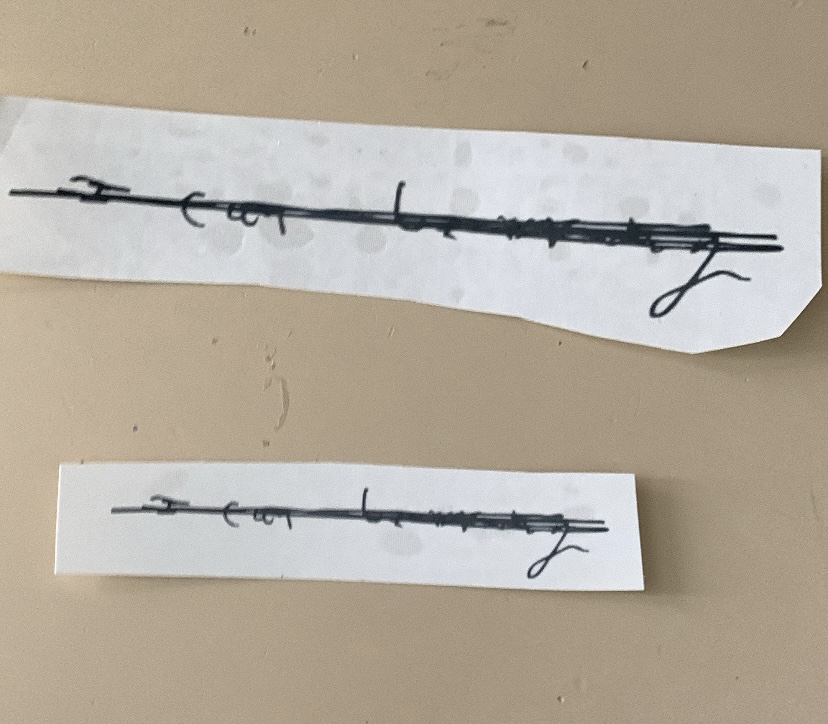
Inspired by Drag Queens like Trixie Mattel, Bianca Del Rio and Tammie Brown we decided to create a set of tattoos to look like Drag makeup. I thought a lot about Trixe’s eyeshadow/ eyeliner look and her signature contour/blush style, as well as Tammie’s signature eyebrow shape and the way Drag makeup artists over-draw their lips. I also liked the idea of a heart-shaped blush and that you could “be kissed by a Drag Queen”!
Drag makeup seems to be a lot about exaggerating makeup styles, drawing contours can be done in a straight line, anyone can overdraw their lips, and maybe people enjoy wearing huge winged eyeliner. It can be an over-exaggeration of makeup trends which reinforces the gender f*ck of drag, of drag queens men dressed as women.
If I’m not mistaken I think we were the only ones to experiment with the white tattoo paper which gave a white/ pastel overlay to the tattoo design which I was surprised by. I think clear is the way to go but using the white on the hearts gave the hearts a more lilac colour instead of the original magenta colour.
Tattoo designs and in-action



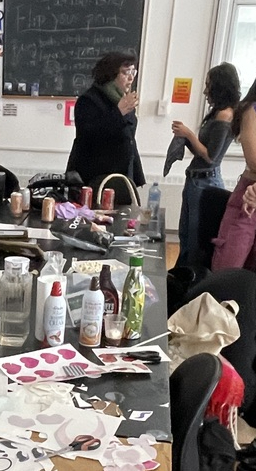

Trixie Mattel


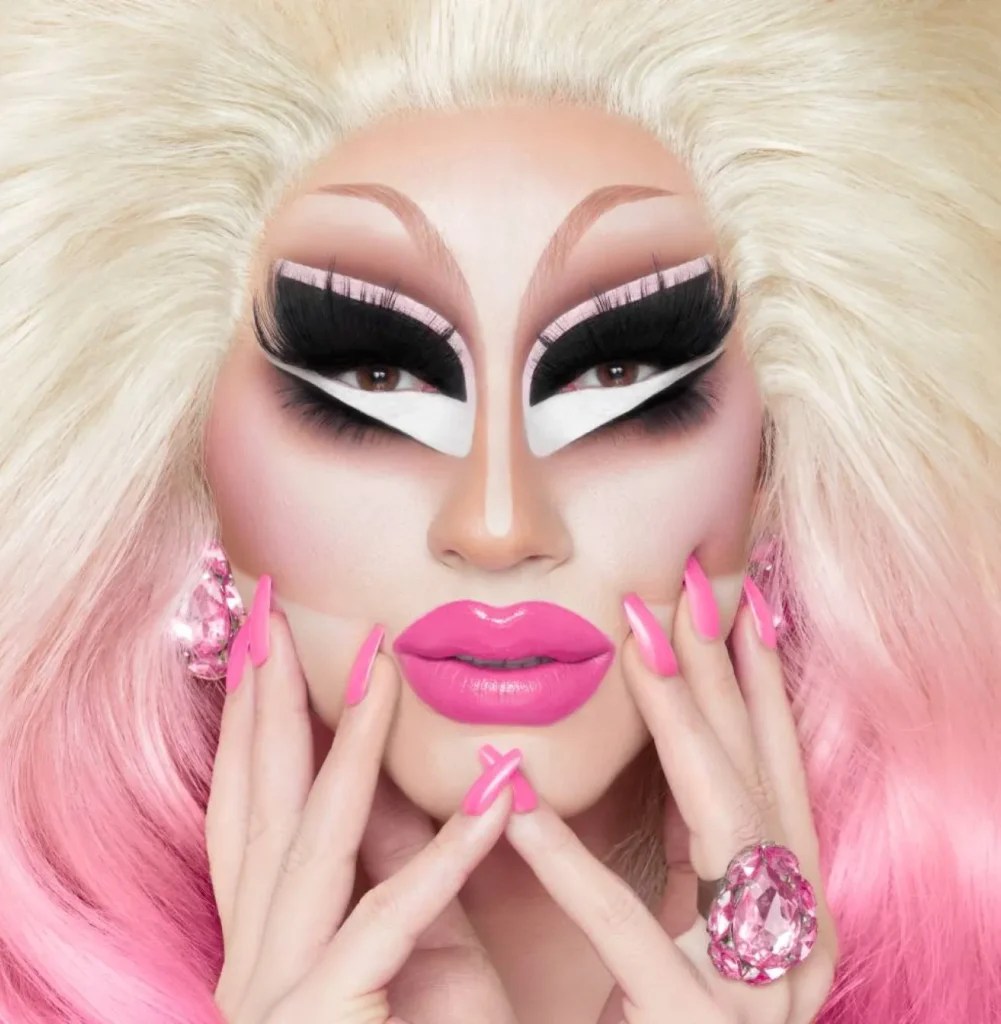
Bianca Del Rio
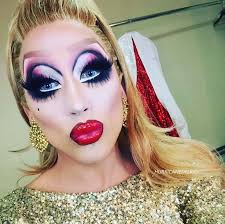
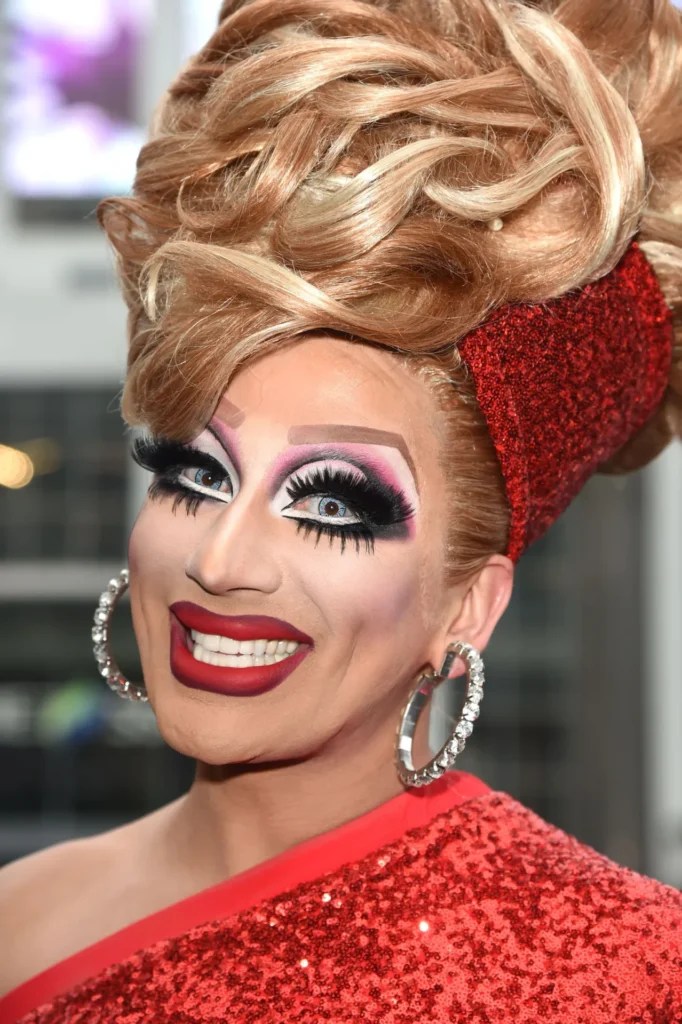
Tammie Brown
